Lou’s Views
“Unofficial” Minutes & Comments
BOC’s Regular Meeting
The Board of Commissioners’ Regular Meeting and Special Meeting scheduled for July 16th are canceled.
Lou’s Views
“Unofficial” Minutes & Comments
BOC’s Regular Meeting
The Board of Commissioners’ Regular Meeting and Special Meeting scheduled for July 16th are canceled.
Lou’s Views
News & Views / July Edition
Calendar of Events –
NA
 Discover a wide range of things to do in the Brunswick Islands for an experience that goes beyond the beach.
Discover a wide range of things to do in the Brunswick Islands for an experience that goes beyond the beach.
For more information » click here.
Calendar of Events Island –

Concerts on the Coast Series
The Town’s summer concert series calendar has been released! Live performances featuring local musical groups will temporarily be held at the Bridgeview Park picnic pavilion on Sunday evenings from late May to early September. The concerts are free of charge.
For more information » click here
The park will be blocked from vehicular access beginning Saturday evening. The splash pad will be closed on Sundays and the multipurpose court will close at 3:00 p.m. each Sunday. No seating will be provided so everyone should bring their own chair for the event.

Tide Dyed Program
The Tide Dye program will be held on Tuesdays between 1:00 to 2:30 p.m. at Bridgeview Park picnic pavilion. Participants must be in line by 2:00 p.m. to participate because the process takes approximately 30 minutes to complete. Fee is $7 per shirt for youth sizes through Adult XL and $10 per shirt for 2XL. Payment via cash or check only.
.Beginning June 11th and continuing through August 13th
 Turtle Talk
Turtle Talk
Two programs both are held every Wednesday during the summer at Town Hall. Children’s Turtle Time is at 4:00 p.m. with crafts, stories and activities for children ages 3 – 6. All children must be accompanied by an adult. Turtle Talk is an educational program at 7:00 p.m. for everyone else. (Beginning June 19th)

Summer Day Camp Program
The Town of Holden Beach will hold summer day camps on the following dates:
Thursday, July 18th –
Putterin Around – Join us for putt-putt and ice cream at Fantasy Isle. $12 resident/$17 non-resident; ages 6-12; 10:30 a.m.-noon. Drop off and pick up at Fantasy Isle.
Thursday, July 25th –
Sliding through Summer @ Magic Mountain Waterslide- $25 resident; $30 non-resident; ages 6-12; 10:00 a.m.-noon. Drop off and pick up at waterslide.
Thursday, August 1st –
Fun in Color Art Camp $10 resident/$15 non-resident; ages 6-12; 9:00 a.m.-noon at Town Hall
Thursday, August 15th –
Schools Almost Back Bash at the Splash Pad and Holiday A Polloza – We will briefly revisit holidays celebrated throughout the year with some fun games and end the day with a party at the splash pad. $10 resident/$15 non-resident; ages 6-12; 9:00 a.m. to noon at Town Hall
Register by emailing Christy at christy.ferguson@hbtownhall.com.
 Summer Picnic
Summer Picnic
To celebrate Parks and Recreation Month, the Town of Holden Beach will offer a summer picnic (indoors) to beat the heat. The event will be held Friday, July 26th at 11:30 a.m. Lunch will be provided. There will also be a dessert bake-off with the theme, “Classic Summer Desserts”. Email Christy at christy.ferguson@hbtownhall.com by July 19th with your name and the number of people in your party if attending the luncheon. Please indicate separately if you plan to participate in the bake-off.
Parks & Recreation / Programs & Events
For more information » click here
Reminders –
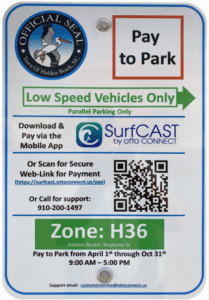 THB Newsletter (03/30/24)
THB Newsletter (03/30/24)
Paid Parking
Paid parking will be enforced starting April 1st in all Holden Beach designated parking areas. It will be enforced from 9:00 a.m. – 5:00 p.m. daily, with free parking before and after that time. All parking will use license plates for verification.
As a reminder, Holden Beach uses the “SurfCAST by Otto” parking solution. Annual passes are now available for purchase on the mobile app. You will also be able to purchase passes by scanning the QR-codes located on the parking signs for access to https://surfcast.ottoconnect.us/pay.
Rates for the 2024 season are as follows:
$5 per hour for up to four hours
$20 per day and for any duration greater than four hours
$80 per week (seven consecutive days)
$175 per calendar year for a single vehicle (annual passes)
Handicap parking is free in designated handicap spaces and only with a valid license plate or hangtag.
Parking rates can be paid via credit card, debit card or PayPal.
Visit https://hbtownhall.com/paid-parking for more information and to view a table with authorized parking areas.

Pets on the Beach Strand
Pets – Chapter 90 / Animals / 90.20
From May 20th through September 10th it is unlawful to have any pet on the beach strand during the hours of 9:00am through 5:00pm.

Solid Waste Pick-Up Schedule
GFL Environmental change in service, trash pickup will be twice a week.Starting the Saturday before Memorial Day through the Saturday after Labor Day: Pick-up is every Tuesday and Saturday from May 25th through September 30th
Please note:
. • Trash carts must be at the street by 6:00 a.m. on the pickup day
. • BAG the trash before putting it in the cart
. • Carts will be rolled back to the front of the house
GFL Refuse Collection Policy
GFL has recently notified all Brunswick County residents that they will no longer accept extra bags of refuse outside of the collection cart. This is not a new policy but is stricter enforcement of an existing policy. While in the past GFL drivers would at times make exceptions and take additional bags of refuse, the tremendous growth in housing within Brunswick County makes this practice cost prohibitive and causes drivers to fall behind schedule.
Solid Waste Pick-up Schedule –
starting the Saturday before Memorial Day (May 25th) twice a week
Recycling –
starting after Memorial Day (June 4th) weekly pick-up
Curbside Recycling – 2024
GFL Environmental is now offering curbside recycling for Town properties that desire to participate in the service. The service cost per cart is $106.88 annually paid in advance to the Town of Holden Beach. The service consists of a ninety-six (96) gallon cart that is emptied every other week during the months of October – May and weekly during the months of June – September.
Curbside Recycling Application » click here
Curbside Recycling Calendar » click here

Trash Can Requirements – Rental Properties
GFL Environmental – trash can requirements
Ordinance 07-13, Section 50.08
Rental properties have specific number of trash cans based on number of bedrooms.
* One extra trash can per every 2 bedrooms
..
§ 50.08 RENTAL HOMES.
(A) Rental homes, as defined in Chapter 157, that are rented as part of the summer rental season, are subject to high numbers of guests, resulting in abnormally large volumes of trash. This type of occupancy use presents a significantly higher impact than homes not used for summer rentals. In interest of public health and sanitation and environmental concerns, all rental home shall have a minimum of one trash can per two bedrooms. Homes with an odd number of bedrooms shall round up (for examples one to two bedrooms – one trash can; three to four bedrooms – two trash cans; five – six bedrooms – three trash cans, and the like).
Building Numbers
Ocean front homes are required to have house numbers visible from the beach strand.
Please call Planning and Inspections Department at 910.842.6080 with any questions.
§157.087 BUILDING NUMBERS.
(A) The correct street number shall be clearly visible from the street on all buildings. Numbers shall be block letters, not script, and of a color clearly in contrast with that of the building and shall be a minimum of six inches in height.
(B) Beach front buildings will also have clearly visible house numbers from the strand side meeting the above criteria on size, contrast, etc. Placement shall be on vertical column supporting deck(s) or deck roof on the primary structure. For buildings with a setback of over 300 feet from the first dune line, a vertical post shall be erected aside the walkway with house numbers affixed. In all cases the numbers must be clearly visible from the strand. Other placements may be acceptable with approval of the Building Inspector.
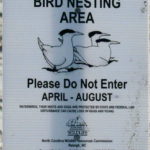 Bird Nesting Area
Bird Nesting Area
NC Wildlife Commission has posted signs that say – Bird Nesting Area / Please don’t disturb. The signs are posted on the west end beach strand around 1335 OBW.
.
People and dogs are supposed to stay out of the area from April through November
. 1) It’s a Plover nesting area
. 2) Allows migrating birds a place to land and rest without being disturbed

A Second Helping
.
Program to collect food Saturday mornings (8:00am to 10:30am) during the summer at the Beach Mart on the Causeway.
1) Twentieth year of the program
2) Food collections have now exceeded 298,000 pounds
3) Collections will begin on Memorial Day weekend
4) Food is distributed to the needy in Brunswick County
For more information » click here
.
Hunger exists everywhere in this country; join them in the fight to help end hunger in Brunswick County. Cash donations are gratefully accepted. One hundred percent (100%) of these cash donations are used to buy more food. You can be assured that the money will be very well spent.
Mail Donations to:
A Second Helping
% Sharon United Methodist Church
2030 Holden Beach Road
Supply, NC 28462
Storm Events –

Hurricane Vehicle Decals
Property owners will be provided with four (4) decals which were included in their April water bills. It is important that you place your decals in your vehicle or in a safe place. A $10 fee will be assessed to anyone who needs to obtain either additional or replacement decals. Decals will not be issued in the 24-hour period before an anticipated order of evacuation.
The decals are your passes to get back onto the island to check your property in the event that an emergency would necessitate restricting access to the island. Decals must be displayed in the driver side lower left-hand corner of the windshield, where they are not obstructed by any other items. Officials must be able to clearly read the decal from outside the vehicle.
Property owners without a valid decal will not be allowed on the island during restricted access. No other method of identification is accepted in an emergency situation. Click here to visit the Town website to find out more information regarding decals and emergency situations.
EVACUATION, CURFEW & DECALS
What is a State of Emergency?
A proclamation by the Town which enacts special ordinances and/or prohibitions during emergency situations to protect the public, public health and property. These prohibitions can include limitations on movement, curfews, directing of evacuations, controlling ingress and egress to the emergency area, alcoholic beverages, and more. State of Emergencies are issued in accordance with N.C.G.S. 166A-19.22.
What is a curfew?
A curfew is an order, typically during a State of Emergency, which requires all persons in the affected areas to remain on their own property. During a curfew, you are not free to move about public domain areas or on others’ property. Violations of a curfew could lead to arrest in certain situations.
What is a voluntary evacuation?
A voluntary evacuation creates a recommendation for all parties in the affected area to get their affairs in order hastily and evacuated.
What is a mandatory evacuation?
A mandatory evacuation means you must leave the area in which an order has been issued. With recent changes to the laws in North Carolina, you no longer have the option of staying in an area under an order of mandatory evacuation.
Why is the sewer system turned off during a storm/event?
Often the sewer system is turned off during storms which have the potential to create significant flooding on the island. The system is turned off to protect its integrity. If it were left on, it could pose a significant threat to the public health. When the system is manually shut down, it also greatly reduces the time needed to bring it back up after an event which equates to getting residents and guests back on the Island much faster.
Why is there a delay for decal holders to get back on the island once a storm ends?
After a storm, many things must occur before even limited access can be allowed. Some of those things include making sure the streets are passable; the sewer system must be restarted to comply with State laws; the utilities (water, sewer, electricity, propane supplies) must be checked to ensure no safety risk are present; and the post-storm damage assessment team needs to perform an initial assessment.
Where can I get up-to-date information during and after a storm or State of Emergency?
You can sign up for the Town email service by clicking here. The newsletter, along with the Town’s website will be the main sources of information during an emergency situation. Links to the Town’s official Facebook and Twitter pages can be found on the website. You can also download our app for Apple and Android phones by accessing the app store on your smart phone and searching Holden Beach.
Please refrain from calling Town Hall and Police Department phone lines with general information questions. These lines need to remain open for emergencies, storm management and post-storm mitigation. All updates concerning re-entry, general access, etc. may be found on the Town’s website and other media outlets.
Why do I see others moving about the island during a curfew?
If a curfew order is in place, you must stay on your own property. You may see many other vehicles moving about the Island. We often receive assistance from other local, state, federal and contract personnel during events. It is likely these are the personnel you are seeing, and they are involved in the mitigation process for the event. Please do not assume that a curfew order has been lifted and/or you are free to move about the island.
Can I check my friends’ property for them?
If a curfew order is in place, you may ONLY travel to your personally owned property. Traveling about the Island to check on others’ property is not allowed. is in place, you may ONLY travel to your personally owned property. Traveling about
Who can obtain decals?
Only property owners and businesses who service the island can obtain a decal.
How do I get decals for my vehicle…?
If I am an owner?
Decals will be mailed out in water bills to property owners before the season starts. Those owners who need additional decals can contact Town Hall. A fee may apply, please check the current fee schedule.
If I am a renter?
You must contact the owner of the property to obtain a decal.
If I am a business owner on the Island?
You must contact Town Hall to obtain a decal.
If I am a business owner off the Island that provides services on the Island?
You must contact Town Hall for eligibility and to obtain a decal.
When does my decal expire?
All decals expire on the last day of the calendar year as indicated on the decal.
Where do I put my decal on my car?
Decals must be displayed in the lower left-hand corner of the windshield, where they are not obstructed by any other items to include window tinting, other decals, etc. Officials must be able to clearly read the decal from outside the vehicle. Please note that re-entry will not be allowed if a current, intact decal is not affixed to the windshield as designated.
How do I replace a decal if I get a new vehicle?
If you trade a vehicle or otherwise need a replacement decal, you may obtain them from Town Hall during normal business hours. A fee may apply, check the current fee schedule.
Can I obtain a decal right before an emergency occurs?
While most of the storms we deal with are tropical in nature with some type of advanced warning, we do experience many other types of events that could create a State of Emergency without warning. All eligible parties should obtain decals as early as possible each year to avoid being denied access to the Island. Decals shall not be issued during the 24-hour period prior to an anticipated order of evacuation so staff can concentrate on properly preparing the Town for the storm/event.
Can I use a tax bill or another document for re-entry?
No. You MUST have a decal to re-enter the Island until it is open to the general public.
How does re-entry after a storm during a State of Emergency work?
The bridge is closed to all vehicle access, except for official vehicles. Once those with proper decals are allowed access, they must conform with the current rules in place by the specific State of Emergency Order. After all hazards have been rendered safe, the bridge will be opened to the general public. A curfew could remain in effect however, to ensure the safety and security of the Island and its residents and guests. Please understand this process typically takes days to evolve and could be significantly longer, depending on the amount of damage sustained. Please refrain from calling for times for re-entry, as those are often not set on schedule. Instead, stay tunes to local media outlets and official social media accounts for accurate updates.
How can I check on my property if access is limited to the Island?
Once it is safe, property owners with valid decals will be allowed back on the Island after a storm/event. At this point, you can travel to your property, in accordance with the rules of the specific State of Emergency Order currently in place.
If you live out of the area, please do not travel to the Island until you are certain you will be allowed access. Stay tuned to those media outlets and email services that are of official nature for this information. Also, be certain you have your current, valid decal properly affixed to your vehicle.
It is a good idea to be sure your contact information is current with the Town tax office as this is the location Town officials will use in the event you need to be contacted.
For more information » click here
NC General Statute 166A-19.22
Power of municipalities and counties to enact ordinances to deal with states of emergency.
Synopsis – The governing body may impose by declaration or enacted ordinance, prohibitions, and restrictions during a state of emergency. This includes the prohibition and restriction of movements of people in public places, including imposing a curfew; directing or compelling the voluntary or mandatory evacuation of all or part of the population, controlling ingress and egress of an emergency area, and providing for the closure of streets, roads, highways, bridges, public vehicular areas. All prohibitions and restrictions imposed by declaration or ordinance shall take effect immediately upon publication of the declaration unless the declaration sets a later time. The prohibitions and restrictions shall expire when they are terminated by the official or entity that imposed them, or when the state of emergency terminates.
Violation – Any person who violates any provisions of an ordinance or a declaration enacted or declared pursuant to this section shall be guilty of a Class 2 misdemeanor.
Turtle Watch Program –

Turtle Watch Program – 2024
The first nest of the 2024 season was on May 18th
Average annual number of nests is 57
Current nest count – (59) as of 07/19/24
Members of the patrol started riding the beach every morning on May 1 and will do so through October looking for signs of turtle nests.
For more information » click here
5 things to know about sea turtle nesting season along the NC coast
On May 6, Oak Island had something to celebrate: the Oak Island Sea Turtle Protection Program took to Facebook to announce its first sea turtle nest of the season — also the first nest of the year in North Carolina.
In the coming months, many female sea turtles will follow, making their way onto local beaches to lay their eggs.
Here’s what you need to know about sea turtles.
When do sea turtles come ashore?
Sea turtle nesting season occurs each year from May through September. According to a fact sheet from the North Carolina Wildlife Resources Commission, female sea turtles emerge from the ocean at night, and using their flippers, dig an 18-inch-deep hole that will serve as the nest where she will deposit 80 to 120 eggs. After laying the eggs, she covers the nest and returns to sea.
What happens to the babies?
After about a 60-day incubation period, the hatchlings emerge and make their way to the ocean. Only about one in 1,000 hatchlings will live to reproduce.
Are there different kinds of sea turtles?
Yes. There are seven species of sea turtles worldwide, and five visit the beaches of N.C. According to information from the N.C. Wildlife Resources Commission, the most common in North Carolina is the loggerhead, but one may also see leatherback, green, hawksbill, and Kemp’s ridley.
How can I help sea turtles?
The N.C. Wildlife Resources Commission’s fact sheet lists the following tips:
Who do I contact if I see a sea turtle on the beach?
The N.C. Sea Turtle Project works with 20 different volunteer groups. Contact information for each is available at nc-wild.org/seaturtles/contacts, or call the statewide sea turtle hotline at 252-241-7367.
Read more » click here
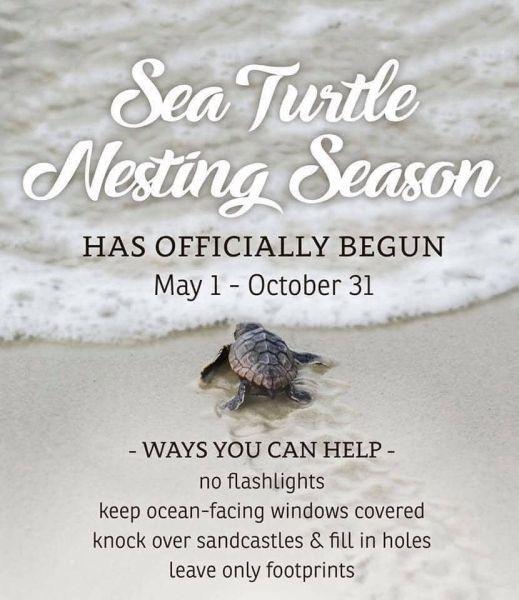
Upon Further Review –
 Covid summer wave spreads across U.S., even infecting Biden
Covid summer wave spreads across U.S., even infecting Biden
Coronavirus activity in wastewater reached levels considered “high” or “very high” in 26 states, according to the most recent CDC data.
A summer covid wave has washed over most of the United States, bringing yet another round of gatherings turned into superspreaders, vacations foiled by illness and reminders that pandemic life has not been fully erased. Not even President Biden was spared. Coronavirus activity in wastewater reached levels considered “high” or “very high” in 26 states, according to the most recent data reported by the Centers for Disease Control and Prevention. Other metrics also suggest the virus is rising, including the prevalence of covid diagnoses in emergency rooms and the rate of tests processed at labs coming back positive, but not to the degree of the winter surge. Biden entered isolation in his Rehoboth Beach home in Delaware after testing positive with mild symptoms Wednesday, the most high-profile example of the virus’s reach. In a July 7 campaign event in Pennsylvania, Biden contrasted himself against Donald Trump by declaring, “I ended the pandemic — he didn’t.” His administration no longer treats covid as a public health emergency — instead, managing it as a routine respiratory virus to be blunted with an annual vaccination campaign. This strategy reflects how SARS-CoV-2 has established itself as a common pathogen that no longer overwhelms hospitals or the health-care system — the threat that spurred drastic measures to contain transmission early in the pandemic. “Covid is not gone. Covid is going to be around, probably forever, and we are going to typically see two to three waves a year,” said Ashish Jha, dean of the Brown University School of Public Health who stepped down last year as the White House coronavirus coordinator. “It raises a question of how worried should we be,” Jha added. “It sounds scary, but it’s not, for most people.” At 81, Biden falls into the age group considered at highest risk of developing severe complications from covid. Older adults are more likely to have milder symptoms if they are up to date on their shots and receive antiviral treatment early in their illness, experts say. Biden started a Paxlovid regimen Wednesday and received an updated coronavirus vaccine in September. White House officials did not respond to questions as to whether Biden received a second dose of the latest vaccine as recommended for seniors. The ongoing Republican National Convention in Milwaukee, with an estimated attendance of 50,000, has presented opportunities for covid transmission in an arena crammed with maskless people. (Masks are also uncommon at Biden campaign events.) Phil Griffin, a convention delegate from Winchester, Va., said he brought two masks in case organizers required them, but he has not worried about covid, even after Biden tested positive. “I’ve not heard anybody in Virginia or any of the delegations — Michigan, Ohio, Louisiana — around us that have had any symptoms,” Griffin said. “So, we’re blessed, I guess like the president,” he added, referring to Trump’s narrow escape from a would-be assassin’s bullet. “We’re all at this point blessed to have good health — as far as we know.” Meanwhile, medically vulnerable Americans are navigating another summer fraught with the risk of covid. Elizabeth Kidd watched with trepidation as daily emails from her mother’s assisted-living facility in Northern Virginia started arriving in late June warning of a growing outbreak, including in the memory-care unit where her mother is treated for dementia. Kidd, 52, takes medication that suppresses her immune system to manage her Crohn’s disease, placing her at higher risk for covid. Her mother is 79 and struggles to remember what covid is. So, Kidd did not visit for two weeks, worried the prolonged isolation would make it easier for her mother to forget who she is. “The whole thing is pretty nerve-racking,” Kidd said. “I don’t want covid, and I don’t want to accidentally be the one who brings covid back to the memory unit.” Fortunately, her mother did not get sick, and Kidd visited Tuesday after the facility no longer had active cases but still required masks. As Kidd shared updates with her mother about the grandchildren she doesn’t always remember are her grandchildren, she also reminded her that covid is like a very contagious flu. Covid has spiked every summer since the pandemic started, which experts attribute to increased travel, large gatherings such as weddings and conferences, the rise of new variants and even the heat driving people inside where the virus spreads more easily. “When we’re outdoors, it’s difficult for covid to transmit, but it’s been so oppressively hot, particularly in the southwest United States, and people are just spending a lot more time indoors,” said Andrew Pekosz, professor of microbiology at the Johns Hopkins Bloomberg School of Public Health who specializes in respiratory viruses like covid. The ongoing covid uptick coincides with the ascendancies of KP variants dubbed FLiRT and the closely related LB. 1, which accounted for 85 percent of new cases as of early July, according to CDC estimates. They have mutations that make it easier for the virus to spread than previous variants and to more efficiently infect people who have some level of immunity. But they do not appear to cause more serious disease. WastewaterSCAN, a private initiative that tracks municipal wastewater data, found a 54 percent increase in copies of viral RNA per gram of wastewater solids between June 30 and July 12. Viral levels were high in most regions and medium in the Midwest. “You might have some summer travel plans that you don’t want to have ruined or affected by you being sick,” said Alexandria Boehm, an environmental engineering professor at Stanford University and principal investigator of WastewaterSCAN. “If you are immunocompromised, this might be a good time to think about masking or just to be cautious about going into crowded venues.” Demetre Daskalakis, director of the CDC’s National Center for Immunization and Respiratory Diseases, said increases of the virus in wastewater should not be viewed in isolation, and officials are not seeing significant upticks in severe outcomes such as hospitalizations and deaths. While covid does not hospitalize and kill people as often as it used to, even mild cases can still be disruptive and inflict illness that can feel nastier than the patient would expect. Jay Brodbar, who hasn’t taken a flight since the start of the pandemic, regularly masks indoors and received his latest coronavirus vaccine in April, had hoped he’d continue avoiding the virus as he embarked on a two-week road trip through the Northeast. But the 74-year-old started experiencing fever and chills on July 8 while he was in New York and tested positive the next day. Brodbar cut his trip short by a week and drove eight hours back home to Toronto. Reeling from what he described as the worst sore throat of his life, he said he felt better after taking Paxlovid and a steroid nasal spray. Summer covid waves come at an awkward time for public health officials who have made fall vaccination campaigns the cornerstone of their response. The current vaccine targets the defunct XBB variants. Updated vaccines won’t hit the market for at least another month, leaving patients and their providers to discuss the trade-offs of getting an outdated shot now that still offers some protection or waiting for the new version. Reinfections pose continuing health dangers, particularly to those in high-risk groups. A severe covid case increases the odds that a person will land in the hospital with covid again, according to a study published earlier this month in Communications Medicine. Lingering symptoms known as long covid, which can even follow mild cases, remain one of the most confounding consequences of the virus. Long covid has become less common as hospitalizations decline, but research shows severe disease is a primary risk factor. While public health officials tout that Americans now have the tools to combat covid, those tools are getting tougher to access. The federal government has stopped widespread distribution of free masks and test kits. The federal Bridge Access Program to offer free coronavirus vaccines to uninsured people ends in August. Health officials are imploring people at higher risk for developing severe covid to test when symptomatic and take Paxlovid early to stop viral replication, as Biden is doing. But other Americans are having a harder time than the president getting Paxlovid. Many pharmacies do not have the medication stocked given the previous low demand. And those who do manage to access the medication are sometimes hit with eye-popping bills. Robyn DeChabert, 27, received a prescription for Paxlovid when the Virginia Beach resident went to an emergency department Sunday with difficulty breathing and a painful cough. She credited the antiviral treatment with hastening her recovery the last two times she contracted covid, when she received the medication free because the federal government had covered the costs. But when her sister went to pick up the prescription for her this time, the pharmacy charged $1,700, which she could not afford. Her sister left without the medication. DeChabert is uninsured until she starts her service industry job next month. “It is still baffling to me that a medicine that two years ago was very much accessible to a lot of people is now something that’s being priced out for many Americans,” said DeChabert, who was able to get Paxlovid from a friend. “I shouldn’t have to go into medical debt just to be able to live.” Pfizer, the manufacturer of Paxlovid, offers some patient assistance programs to cover out-of-pocket costs for people who have no health insurance or who are on government insurance plans, as well as up to $1,500 in co-pay assistance for people with commercial insurance. Kit Longley, a Pfizer spokesperson, said enrollment in both programs takes minutes to complete to access electronic vouchers. But some providers and pharmacies do not tell patients, and DeChabert said she was never informed assistance was available.
Read more » click here
Biden just got covid. What are the latest coronavirus guidelines?
President Biden’s positive coronavirus diagnosis places a spotlight on precautions the public, especially older Americans, can take amid a summer covid wave.
President Biden tested positive for the coronavirus Wednesday, placing a renewed spotlight on covid-19 and the precautions the broader public can take as a summer wave of the disease sweeps over much of the United States. In a statement, the White House said Biden is experiencing mild symptoms and plans to self-isolate at his home in Rehoboth Beach, Del., while continuing to work. The president, who previously tested positive for the coronavirus in 2022, told reporters he was “doing well” after landing at Dover Air Force Base late Wednesday. Coronavirus levels in wastewater were considered high or very high in 26 states, the Centers for Disease Control and Prevention reported last week, but the nation’s approach to the pandemic has evolved significantly over the years — meaning it can be difficult to determine how best to stay safe. Here’s what to know.
What are the current CDC isolation guidelines?
When sick with symptoms of a respiratory virus, such as the coronavirus, the CDC advises individuals to stay home and isolate until both their overall symptoms have improved and they have been fever-free without using fever-reducing medication for 24 hours. For five days after that, it recommends taking extra precautions such as wearing a mask, improving air circulation, physical distancing and testing. The CDC also recommends taking these precautions if covid is circulating widely in the community. People who are asymptomatic do not need to stay home but should take those extra precautions, said Demetre Daskalakis, director of the CDC’s National Center for Immunization and Respiratory Diseases. If people do not have a fever, they should still isolate until their overall symptoms have improved for 24 hours, he said.
What if someone in the house has covid but others do not?
The stay-at-home guidance gets trickier when there are others in a household. In that case, Daskalakis advises people with coronavirus to keep their distance from other adults if possible and to use additional precautions, such as masking or improving air circulation.
What are the latest vaccines?
The currents coronavirus vaccines were developed with a formula targeting the defunct XBB variants but still offer some protection against the latest variants. An updated vaccine is expected in the late summer or fall. Staying up to date with coronavirus vaccines “significantly lowers the risk of getting very sick, being hospitalized, or dying from covid-19,” the CDC says. The CDC recommends adults 65 and older get a second dose of the current coronavirus vaccine, and everyone ages six months and older get the updated vaccine when it is available. Experts say patients who have not recently been infected or vaccinated should consult their doctors about the trade-offs of getting an outdated shot for protection amid the summer covid wave or waiting for the new version expected to be available in the coming months.
What specific advice do health-care professionals have for senior citizens?
While doctors are seeing far fewer hospitalizations for covid, “older individuals remain at the highest risk” and “still can get quite ill,” Tara Vijayan, an infectious diseases specialist at UCLA Health, wrote in an email, noting that taking antivirals early and getting vaccinated can mitigate that risk. If an older adult tests positive, Vijayan recommends considering taking Paxlovid, which President Biden took Wednesday, or molnupiravir, which may have similar benefits. Doctors are divided on whether younger, otherwise healthy adults should take Paxlovid. If people are charged for Paxlovid, which is no longer free, they can apply for support from patient assistance programs to cover out-of-pocket costs, or ask a provider or pharmacist to help. For older adults looking to protect themselves, Vijayan said it is reasonable to consider masking indoors, especially in crowded or poorly ventilated spaces. She emphasized, however, that close family members are “by far the most common source” of infection. Vijayan encourages relatives of older adults to take a test if they have signs of an upper respiratory tract infection and stay away from older family members until they are no longer contagious.
What are the current coronavirus variants and how prevalent are they?
These days, most cases are caused by new KP variants, which are part of a group called FLiRT, and LB.1. They are more effective than their predecessors at infecting people who have some immunity from vaccines or previous infections. The new variants do not seem to cause more severe infections and deaths. The new vaccines under development target the KP.2 strain, which is similar to the other commonly circulating variants. Preeti Malani, an infectious-diseases physician at the University of Michigan, told The Washington Post earlier this month that the “clinical difference is minor, if any.”
Read more » click here
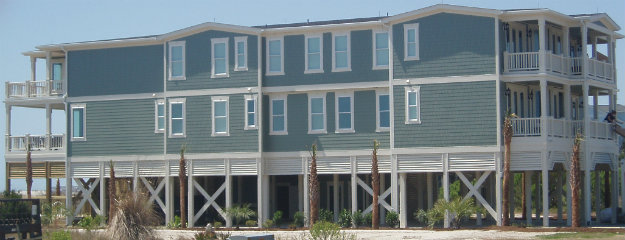 ‘It’s out of control’: OKI to explore limiting house sizes per council directive
‘It’s out of control’: OKI to explore limiting house sizes per council directive
The town council put forth a proposal to limit house sizes in Oak Island on Tuesday and the measure now heads to the town’s planning board for review. Council member Bill Ciullo proposed two scenarios in which the town could limit mega-home construction aimed at reducing an influx of rental houses instead of residences. Cuillo brought forth this idea at a meeting two weeks ago and the discussion was continued to Tuesday’s meeting. “Oak Island residents and homeowners have asked us to limit house size and maintain the small town feel of our community,” Ciullo said. “It was stated loud and clear in our comprehensive land use plan, as well as on election night.” Ciullo proposed two options; one would be to lower square footage on homes constructed to 3,500 square feet and eliminate residents’ ability to apply for special use permits to exceed that amount. The council member described this as a “simple, one-size-fits-all approach” that would apply to all single-family homes regardless of lot size. The second approach would be to limit home size as proportionate to lot size. The example put forth by Ciullo would limit homes on 6,600-square-foot lots to 2,970 square feet, while the allowance would cap at 4,000 square feet with no special-permit exception. Ciullo said the proportionate option would require town staff to examine their size-based zoning metrics for loopholes and complications — “crossing our Ts and dotting our Is,” he said. Council member Mark Martin said he was concerned about this approach, as the town already has land development rules based on lot size. The adopted rule would be applicable to all new construction across the island and in the R7 zoning district of the town’s mainland. The board member claimed that if the town did nothing, developers would continue to gobble up lots for 3,995-square-foot homes and incongruently build them next to smaller homes in the 1,000 to 2,000-square-foot range — this would be the first wave, he said. The second wave would be demonstrated by developers acquiring and demolishing those smaller beach bungalow properties to make way for their 15-bedroom complexes. “While many of the cows have left the barn, we still have plenty of cows left in the barn, which we can save,” Ciullo said. The council member requested the planning board be asked to review each option — and no alternative — to provide a recommendation to council; the motion was seconded by council member Terri Cartner. Council member Bill Craft said he and Ciullo were in harmony with their desire to eliminate special-use allowances for large homes, but he thought Ciullo’s warnings were overblown. He said every town he talked to, including Carolina Beach and Holden Beach, do not limit square footage and instead rely on impervious surface and setback regulations to limit development size. Craft said CAMA guidelines allow Oak Island beach houses to reach 5,000 feet, but noted very few would ever reach that size because the average lot size is 0.12 acres — homeowners would need two lots to reach an allowable 4,000-square-feet. The council member also addressed claims that Oak Island would become like Myrtle Beach, South Carolina, if action were not taken; that claim is common among coastal communities when faced with land development decisions. “That’s a scare tactic,” Craft said. He stated Oak Island maximum building height is 41 feet, while buildings in Myrtle Beach well exceed that. Craft suggested the town maintain its 3,995-square-feet limit and enforce it by eliminating special-use permits, as increasing the gap between the town’s allowance and CAMA guidelines would put the town at risk of a lawsuit. This is not the first time the issue of short-term rentals or house size has crossed the Oak Island dais. Both Craft and council member John Bach have voted to restrict house sizes in the past. “What both of you have illustrated is what people say to me — it’s out of control,” Bach said. “And I’m forced to say, ‘Yeah, but it’s legal.’” He said he supported the planning board’s exploration of Ciullo’s two options. Martin said he was wary of targeting full-time investment rental properties. “Why would I deter my neighbor’s ability to rent their home if they’re in financial need?” Martin said. Martin said he was in favor of special use permits as it allowed council to place conditions on the property they otherwise would not be able to; Ciullo disputed this, saying the permits have been used against them and improvements are made with commercial properties, not residential. Martin was also against the limitations put on the planning board, suggesting the body be allowed to explore and recommend business as usual and the 5,000-square-foot ceiling. Ciullo said free-ranging discussion could last until Christmas. “There’s expectations around people that own property; they see what’s being built, they see design, they understand what’s possible,” Martin said. “They’ve been sitting on these parcels, and now it’s time for them to make their dream come true.” Bach asked that council further debate the issue when the planning board submitted their determination, which could be that neither option was satisfactory, though alternative solutions are not being solicited. The vote to send the issue to the planning board passed 4-1, Martin dissenting. The planning board has until Aug. 26 to return a recommendation.
Read more » click here
Corrections & Amplifications –
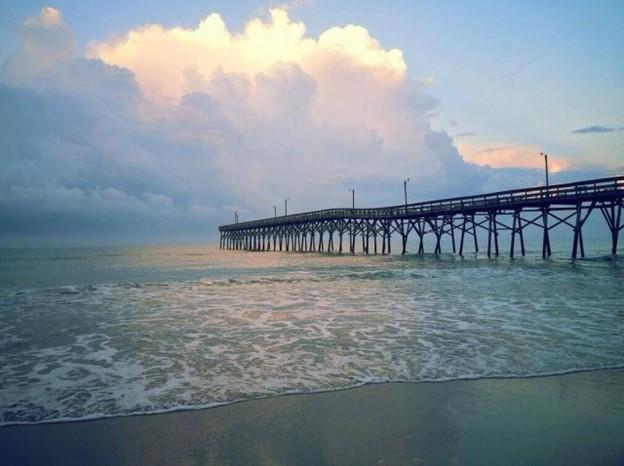 What to know as plans to restore this BC fishing pier inch forward
What to know as plans to restore this BC fishing pier inch forward
Evening walks on the pier and afternoon fishing trips are classic parts of any beach trip. This year, however, marks the second summer in a row that Holden Beach visitors and residents have missed out on those memories. The Holden Beach Fishing Pier has been closed to the public since 2022, after the town purchased the pier and pier house property for around $3.3 million – without plans in place for its future. The Holden Beach Board of Commissioners got to work assessing the pier’s existing structural issues and forming a conceptual plan to renovate the property. After approving a final site plan for the property in February 2023, new board members were elected in November 2023. In December, the board was set to act on bids received for the renovation project. Instead, the board paused the project to allow the new board members to get caught up on its status and scope.
Here’s where things stand now.
Project slowly moving forward again
Earlier this year, a public input session was held to allow the public to review plans for the pier and offer their thoughts. Following that meeting, the town’s board of commissioners is inching forward with the project once again. In April, the board approved a pier property development plan to serve as a “baseline approach” and “starting point” for the development. That plan notes the repairs to the existing structure will likely need to occur in phases as funding is available. The plan suggests those phases would be to stabilize the existing structure, complete safety repairs, complete remaining repairs and extend the pier, in that order. The adopted plan also notes that, due to cost, the pier would likely be replaced with a new wood pier, rather than a concrete pier. “Although a concrete pier is preferred, it may not be financially supportable for a small tax base like Holden Beach,” the document states. Additionally, the plan notes that funding for a pier replacement would likely require financing through a loan or bond.
What’s next?
In May, the board voted to direct staff to develop a request for proposals (RFP) to move forward with accomplishing the first few tasks outlined in the pier property development plan: Preliminary design and receiving cost estimates for the repair or replacement of the pier.
Read more » click here
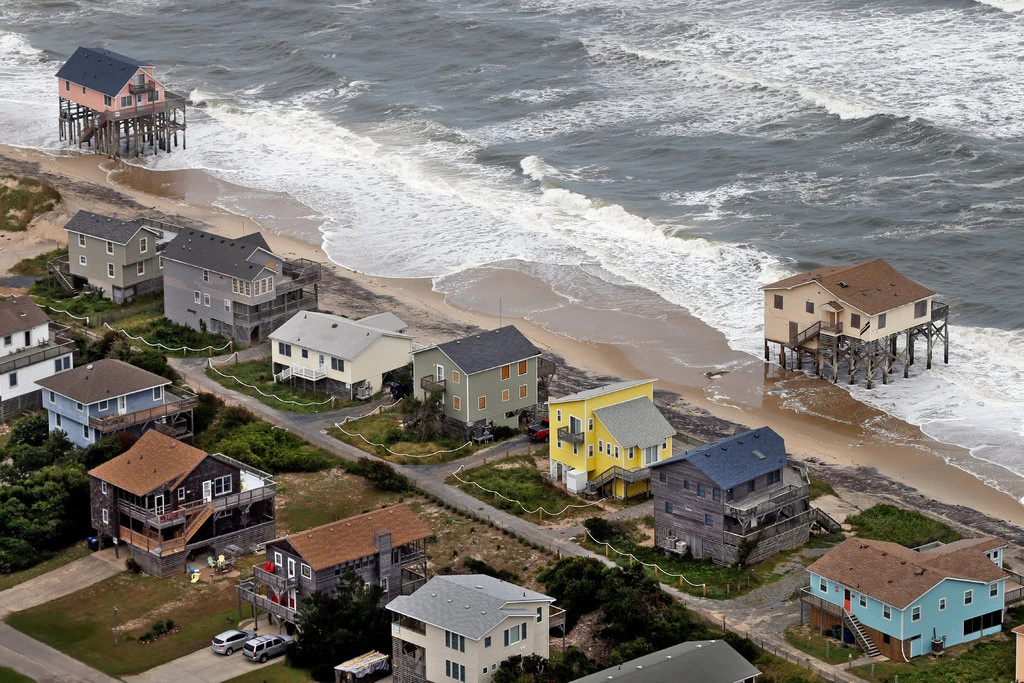 Flood history questions added to real estate disclosure form
Flood history questions added to real estate disclosure form
Sometimes it’s a puzzle why people don’t ask more questions, such as, “Has the river that’s down your road ever flooded your house, the house I’m thinking of buying?” The maxim “buyer beware” is wise advice no matter where a house is situated, but it’s good to have rules in place to cover homebuyers’ backs for the things they overlook or wrongly assume. As of July 1, prospective real estate buyers in North Carolina must now be provided the required North Carolina Real Estate Commission residential disclosure form by the seller that for the first time includes questions related to a property’s flood risk. The change in the form was requested in a petition for rulemaking filed by the Southern Environmental Law Center in December 2022 on behalf of the Natural Resources Defense Council, or NRDC, the North Carolina Justice Center, MDC Inc., the North Carolina Disaster Recovery and Resiliency School, Robeson County Church and Community Center, and NC Field. “Most of those are small, local nonprofits that respond to disasters,” Brooks Rainey Pearson, senior attorney with the law center, told Coastal Review in an interview, referring to petitioners. “So, we really wanted to give a voice to the people on the ground who deal with the fallout from flooding.” Pearson said that the Real Estate Commission had quickly granted the petition at the time and agreed to add the questions proposed by petitioners. It was then delayed by mutual agreement, she said, to adjust the law to allow the commission to merely make changes in the form. That would avoid having to go through a lengthy rulemaking process. “It was a longer journey than it should have been, but not because of any pushback,” she said. “I think everyone understands that homebuyers deserve to know if the property has flooded before.” Questions about flooding that have been added to the disclosure statement include the following: Is the property located in a federal or other designated flood hazard zone? Has the property experienced damage due to flooding, water seepage or pooled water attributable to a natural event such as heavy rainfall, coastal storm surge, tidal inundation, or river overflow? Is there a current flood insurance policy covering the property? Is there a flood or Federal Emergency Management Agency elevation certificate for the property? Has (the property owner) ever filed a claim for flood damage to the property with any insurance provider, including the National Flood Insurance Program? The form also notes that the requirement to obtain flood insurance passes down to all future owners for those properties that have received disaster assistance. Joel Scata, senior attorney with the NRDC, a national environmental nonprofit organization that is one of the petitioners, said that in the past, the only flood information that had to be disclosed to homebuyers in North Carolina was whether the property was in a floodplain. “Now with the changes, a buyer is going to have access to much more detailed information,” he told Coastal Review. According to state law, residential property owners are required to complete the disclosure statement and provide it to a buyer before an offer is made to purchase the property. New construction or never-occupied properties are exempted. Every question must be answered with “Y,” “N,” “NR” or “NA” for “Yes,” “No,” “No Representation,” and “Not Applicable,” respectively. Despite stern language in the form about requirements, there is enough gray area to give pause to anyone with insight into human failings. “An owner is not required to disclose any of the material facts that have a NR option, even if they have knowledge of them,” the statement says. Also: “If an owner selects NR, it could mean that the owner (1) has knowledge of an issue and chooses not to disclose it; or (2) simply does not know.” The form does warn that failure to disclose hidden defects “may” result in civil liability. It also assures that if an owner selects “No,” it means that the owner is not aware of any problem. But if “the owner knows there is a problem or that the owner’s answer is not correct, the owner may be liable for making an intentional misstatement.” If an owner selects NA, it means the property does not contain that particular item or feature. Scata said that he believes that whatever remedies are available for enforcement are strictly civil, and do not include criminal charges in the case of fraud or misrepresentation. “A buyer could file a civil suit, claim that the seller intentionally misled the buyer, make a fraud claim,” he said. But damages and other penalties would depend on the impact of what wasn’t disclosed, he added. A buyer should take any “NR” answer as a cue to ask the owner about what they don’t want to disclose, Scata said, adding “it’s a good indication that something is wrong with the property.” That choice could not be removed from the form unless it was done through a change in the legislation, he said. “The buyer always has the right to go back and explicitly ask the seller the question,” he said. And don’t just push the question with the buyer, he said, but also go talk to neighbors about the situation with flooding episodes in the neighborhood. Also, real estate brokers by law have a duty to disclose what they know, or reasonably should know, regardless of the seller’s response. “So, if a seller says something like ‘No, there’s never been (flooding) on the property,’” Scata said, “but the Realtor knows that’s not true, there’s a duty on them to disclose. And they can be liable if they are complicit in that fraud.” In that instance of potential fraud by a broker, the buyer can file a complaint with the Real Estate Commission. According to an NRDC press release, homes in North Carolina with prior flood losses would be expected to average an annual loss of $1,211, compared to $61 for the average home. In 2021, there were 13,237 homes purchased that were estimated to have been previously flooded. The expected annual flood damage totals for those homes were estimated at about $16 million. With climate change causing more intense rain and stronger storms, flooding is only going to become more of an issue, Pearson said. “Before when you only had to disclose if the house was in a floodplain, well, that’s no longer a good indicator of whether your house might flood,” she said. “The best indicator of whether your house might flood is whether it’s flooded before. And so, we think, just for the sake of transparency, people deserve to know that. But they also deserve to know that because — I believe it’s called behavioral economics — when people have more information, they’ll make different and better decisions.”
Read more » click here
Odds & Ends –
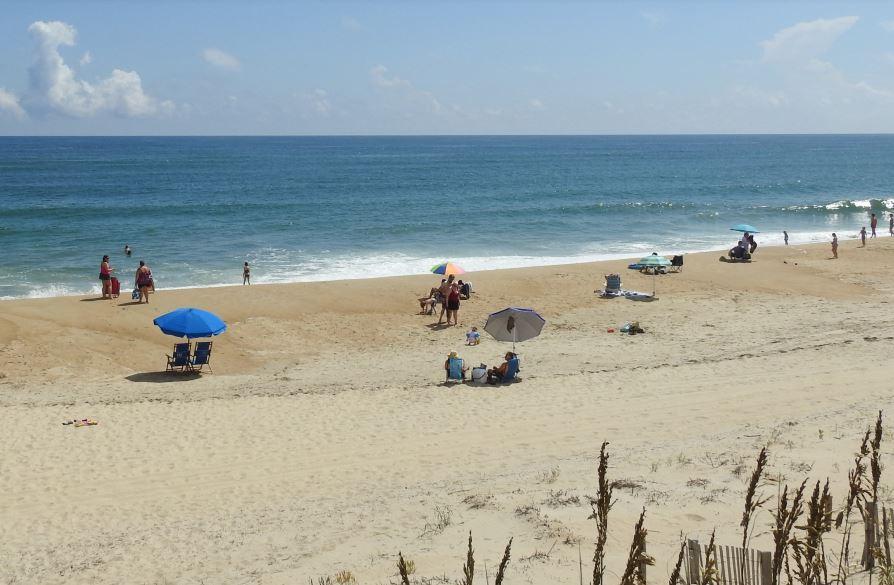
We Need to Decide Which Beaches to Save — and Which Ones to Abandon
Last December a surprise storm passed through Florida’s Pinellas County, ripping away beaches and wiping out half of the sand dunes from St. Petersburg to Clearwater. The damage was extensive, and all the more painful because the county had just spent about $26 million hauling in sand to build up the dunes after a hurricane had pummeled them in August. But this turn of events is far from unusual. Beach communities around the world are spending staggering sums replacing sand as big storms and rising seas wash it away. What used to be a maintenance task every 10 years or so is now often an annual event. For many communities, engineering the beach is worth the hefty price tag to protect properties and tourism. But as climate change hastens beach erosion, trucking or shipping huge quantities of sand to replenish beaches is likely to become economically untenable and logistically impractical. Policymakers may soon have to make painful decisions about which shores and structures to save. This doesn’t necessarily spell disaster for beach lovers. Beaches were intended to move around, and they’re better off when they do. Unlike other effects of climate change that look bleaker the further into the future you look, migrating beaches could ultimately make America’s coasts healthier by providing coral reefs and wildlife affected by sand replenishment with the habitats they need to thrive. Beachfront communities have had to maintain the sand on their shorelines ever since beaches became the holiday ideal in the early 20th century. By the mid-1930s waterfront construction in Coney Island, N.Y., Waikiki, Hawaii, and Atlantic City, N.J., had eroded beaches so much that they all had received their first infusions of sand. The federal government became more involved in the effort in the middle of the 20th century, when protecting American shores from natural disaster became part of the mandate of the Army Corps of Engineers. The agency typically picks up more than half the tab for local beach replenishment projects, while the Federal Emergency Management Agency often steps in when beaches are destroyed by hurricanes. Now more than ever, beach communities rely on this support to keep attracting the tourists who patronize beachfront resorts, vacation homes and rental properties. In the United States alone, beach tourists generate $36 billion in taxes annually. So, it makes sense that the government spent an estimated $8.2 billion on beach replenishment this century alone, compared to just over $3.6 billion over the entire 20th century. Beaches will only require more nourishment as worsening storms wash them away, sea level rise makes it harder to keep sand in place, excessive groundwater extraction causes land to sink and the rivers that once deposited sand on the coast dry up. Already beaches near San Diego and San Clemente, Calif., are shrinking by an average of 4.75 feet per year. Without them, nothing separates the fury of the ocean from the homes, resorts and other buildings that dot the shore. Even finding sand has grown more difficult; many offshore reserves are already depleted, forcing dredging vessels to venture further offshore to find sand and dig it up from the ocean floor. In some places sand has to be transported by the truckload from inland at considerable extra cost — or even purchased from other countries. The Jewel Grande resort in Montego Bay, Jamaica, for example, imported sand all the way from the Bahamas to build up its beach before it opened for business in 2017. Beach towns are already competing with companies that use sand to manufacture not only concrete, glass, and asphalt but also cellphones, semiconductors, and microchips. Global demand for sand tripled in the first two decades of this millennium. Resulting competition has led to so-called sand mafias mining it illegally in many countries, from Morocco to Indonesia, and pushing up the price around the world. For many U.S. communities whose economies depend on beach tourism, spending tax dollars on beach replenishment may be worth it for now, but the economics are becoming less favorable every year. In Southern California the amount of sand required to replenish beaches is likely to triple by 2050, and the cost could quintuple, according to a recent study. Many swaths of the Jersey Shore already require replenishment every year or two, and if the sea there rises more than a foot over the next 30 years, as the National Oceanic and Atmospheric Administration has predicted, the need will only grow. Soon there will be no way to keep up. Some coastal communities will eventually stop rebuilding their beaches, either abruptly or through what’s known as managed retreat, a coordinated, gradual move away from the shore that avoids shocks to property owners and residents. In these cases, the funds currently being siphoned off to shore up beaches could be redirected to more temporary buildings like modular homes or tents that can be relocated easily. The funds could also go toward government programs that buy back property, especially from homeowners, who may relocate or rent their homes from the government while it remains feasible. Managed retreat discourages new development, as opposed to beach replenishment, which encourages it. Of course, beaches will disappear. But they may pop up elsewhere, and this is how today’s beach erosion could benefit shorelines tomorrow. While nourishment is rooted in our insistence that beaches stay in one place, in truth, beaches were never the constants we imagine them to be. Left to their own devices, they would simply shift, even as sea levels rise. Some would drift down or up the shore, or shrink and then widen again as the power of wind, waves and tides guide sand in different directions. Others would move inland. The lucky ones would actually expand. This kind of migration is natural, and even ecologically healthy, allowing beaches to support the birds, fish and coral reefs that depend on them. In some places, this is already happening. Just south of Los Angeles, Huntington Beach is getting wider every year. In the Netherlands, Schiermonnikoog Island easily handles 300,000 visitors per year while its beach continually widens. Undeveloped barrier islands off the coast of Georgia are holding up just fine, as they are allowed to ebb, flow, and adapt to changing natural conditions. Researchers who studied 184 relatively untouched islands in the Maldives found that while 42 percent were eroding, 39 percent were relatively stable and 20 percent were growing. We can’t predict how any given beach will behave when left alone, and we don’t know exactly what shape new shorelines will take. But ending nourishment does not mean saying goodbye to enjoying a day in the sand. If we get out of the way, beaches will endure.
Read more » click here
 Want to fish at the NC coast? Then you need a license.
Want to fish at the NC coast? Then you need a license.
Whether you’re a tourist or a local angler, you need a license to fish at the N.C. coast. Here’s why, and how to get one.
If you’re headed to the beach or plan on hitting the water this summer, there are some things you are certainly going to pack. Sunscreen to protect you from the scorching Carolina sun, more than likely a few beverages to keep you hydrated, and maybe some beach toys and a Shibumi Shade are all likely coming along. But if you plan on casting into the surf or testing your luck in the state’s offshore or inland coastal waters, there’s one more thing you need: a fishing license. Whether you are a tourist from Tennessee, an avid angler from Asheville, or a local lad from Leland, recreational fishermen of all skill levels over the age of 16 have been required to have a valid N.C. Coastal Recreational Fishing License since 2007. The idea isn’t to discourage fishing, but the exact opposite. “We want to help protect and maintain this natural resource that we all enjoy for our generation and for future generations,” said Capt. Garland Yopp with the N.C. Marine Patrol. Proceeds from license sales are used by the N.C. Division of Marine Fisheries (DMF) and state Wildlife Resources Commission (WRC), which manages North Carolina’s freshwater public waters and shares management of some inner coastal areas with DMF, to manage, protect and conserve the state’s marine resources − from making sure fishing stocks aren’t falling too low to maintaining and expanding public boat launch sites. And with fishing, like many other outdoor activities, exploding in popularity since the COVID-19 pandemic, coupled with the tremendous growth all of the N.C. coast has seen in recent decades, that’s becoming a bigger challenge every year, said Yopp, who oversees the state’s southern coastal areas.
Who needs a N.C. fishing license?
Basically, anyone over 16 who intends to fish. A coastal fishing license is required even if you’re just planning to do some catch-and-release fishing, not catching something for personal consumption. Yopp said that includes fishing offshore, since boaters will have to traverse state waters − which extend 3 miles offshore − when traveling to and from their offshore fishing grounds. Commercial piers, however, have a blanket license that covers recreational fishermen, so individuals don’t need their own license to fish from them. Folks also can fish license-free anywhere along the coast on July 4.
How do I get a license?
Government isn’t generally known as an entity that makes it easy to get the necessary permit or paperwork to do something. But that’s not the case when it comes to fishing licenses. Yopp said probably the easiest way to get a license is through the WRC’s online portal. Once you’ve selected and paid for your license, you will receive a digital copy of your license that you can keep on your cellphone or print out for a hard copy. Fishing licenses also can be purchased at most big box retailers, like Walmart, sporting good shops, some hardware stores, and at local DMF and WRC offices.
Are there different types of licenses?
Yes, so a tourist visiting Brunswick County for a week doesn’t have to buy a year-long license that a beach house owner from the Triangle might want. A short, 10-day coastal fishing license is $6 for a N.C. resident and $11 for a nonresident. Annual licenses are good for one calendar year from when they are issued. For state residents, a 1-year license costs $16. It is $32 for a nonresident. Since a separate fishing license is required to fish in the state’s freshwater lakes, rivers and streams, fishermen also have the option of buying a unified license. North Carolina also offers lifetime licenses and discounted licenses for certain groups, like disabled veterans. Information on the types of fishing licenses and their cost can be found at www.eregulations.com/northcarolina/fishing/fishing-licenses.
What if I cast without a license?
Yopp said officers have the option of issuing a verbal warning or charging someone with a misdemeanor, which carries a fine that can range from $35 on up and could see future fishing privileges suspended, depending on the situation. He said most fishermen understand and want to follow the rules, and many of the issues law enforcement comes across have to do with licenses that have expired. “We still do see some violations, because like anything you always have some bad apples,” Yopp said. “But as a general rule we have pretty good compliance.” He added that just because you are a weekend angler or a tourist doesn’t mean you aren’t responsible for knowing N.C.’s fishing rules, and that includes what you can catch and keep. “If you don’t know how to ID a fish or what size is legal, then you probably shouldn’t have it in your ice chest,” Yopp said, adding that there are plenty of online information on the DMF’s website and via smartphone apps like FishRules to help keep fishermen informed. “I really think most fishermen want to do the right thing, and most of them do.”
Read more » click here
This and That –

This Brunswick town has the best beach in NC, according to a USA TODAY poll
Southeastern North Carolina towns dominated a USA TODAY 10Best reader poll ranking the state’s best beaches. On Tuesday, USA TODAY announced the results for its Best Beach in North Carolina poll, as well as best beaches in six other states. Candidates for 10Best lists are chosen by expert panels and voted on by readers to determine the final top 10 for each list. Of the 10 beaches recognized on the Best Beach in North Carolina poll, area beaches occupied eight spots. Ocean Isle Beach was named the best beach in the state, with all three New Hanover County beaches following — Carolina Beach in second place, followed by Kure Beach and Wrightsville Beach. Oak Island and Holden Beach, both Brunswick County beaches alongside Ocean Isle, took the fifth and sixth rankings. Pender County’s Topsail Beach and Surf City were placed ninth and 10th.The only beaches recognized that were not located in the Wilmington area were Atlantic Beach and Kill Devil Hills.
Here’s the top 10:
Read more » click here

Trends report: Wilmington first among most moved-to cities
What states and cities are becoming popular moving destinations? PODS Enterprises LLC, released its fourth annual Moving Trends Report identifying the top 20 cities Americans are fleeing from, and flocking to, in 2024. The report analyzes consumer movements throughout the past 15 months, identifying the environmental and economic factors that inspired these trends. Wilmington, for the second consecutive year, landed the top spot on the move-in list. The area was tied in with nearby Myrtle Beach, South Carolina. “Last year, we noted the Carolinas were worth watching, and this year, they’ve not only taken the trophy as the number one spot for new moves but also broken a record,” said Rich Schwartz, SVP of Corporate Operations at PODS. More Americans are calling the Southeast home with the promise of lower costs of living, an exceptional quality of life, the food scene, easy access to nature, and vibrant metro areas. Wilmington is well known for its 1.75-mile-long Riverwalk, seafood restaurants, markets, art galleries, narrated history tours and boat tours. Other attractions are the Battleship North Carolina and the Cotton Exchange, a shopping complex consisting of historical buildings dating back to the late 19th and early 20th centuries, located in downtown Wilmington.
The top 10 cities with the highest number of move-ins:
Read more » click here
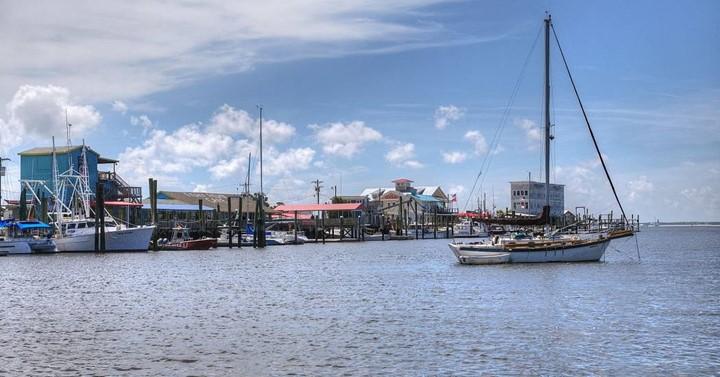 This Brunswick County place was named one of the cutest in NC
This Brunswick County place was named one of the cutest in NC
A Brunswick County city, which has already been named one of the state’s friendliest, has something else to brag about. Southport made the World Atlas list of seven cutest small towns in North Carolina to visit in 2024. World Atlas cited Southport as a filming location for several movies and TV shows. Cinema buffs can go on a golf cart tour which stops by filming locations of more than 40 productions, including “Dawson’s Creek” and “A Walk to Remember,” which shot scenes in Old Smithville Burying Ground in spring of 2001. “I Know What You Did Last Summer” was also set in Southport with some scenes at Southport Marina and Franklin Square Park. “Tourism is our greatest industry, and our city is as welcoming as a Hallmark movie where everyone is treated like family and friends,” Mayor Joseph P. Hatem said, describing the local community. “If you walk through our unique neighborhoods, you will always be greeted with a friendly hello.” The town also offer many waterfront dining options, such as Fishy Fishy Cafe and Provision Company, both offering stunning seaside views and deliciously fresh seafood. And if you’re adventurous, you can explore the plenty of nearby beaches, such as Oak Island and Caswell Beach, which features the Oak Island Lighthouse, a 153-foot-tall lighthouse built in 1958. The World Atlas describes Southport as being filled with historic homes that visitors can admire, some even offering lodging, such as Robert Ruark Inn, a quaint bed and breakfast in a Victorian-style.
The other cities are:
Read more » click here
Factoid That May Interest Only Me –
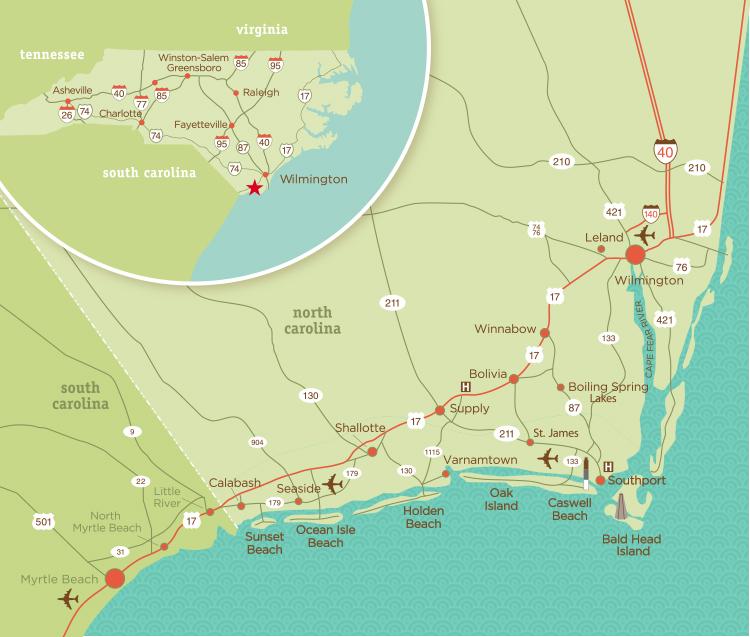 Living along the NC coast is increasingly risky.
Living along the NC coast is increasingly risky.
So why are property values still rising?
A new economic model suggests that tax incentives and federal subsidies help fuel coastal property price increases despite growing climate change risks, like sea-level rise
Anyone who has dreamed of owning a property at the beach knows that it’s a goal shared by many. Couple in the growing popularity of coastal living in general − the Wilmington-area’s population jumped from 200,000 in 1990 to more than 450,000 in 2020 − and home ownership is increasingly becoming the privilege of the rich and the few. According to a report by online research publisher Stacker using real estate data from Zillow, Wrightsville Beach has seen a nearly 74% increase in property values over the past five years, with the typical home value now pushing an eyewatering $1.46 million. That makes it the most expensive town in the state, with Bald Head Island a close second with a 76% increase in values in the past five years increasing the average home on the Brunswick County island to $1.3 million. Of the top ten priciest locales in North Carolina, six are coastal communities. But are government actions helping bake in the advantages that high-income property owners have in reaching the coastal dream even as evidence mounts that the risk from climate change and sea-level rise is making living along the ocean an increasingly risky proposition? That’s a question North Carolina researchers attempted to tackle in a recent study published in Nature Communications that looked at how economic incentives and subsidies are impacting coastal property markets. Dr. Dylan McNamara, professor of physics and physical oceanography at the University of North Carolina Wilmington and one of the study’s authors, said the changes occurring along much of the U.S. coast can’t be viewed as just uniquely physical or uniquely economic. “They are linked, a coupled human environmental system where the environment is impacting humans and humans are impacting the environment,” he said. Dr. Martin Smith, an environmental economics professor at Duke University, and McNamara created a new economic model called the Coastal Home Ownership Model (C-HOM) to analyze the long-term evolution of coastal real estate markets. Smith said government actions to protect and enhance coastal communities from environmental risks, such as sea-level rise and stronger and more frequent hurricanes, helps support and boost property values. “What it signals to the market is that this is a fine place to further invest,” he said. Paradoxically, as property values increase and coastal communities become more wealthy, it becomes easier for officials to justify additional and more expensive projects to maintain that economic value in these increasingly vulnerable areas. “We’re shielding these markets from the underlying risks they face, and hence propping up these markets,” McNamara said.
Subsidized sand
Take the history and role of beach nourishment projects, for example. When Congress decided to get the federal government involved in the beach-building business nearly six decades ago, the thinking was oceanfront communities would only require sand roughly once every 10 years or so. The cost of these federal projects would be split between Washington and local governments, with the federal government picking up most of the tab and the state and/or local communities paying the rest. As erosion has increased thanks to sea-level rise and more frequent storms, that’s now been reduced to every couple years − a timeline that doesn’t include federal emergency beach-building projects after major storms. And as more towns see their beaches washing away and confront the high costs of nourishment, thanks to sand scarcity and increased environmental regulations, there is a growing chorus of communities who want their own federal nourishment project. Currently, New Hanover County’s three beach towns and Ocean Isle Beach in Brunswick County are the only North Carolina communities that are guaranteed a periodic injection of fresh sand largely funded by the federal government. Critics say beach nourishment projects funded by federal taxpayers are bad long-term investments that literally just wash away, only benefit rich oceanfront property owners, and have to be repeated every few years to be truly effective. Backers claim beach-building projects are vital to keeping coastal economies running, protecting oceanfront properties and vital infrastructure, and helping communities hit hard by hurricanes rebound.
Analyzing the trade-offs
Both McNamara and Smith said there’s no doubt taxpayer-subsidized projects like beach nourishments have short-term and even medium-term economic benefits. But the cost of defending the shoreline, while propping up property values, is itself increasing. That means more of those costs need to be shouldered by state and local governments if they have the necessary political will and the deep pockets. McNamara and Smith also warn that those rising costs, which beach towns will increasingly have to pass on to their residents or private property owners will have to fund themselves, coupled with surging property values will likely increase the gentrification of many coastal communities − a process that’s already occurring in many beach towns. Some North Carolina coastal communities are already facing these tough decisions. In 2022, North Topsail Beach pulled out of a federal beach nourishment project with Surf City over cost concerns, and Dare County has told residents of Rodanthe, an unincorporated community on Hatteras Island that has some of the highest erosion rates along the entire N.C. coast, that it simply can’t afford to nourish the village’s eroding beach that has already swallowed several homes. Increasing home and flood insurance premiums also are heaping additional pressures on many coastal residents. With the impacts from climate change expected to get worse in the coming decades, the researchers said change is coming. How officials manage the long-term economic adjustments required to adapt to an evolving environment so that they don’t all hit at once could be key to sustaining some of these coastal communities. ”As markets begin to sniff out those impacts, which is to say as the risk begins to increase, values will begin to go down,” McNamara said. “So, the question is when do we see that trajectory, and what path will it take.” Potential options the researchers suggest include managed retreat, possibly including the idea of a purchase and buy-back program so owners can continue to “rent” their homes until they have to move, and building smaller, movable structures that can more readily react to the rising ocean levels instead of the McMansions that are increasingly proliferating along the coast. “There are certainly trade-offs,” Smith said, “but we want people to have a clear view of what those trade-offs are.”
Read more » click here
Beach Strand –

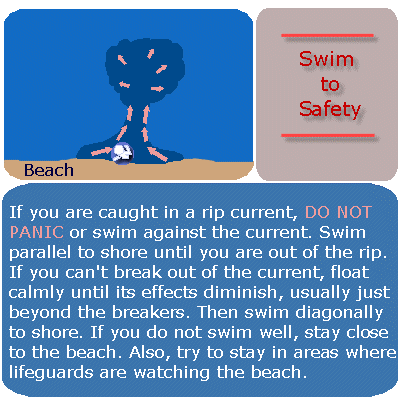 Forecasters, lifeguards warn: Rip currents are deadly
Forecasters, lifeguards warn: Rip currents are deadly
Not unlike getting a vehicle tune-up before a risky cross-country trip, emergency responders and weather officials are reinforcing the messaging about ocean safety as hundreds of thousands of beach lovers head to the coast for the July Fourth holiday. “In the Carolinas, rip currents are our biggest killer,” said Erik Heden, warning coordination meteorologist with the National Weather Service’s Newport/Morehead City office. Heden was speaking Thursday at the 2024 Eastern Carolinas Beach Hazards and Rip Currents Integrated Warning Team event held at Jennette’s Pier. In addition to representatives from the National Weather Service, the team included input from local emergency and public safety officials and ocean rescue personnel, as well as government communication representatives to discuss current and future beach safety issues. Since 2000, there have been 184 victims of rip current drownings in the Carolinas, 49% of whom were out-of-state residents, Heden said. Of them, 86% were male, most of them aged 41 to 50. Female victims were mostly between 31 and 40 years old. “That’s four times the number of deaths from tornados, floods and wind combined,” Heden said. The data didn’t include those who were caught in rips, but their deaths were attributed to an associated cause such as a heart attack, he added. About 100 fatalities annually in the U.S. are estimated from rip currents, and as much as 80% of all ocean rescues are rip current-related. But fortunately, there has been a lot of progress made in preventing the loss of life from rips, mostly by educating the public about the hazard, and by providing better tools to avoid the risk. To stretch the road trip metaphor, staying safe can come down to commonsense measures such as checking road conditions and the weather report. Going to the ocean should be no different. “Before we even get to the beach,” Heden said, “let’s talk about knowing some things.” Those “things” include questions such as: Where are lifeguarded beaches? What are conditions that day at the beach location? Do you need a floatation device? What is the rip current risk? Awareness can not only prevent drowning, but it can also mean not having to be saved by lifeguards. Recently, numerous news outlets reported that more than 150 beachgoers in New Hanover and Carteret counties and more than 80 at Carolina Beach alone were rescued from rip currents, which are channels of water typically formed at breaks in sand bars and that flow away from the beach. People can sign up for alerts on beach conditions and daily rip current risks at North Carolina beaches from the National Weather Service. Dare County also offers a service that provides alerts from Dare County lifeguards about local beaches. Beachgoers also need to know about other hazards that include lightning, another big weather-related killer. Leave the beach immediately if you hear thunder. Lightning strikes can happen when a storm is as far as 10 miles away. Several strikes on the Outer Banks have happened when people were in the parking lot after exiting the beach. Other risks ocean swimmers need to be aware of are shore break, that is, when a wave breaks forcefully in shallow water, and rogue waves that seemingly come out of nowhere and can throw a person into the surf. “They can be deceptive, and you don’t see them coming,” Hatteras Island Rescue Squad Supervisor Molly Greenwood said at a press briefing. “Never turn your back to the ocean.” Even something as seemingly harmless as walking on the sand is dangerous when temperatures are high, and the sun is strong. Ben Abe with Chicamacomico Banks Volunteer Fire Department water rescue said that one man suffered second-degree burns on the bottom of his feet from going barefoot on the beach and had to be transported to the hospital. In recent years, the National Weather Service has produced numerous informational videos and pamphlets about beach safety that are available through its website, including the award-winning “Play it Safe” series. The public information is geared to a fifth-grade education level, so it’s readily accessible for school-aged children, Heden said. “We do a tremendous amount of public education,” he added. Two important new infographics are focused on hazards that are related to rip currents but had often been overlooked in risk assessments. One provides advice to bystanders who want to help swimmers caught in a rip current or are struggling in the ocean, with a warning to call for help but not to enter the ocean without a floatation device. According to the weather service, nearly 30% of rip current drownings in the Carolinas since 2011 were bystanders trying to save another person. The other graphic illustrates the risk that far-offshore tropical storms create by intensifying the strength of currents, with a West Coast and East Coast version. Several videos and graphics are also offered in Spanish. The weather service beach forecast webpage will soon be transformed into a GIS-based platform, compatible with mobile devices, said Melinda Bailey, NWS National Marine Services program manager, who attended the event remotely. Web-based users will not have to download any proprietary software to access the platform, which is expected to be implemented by fall 2024, she added. “It’s a long time coming but it’s very exciting,” Bailey said. Bailey said the weather service has been working on predictive artificial intelligence models to improve accuracy of information on rip currents and other forecasting. Heden said that he looks forward to continued progress in beach safety through advancement in communication and predictive modeling tools, including cutting edge technology. “I’m intrigued by the virtual reality stuff,” he said. “It would be interesting to incorporate that.”
Learn more: National Weather Service Rip current brochure
https://coastalreview.org/wp-content/uploads/2024/06/rip_brochure_51419b.pdf
Read more » click here

These counties have the most shark attacks on North Carolina’s coast.
With tourists flocking to North Carolina beaches for the start of the summer, people will be diving into the home of many ocean creatures and that includes one of the most dangerous — sharks. The Florida Museum has an International Shark File as Florida is the top state for shark attacks in the United States. The file logs shark attacks all across the world and includes top attack states in the country, one of those states being North Carolina, which came in at No. 5.
Types of attacks
The International Shark File uses a number of different categorizations to describe attacks, including unprovoked bites, provoked bites, boat bites, scavenge, public aquaria, no assignment could be made and not confirmed.
Here are the worldwide statistics for shark attacks in 2023.
How does North Carolina rank?
Out of all the states in the country, North Carolina ranks No. 5 for shark attacks behind its sister state South Carolina. North Carolina has had 80 confirmed unprovoked shark attacks since 1837. South Carolina has had 118, California has had 138, Hawaii has had 195 and Florida came in first at a whopping 928 unprovoked attacks.
County breakdown
Two of the Cape Fear region’s counties lead the numbers for confirmed unprovoked shark attacks since 1935 in North Carolina. Brunswick County tops the list with 18 attacks, followed by New Hanover County with 15 attacks.
Here’s the full list:
From 2012-2021, there have been a total of 31 bites in the state, but none of them have been fatal, according to the International Shark File.
What are the odds?
According to the Florida Museum, more people in the water has a strong correlation to the amount of attacks, which could point to why Brunswick County is at the top of the list for attacks on North Carolina’s coast as it is the fastest-growing county in the state. New Hanover County and Brunswick County are also part of the Wilmington Metro Area, which ranked No. 9 in the U.S. Census Bureau’s Top 10 U.S. Metro Areas from July 1, 2022, to July 1, 2023. But, although the chances are not zero, a person has a far greater chance of drowning than they do death by shark attack, according to the Florida Museum.
How to reduce the risk
Here are some tips provided by the Florida Museum to help keep yourself and others safe in the water this summer.
What to do when a shark is near
If the shark tries to bite you
Read more » click here
As weather warms, nesting shorebirds and sea turtles join people heading to NC’s beaches
With people flocking to the coast, officials hope education and outreach can help efforts to share the sand with nesting birds and sea turtles.
As the weather warms, sun-seeking tourists aren’t the only ones drawn to North Carolina’s rich necklace of barrier islands along its 320 miles of coastline. If you’re visiting the beach this summer, there’s a good chance you’ll see wildlife mixed in with visitors and the occasional resident. But sharing valuable beach real estate with nesting shorebirds and sea turtles can be challenging. Mix in the loss of habitat on many islands to development, the growing risk from climate change, and the increased threat of disturbance tied to human activities, dogs and even predators and the odds are often stacked against the native fauna. The eggs and chicks of nesting shorebirds often blend in perfectly with the sand, making it easy for people or pets to accidentally step on them. Getting close to the nests or babies can be just as bad, scaring the parents off and leaving the eggs and chicks at the mercy of predators and the summer heat. That’s where groups like the N.C. Wildlife Resources Commission and Audubon North Carolina come in to help level the playing field. Hundreds of signs ring the state’s coastal nesting sanctuaries from Currituck Sound in the north to Sunset Beach in the south, warning visitors to respect nesting areas. In some locations, including Wrightsville Beach, volunteers help reinforce that message. Hope Sutton, eastern wildlife diversity supervisor with the wildlife commission, said education and outreach efforts are some of the most powerful tools officials have to raise awareness about the birds’ requirements. “It’s a critical component, whether its students at Wrightsville Beach Elementary making cute signs to warn beachgoers to stay out of the refuge or adults learning about these birds through one of our outreach activities,” she said. “Our behavior patterns can really impact the chance of success many of these birds species have.” The helping hand comes as regulators worry about the future of some of the state’s shorebirds. North Carolina’s 2023 waterbird survey, which is conducted every three years and is a collaborative effort among government agencies and environmental groups, showed substantial dips in the numbers of many nesting shorebirds. Among wading birds, that list included cattle egrets, tricolored heron, little blue herons, snowy egrets and glossy ibis. Beach-nesting species showing substantial declines included the common tern, gull-billed tern, and Caspian tern. Another species that is in trouble is the black skimmer, with North Carolina’s population decreasing by half since 1999. Because skimmers nest directly on the open sand, they are especially vulnerable to disturbance and loss of nesting sites. But the survey wasn’t all bad news. Least tern numbers were found to be increasing, with many of the nests found on the beaches at the south end of Wrightsville Beach and on Lea-Hutaff Island in Pender County. Brown pelicans also are doing well, with 5,227 nests reported in 2023, well above the 15-year average of about 4,000 nests. Many of the shorebirds holding their own nest on spoil islands, like those in the Cape Fear River or Intracoastal Waterway, or on sections of protected natural areas like Masonboro Island that are hard to access. But climate change is an unknown variable that could add to the pressure many species face. On low-lying manmade dredge islands, for example, rising seas and stronger tropical storms tied to warming temperatures could increase erosion and over wash threats. “And the competition for sand is already tough and is likely to get worse in the coming decades,” Sutton said, referring to the limited nearshore sand resources and many coastal towns now seeking nourishment projects to boost their eroding beaches. A warming climate also could prompt some birds to nest sooner. Lindsay Addison, a coastal biologist with Audubon North Carolina, said learning to share the beach and knowing when to back away, such as when a shorebird starts acting irritated, can go a long way to help. “Anyone who has lived down here for a while knows that there are more and more people now, and sometimes it’s really hard to go anywhere along the coast and not run into a lot of people,” she said. “The birds also are experiencing that, and there are a lot of opportunities for people to disturb them and impact their survival. “But if we just keep our distance and take some other steps, like keeping our dogs on a leash during certain times, it can make a really huge difference.” Shorebird nesting season runs from March through mid-September.
Turtle time
Shorebirds aren’t the only ones looking to nest on area beaches. Peak sea turtle nesting season begins May 1 and continues through the end of October. Most local beaches are monitored daily during sea turtle nesting season to look for evidence of nests, which are then monitored and protected if needed during the roughly two-month incubation period. While sea turtle nesting numbers have been showing increases in recent years, regulators and environmentalists warn the marine reptiles still face many threats − especially during the decades they navigate the oceans before females return to their birth beach to nest. While on the beach, threats dangers include holes dug in the sand and left by beachgoers, which can trap hatchlings after they emerge from the nest, and bright lights from homes and businesses that can distract nesting mothers and hatchlings and lead them away from the ocean.
Sharing the beach
Tips from the N.C. Wildlife Resources Commission on how to share the beach with nesting wildlife this summer:
Read more » click here
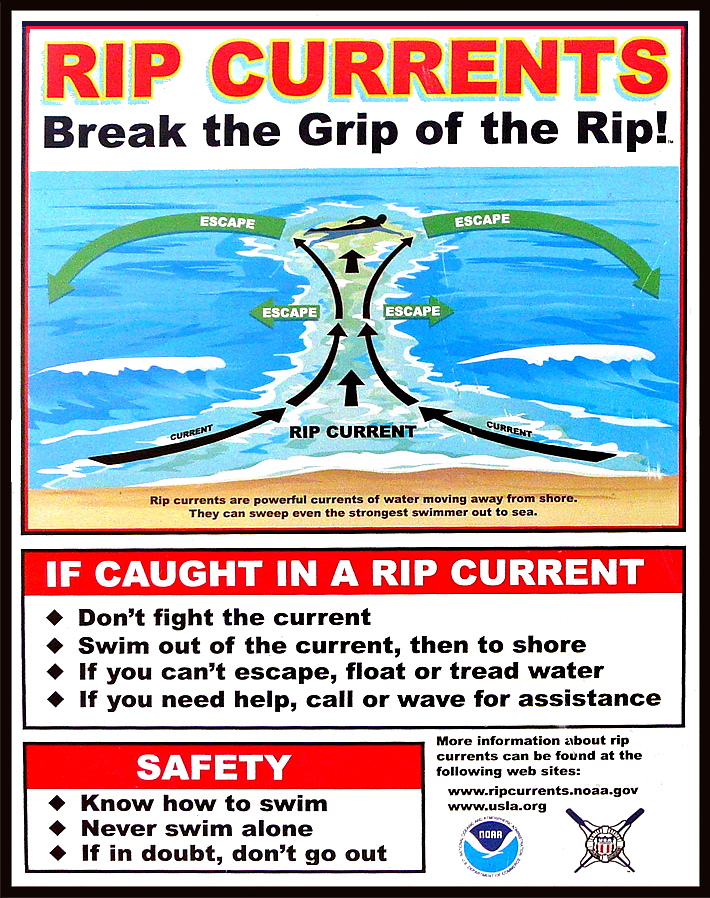
Most rip current deaths are preventable. Yet people keep drowning.
Beach-safety experts are frustrated by the mounting fatalities despite awareness campaigns and improved forecasts
Rip-current deaths in the United States are running ahead of last year’s pace — at least 29 since the beginning of the year — with peak beach season yet to come. Experts are warning the public to be aware of this largely hidden hazard ahead of Memorial Day weekend, traditionally one of the busiest beach weekends of the year. The risk of dangerous rip currents is expected to be particularly high this weekend along portions of the Southeast coast where a storm could produce heavy rain, gusty winds and rough seas. Experts say most rip-current fatalities can be prevented. Still, the number of annual rip-current deaths has steadily climbed since the National Weather Service began tracking them in 2010, reaching a record of 130 in 2021, then dipping to 85 last year. Rip currents were the third-leading cause of weather-related deaths from 2012 to 2021, behind only heat and flooding, according to the Weather Service, and in a typical year they kill more people than lightning, hurricanes or tornadoes. Rip currents are strong, narrow streams of water that flow away from the shoreline and can suddenly sweep swimmers out to sea. They can form on almost any beach with breaking waves, especially near low spots or breaks in sandbars, and near jetties or piers. Predicting where and when a rip current will form is difficult because of the many weather and ocean factors involved. The Weather Service cautions that “rip currents often form on calm, sunny days.” The Weather Service lists 26 rip-current deaths this year through April 27, not including three deaths believed to be caused by rip currents on April 28 in Destin, Fla., May 6 in Ocean City, Md., and May 12 at Cannon Beach, Ore. At this point last year, there were 19 total such deaths. Beach-safety experts are expressing frustration as fatalities trend higher again this year despite annual awareness campaigns, such as the United States Lifesaving Association’s National Beach Safety Week held every year during the week before Memorial Day, and recent improvements to rip current forecasts. “It is frustrating when we produce videos and graphics and educational information and release it at the beginning of each beach season, and it still misses so many people,” Scott Stripling, a senior meteorologist at the National Hurricane Center in Miami, said in an email. “The problem seems to be one of communication and/or lack of attention by the general public.”
Rip-current forecasts and warning signs
The Weather Service issues daily rip-current forecasts for beaches on the Atlantic Ocean, Gulf Coast, Southern California, Great Lakes, Puerto Rico and the U.S. Virgin Islands. The forecasts categorize the rip-current risk as low, moderate or high, and are informed by a rip-current model recently developed by NOAA that has made it possible to differentiate the risk between adjacent beaches. Previously the same forecast could span 100 miles or more. However, the model doesn’t enable reliable forecasts of the exact location and time of rip currents. These are influenced by a number of factors including wave characteristics, water levels, winds and the shape of a beach. Advances in artificial intelligence could help with rip-current detection — NOAA is partnering with the Southeast Coastal Ocean Observing Regional Association on a project using AI to detect rip currents in webcam imagery — but such efforts are still in their infancy. In some cases, there are visible clues to the existence of a rip current, such as a break in the waves, foamy water or objects being carried offshore, or darker water that is due to a break in a sandbar. Often, though, rip currents are difficult to see, or are best seen from a high point such as a dune line or the top of a beach access. Rip currents are particularly hard to spot in South Florida, where, the Weather Service says, they “consistently rank at or near the top of the list of deadliest weather-related hazards,” because there is not much sediment to darken or muddy the current at the shoreline. In Brevard County alone, home to nearly 72 miles of sandy beaches, there have been eight apparent rip-current drownings since November, all at beaches without lifeguards. “We have clear-water rips, so these offshore-flowing currents are very hard to detect,” Stephen Leatherman, a professor in the department of earth and environment at Florida International University, said in an email. “The best thing is to have lifeguards and for people to swim close to lifeguards. But lifeguards are very expensive, and Florida has 825 miles of good quality sandy beaches which are swimmable for most of the year.”
Warnings and tips for surviving a rip current
Rip currents flow at speeds up to 5 miles per hour. That may not sound fast, but it’s faster than many Olympic swimmers. If you are caught in a rip current, experts say not to swim directly back to shore against the current, which can quickly exhaust and drown you. Instead, swim parallel to the shore until you are out of the current, which is typically no wider than about 50 to 100 feet. You might also escape by floating or treading water, allowing the current to take you out just past the breaking waves where many rip currents tend to dissipate, and then circulate you back toward the shore. However, some rip currents can extend hundreds of yards offshore. If you see someone caught in a rip current, experts urge you not to risk your own life to attempt a swimming rescue unless you have been trained to do so and have a flotation device to assist you and the person in distress. Instead, you should get help from a lifeguard or call 911 if no lifeguard is present. You should also throw the victim something that floats, such as a lifejacket, body board, cooler or a ball, and yell instructions on how to escape. Experts agree that the best way to survive a rip current is to avoid it in the first place. That means checking the rip-current forecast before you enter the water, heeding warnings for rip currents or rough surf, and only swimming close to a lifeguard. The United States Lifesaving Association estimates the chance of someone’s drowning at a beach with a lifeguard at 1 in 18 million. “Lifeguards are trained to spot rip currents and other beach hazards and intervene as and when needed,” Chris Houser, a professor at the University of Windsor School of Environment and a longtime beach-safety researcher, said in an email. “While there is some evidence that individual beach users can be trained to spot rips, most beach users are not aware of what to look for.” U.S. lifeguards make an estimated 80,000 or more rip-current rescues each year, which suggests that education and warning messages are not reaching or are not resonating with as many people as experts would like. “If the lifeguards are flying precautionary flags, and there are signs on the lifeguard stand identifying the potential for rips in that area, and the National Weather Service and media have advertised that there is at least a moderate risk for rip currents to be present at your local beach, what else can we do?” the Weather Service’s Stripling said.
Read more » click here

 Staying safe at the beach: Rip currents, jellyfish, sharks, and other hazards
Staying safe at the beach: Rip currents, jellyfish, sharks, and other hazards
A trip to the beach can turn deadly (or painful) due to natural hazards but being aware of risks and mitigating hazards is a good way to prevent problems.
Picture this: warm weather, blue skies, and your toes in the sand — it sounds like a perfect lazy summer day at the beach. Maybe you decide to cool down in the ocean and find yourself bobbing around when suddenly you realize you are a little too far out. As panic sinks in and you start to swim towards dry land you realize your efforts are in vain and your whole body is getting tired, all the while you are drifting further into the Atlantic — you have gotten stuck in a rip current. It’s not the only potential danger in the ocean, though. There are also sharks. And, of course, there are some things on shore that ruin your day at the beach, too, including stepping on jellyfish and, of course, good old-fashioned sunburn.
Rip currents
According to the U.S. Lifesaving Association (USLA), 80 percent of all ocean rescues are related to rip currents and annually more than 100 fatalities across the country are due to rip currents. While it is obvious that swimming at a beach with lifeguards is one of the safer options, there are plenty of area beaches that lack lifeguards or maybe ocean rescue season has not started just yet. So, what is the best course of action for surviving a rip current? According to the National Weather Service, there are several things swimmers should keep in mind when dealing with these often-unseen dangers.
Sharks
Sharks are a fear on most every swimmer’s mind, regardless of the actual dangers posed by the large predatory fish. “NOAA states that while shark attacks are rare, they are most likely to occur near shore, typically inshore of a sandbar or between sandbars where sharks can be trapped by low tide, and near steep drop-offs where sharks’ prey gather. While the risks are small, it’s important to be aware of how to avoid an attack,” according to previous reporting.
Suggestions from NOAA for reducing the risk of a shark attack include:
Sunburns
Most everyone has experienced a sunburn at one point in their life and while not often thought as a major concern for many, overexposure to UV light can cause serious long-term problems including skin cancer. The Centers for Disease Control and Prevention (CDC) recommends using at least S.P.F. 15 sunscreen at least 15 minutes prior to sun exposure. Wearing a hat, long sleeves, and other protective clothing is also recommended to keep skin protected.
Jellyfish
Jellyfish and Portuguese Man of War have been spotted along the beaches of New Hanover County and surrounding area beaches already this season and the little floating creatures can pack a punch. Often times beachgoers will spot them washed up on shore and other times they can be spotted in the water, but it is best to avoid them when you can. “While all jellyfish sting, not all contain poison that hurts humans. Be careful of jellies that wash up on shore, as some can still sting if tentacles are wet. NOAA recommends that if you are stung by a jellyfish to first seek a lifeguard to give first aid. If no lifeguards are present, wash the wound with vinegar or rubbing alcohol,” NOAA suggests. And what about that … other method of treating stings? Turns out, it’s a myth. In fact, urine can actually aggravate the stinging cells of jellyfish, making things worse. These cells, which detach and stick into the skin of prey, can continue to inject venom. Urine, as well as fresh water, can cause an imbalance to the salt solution surrounding the stinging cells, causing them to continue to fire. According to Scientific American, if you don’t have vinegar or rubbing alcohol, rinsing with salt water may be your best bet.
Read more » click here

Hot Button Issues –
Subjects that are important to people and about which they have strong opinions

Climate
For more information » click here.
There’s something happening here
What it is ain’t exactly clear

Flood Insurance Program
For more information » click here
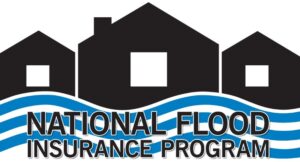
National Flood Insurance Program: Reauthorization
Congress must periodically renew the NFIP’s statutory authority to operate. On March 22, 2024, the president signed legislation passed by Congress that extends the National Flood Insurance Program’s (NFIP’s) authorization to September 30, 2024.
Congress must now reauthorize the NFIP
by no later than 11:59 pm on September 30, 2024.

GenX
For more information » click here

Homeowners Insurance
For more information » click here
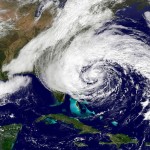
Hurricane Season
For more information » click here
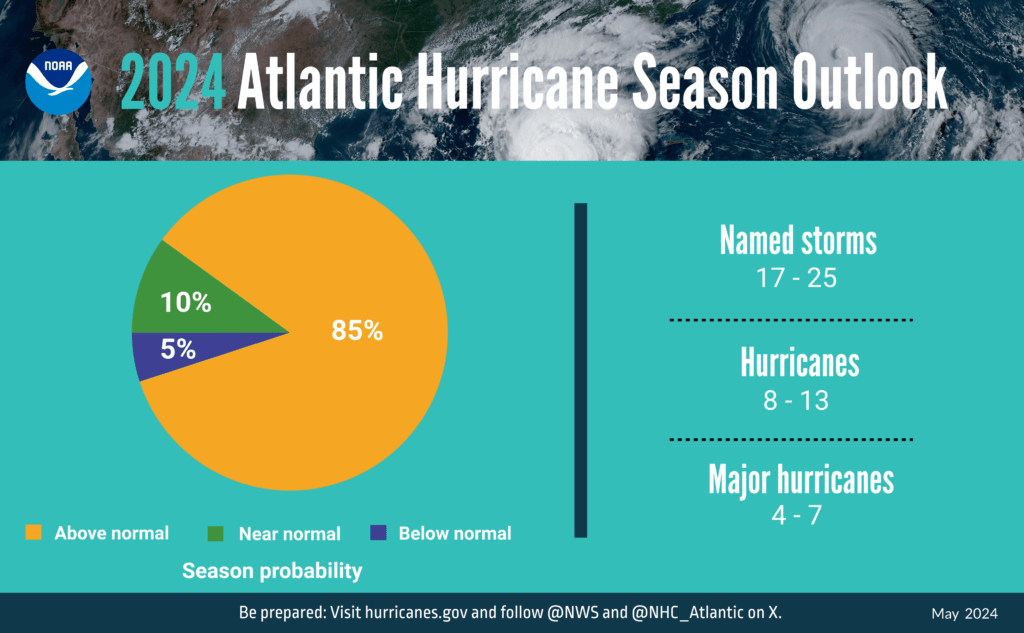 NOAA predicts above-normal 2024 Atlantic hurricane season
NOAA predicts above-normal 2024 Atlantic hurricane season
Read more » click here
2024 Hurricane Season Is Expected to Be Abnormally Busy, NOAA Predicts
The Atlantic hurricane season is looking to be an extraordinary one, with 17 to 25 named storms predicted, experts said.
In yet another dire warning about the coming Atlantic hurricane season, the National Oceanic and Atmospheric Administration on Thursday predicted that this year could see between 17 to 25 named tropical cyclones, the most it has ever forecast in May for the Atlantic Ocean. The NOAA forecast joins more than a dozen other recent projections from experts at universities, private companies and other government agencies that have predicted a likelihood of 14 or more named storms this season; many were calling for well over 20. Rick Spinrad, the NOAA administrator, said at a news conference on Thursday morning that the agency’s forecasters believed eight to 13 of the named storms could become hurricanes, meaning they would include winds of at least 74 miles per hour. Those could include four to seven major hurricanes — Category 3 or higher — with winds of at least 111 m.p.h.
According to NOAA, there is an 85 percent chance of an above-normal season and a 10 percent chance of a near-normal season, with a 5 percent chance of a below-normal season. An average Atlantic hurricane season has 14 named storms, including seven hurricanes and three major hurricanes. While it only takes one storm in a below-average season to devastate a community, having conditions conducive to almost twice the average amount of storms makes it more likely that North America will experience a tropical storm or, worse, a major hurricane. There are 21 entries on this year’s official list of storm names, from Alberto to William. If that list is exhausted, the National Weather Service moves on to an alternative list of names, something it’s only had to do twice in its history. NOAA typically issues a May forecast and then an updated forecast in August. Before Thursday, NOAA’s most significant May forecast was in 2010, when it forecast 14 to 23 named storms; that year, 19 ultimately formed before the end of the season. In 2020, the May forecast was for 13 to 19 named storms, but an updated forecast for August was even higher, with 19 to 25 named storms. That season ultimately saw 30 named storms. The hurricane outlooks this year have been notably aggressive because of the unprecedented conditions expected. As forecasters look toward the official start of the season on June 1, they see combined circumstances that have never occurred in records dating to the mid-1800s: record warm water temperatures in the Atlantic and the potential formation of La Niña weather pattern. Brian McNoldy, a researcher at the University of Miami who specializes in hurricane formation, said that without a previous example involving such conditions, forecasters trying to predict the season ahead could only extrapolate from previous outliers.
Experts are concerned by warm ocean temperatures.
“I think all systems are go for a hyperactive season,” said Phil Klotzbach, an expert in seasonal hurricane forecasts at Colorado State University. The critical area of the Atlantic Ocean where hurricanes form is already abnormally warm just ahead of the start of the season. Benjamin Kirtman, a professor of atmospheric sciences at the University of Miami, earlier described the conditions as “unprecedented,” “alarming” and an “out-of-bounds anomaly.” Over the past century, those temperatures have increased gradually. But last year, with an intensity that unnerved climate scientists, the waters warmed even more rapidly in a region of the Atlantic where most hurricanes form. This region, from West Africa to Central America, is hotter this year than it was before the start of last year’s hurricane season, which produced 20 named storms. The current temperatures in the Atlantic are concerning because they mean the ocean is poised to provide additional fuel to any storm that forms. Even if the surface suddenly cools, the temperatures below the surface, which are also remarkably above average, are expected to reheat the surface temperatures rapidly. These warmer temperatures can give energy to the formation of storms — and help sustain them. Sometimes, if no other atmospheric conditions hinder a storm’s growth, they can intensify more rapidly than usual, jumping hurricane categories in less than a day. Combined with the rapidly subsiding El Niño weather pattern in early May, the temperatures are leading to mounting confidence among forecasting experts that there will be an exceptionally high number of storms this hurricane season.
A parting El Niño and a likely La Niña are increasing confidence in the forecasts.
El Niño is caused by changing ocean temperatures in the Pacific and affects weather patterns globally. When it is strong, it typically thwarts the development and growth of storms. Last year, the warm ocean temperatures in the Atlantic blunted El Niño’s effect to do that. If El Niño subsides, as forecasters expect, there won’t be much to blunt the season this time. Forecasters specializing in the ebbs and flows of El Niño, including Michelle L’Heureux with the National Weather Service’s Climate Prediction Center, are pretty confident not only that El Niño will subside but that there is a high likelihood — 77 percent — that La Niña will form during the peak of hurricane season. The system could throw a curve ball, she said, but at this point in the spring, things are evolving as forecasters have anticipated. A La Niña weather pattern would already have them looking toward an above-average year. The possibility of a La Niña, combined with record sea surface temperatures this hurricane season, is expected to create a robust environment this year for storms to form and intensify.
Read more » click here
 Brunswick County reminds public to prepare for 2024 Atlantic hurricane season
Brunswick County reminds public to prepare for 2024 Atlantic hurricane season
June marks the start of the Atlantic hurricane season, which runs from June 1 through November 30, and the National Oceanic and Atmospheric Administration (NOAA) predicts that it will be an above-normal hurricane season this year. Brunswick County encourages all community members to start preparing now.
For the 2024 Atlantic hurricane season, NOAA is forecasting a range of 17 to 25 total named storms. Of those, 8 to 13 could become hurricanes, including 4 to 7 major hurricanes.
Based on 30 years of climate data collected from 1991 to 2020, NOAA found that the average Atlantic hurricane season has 14 named storms (winds of 39 mph or higher), 7 hurricanes (winds of 74 mph or higher), and 3 major hurricanes (category 3, 4, or 5; with winds of 111 mph or higher).
“Many people move to Brunswick County who have never experienced a hurricane before,” Brunswick County Emergency Management Director David McIntire said. “Living in our coastal region comes with the risk of life-threatening weather events such as hurricanes. We urge all our residents and visitors to stay prepared, stay informed, and stay ready.”
Ways to Prepare for Hurricane Season
For more hurricane preparedness tips from Brunswick County, visit brunswickcountync.gov/hurricanes.
Find information on emergency planning and hurricane safety online at ReadyNC.gov or Ready.gov.
View updates from the National Hurricane Center, a real-time emergency weather map, and additional online resources at nhc.noaa.gov.
Read more » click here
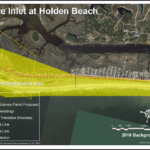
Inlet Hazard Areas
For more information » click here
.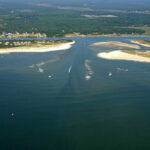
Lockwood Folly Inlet
For more information » click here.

Seismic Testing / Offshore Drilling
For more information » click here.

Offshore Wind Farms
For more information » click here
Things I Think I Think –
 Eating out is one of the great little joys of life.
Eating out is one of the great little joys of life.
Restaurant Review:
The Dinner Club visits a new restaurant once a month. Ratings reflect the reviewer’s reaction to food, ambience and service, with price taken into consideration.
///// December 2021
Name: Ceviche’s
Cuisine: Panamanian
Location: 7210 Wrightsville Avenue, Wilmington NC
Contact: 910.256.3131 / https://www.wbceviche.com/
Food: Average / Very Good / Excellent / Exceptional
Service: Efficient / Proficient / Professional / Expert
Ambience: Drab / Plain / Distinct / Elegant
Cost: $26 Inexpensive <=20 / Moderate <=26 / Expensive <=35 / Exorbitant <=60
Rating: Three Stars
Ceviche’s is a Latin America seafood restaurant ranked #5 out of @492 restaurants located in Wilmington. It is located on Wrightsville Avenue, just before the bridge. They offer a creative Panamanian inspired menu specializing in serving ceviche which is a seafood dish popular in the coastal regions of Latin America. The dish is typically made from fresh raw fish marinated in citrus juices and spiced with various peppers. It is a very busy place, which is filled nearly every evening. The cuisine is fresh and interesting, it’s a nice change from the same old same old. We enjoyed the dining experience at this place, it was – Delightful!
It’s been 10 years of fresh and tropical fun at this Wrightsville Beach restaurant
Hunter and Laura Tiblier didn’t have restaurant experience before opening Ceviche’s at 7120 Wrightsville Ave. near Wrightsville Beach in 2014. But after a career in the military, he wanted to do something new and was inspired by his childhood in Panama. The couple thought if they were to go into the hospitality industry, it should bring Hunter Tiblier’s ceviche to Wilmington, and they would do it their own way. This year, they celebrate 10 years doing just that. They’ve become well known for their fresh and fun contributions to the local dining scene. People love their indoor and outdoor dining areas that seem to spill out of the restaurant. They love the ceviche (of course) and the coconut shrimp. As far as cocktails, the margaritas, which come in flavors like pineapple, mango and watermelon are the No. 1 seller.
New chef, new menu
The Tibliers have added chef Dwayne Hickman to their staff in December. And while the menu has been honed to include those dishes that consistently work, they do tweak it seasonally and for specials. In April, they introduced some new and returning dishes for the busy season. The fan-favorite Watermelon Salad, with pickled red onion, cucumber, cashews, queso fresco and basil vinaigrette, is back. And there’s a new version of the popular El Quatro ceviche sampler. The La Niña has smaller, two-ounce portions of them.
Accolades galore
The most recent bit of national recognition came when Ceviche’s was named one of the 20 best restaurants in Wilmington by Southern Living magazine and was featured in the accompanying article about this area being “The South’s Best City On The Rise.” Before that, Guy Fieri visited Ceviche’s in 2018 for the “Diners, Drive-ins and Dives” Food Network show. They prepared the ropa vieja (or braised flank steak in a peppery tomato broth) and sancocho, which is also known as Panama’s national dish for Fieri. The latter is a soup of chicken, sweet potato, yucca, plantains, and corn mixed with a spicy cilantro broth and served with a side of coconut rice.
A celebration ahead
The Tibliers and their team are still planning how they will honor their 10th anniversary in September. It will likely include lots of specials, and perhaps an appearance from their favorite Panamanian band. Look for more details in the coming months.
Read more » click here
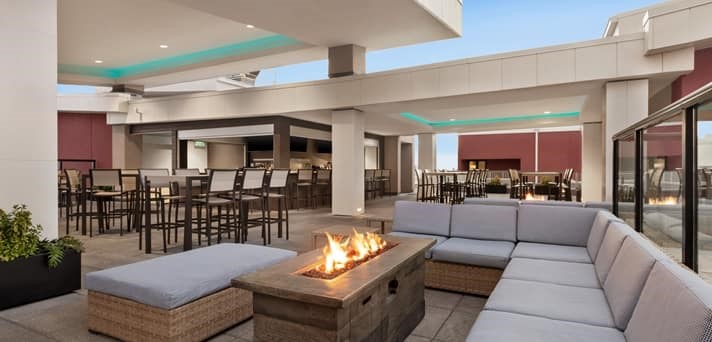 Cloud 9
Cloud 9
9 Estell Lee Pl
Wilmington, North Carolina 28401
910.726.9226
Rooftop Bar
https://cloud9ilm.com/
Enjoy panoramic views from the Cloud 9 rooftop bar which overlooks picturesque downtown Wilmington. This premier open-air rooftop venue is located on the Riverwalk in downtown Wilmington on the ninth floor of the Embassy Suites. The bar is open seven (7) days a week at 4:00 PM and is currently serving almost fifty (50) different brews on tap and in cans and more than 20 wine selections. They also offer live music Thursday through Saturday evenings throughout the summer months. This is a must visit the next time you are in Wilmington.
Dining Guide – Local
Old places, New faces
Name: SmacNally’s
Location: 1045 B-Var Road, Supply NC
This spot that was once known as Betty’s Waterfront Restaurant before reopening in 2020 as LouLou’s Waterfront Restaurant. LouLou’s has permanently closed. They weren’t closed long before a new eatery was announced for the space. Owners of SmacNally’s Waterfront Bar & Grill are planning a second location for 1045 B-Var Road S.W. in Supply.
Popular Outer Banks seafood restaurant planning a second location in Brunswick County
For 25 years, SmacNally’s Waterfront Bar & Grill has been serving fresh seafood and burgers in Ocracoke. Now, the owners are planning to expand the brand for the first time, and they’ll be doing so in Brunswick County. Scott McNally announced that they’ll be taking over the recently closed LouLou’s Waterfront Restaurant on the Intracoastal Waterway at 1045 B-Var Road S.W. in Supply. “It’s time,” McNally said. “We’ve put a lot into this brand and it’s time to grow.” McNally has decades of experience in restaurants, and together with partners Tom Burruss, Matt Bacheler and Persell Morgan, they have more than 120 years in hospitality. One caveat is they wanted to continue with the waterfront restaurant tradition that’s close to local seafood. It made the Holden Beach area ideal. “At SmacNally’s we work with fishermen, and we have a fish cleaning counter right at the end of our dock. They bring it right from there, to our restaurant. It’s usually just hours from the ocean.” That dock-to-kitchen model is one they’d like to continue in Holden Beach. If that’s not possible, they still plan to work with local markets for the freshest seafood, he said. LouLous restaurant opened in fall 2020 in what was formerly Betty’s Waterfront Restaurant. The space has indoor and outdoor dining, a bar area and slips for boat parking. McNally said they hope to open the SmacNally’s in May. “Or sooner, if possible,” he said.
Read more » click here
Peach Cobbler Factory
The dessert chain that also has a location in Carolina Beach has opened a mobile unit (with delivery options) in Holden Beach. The menu includes a variety of cobblers, puddings, cinnamon rolls and other desserts at 3247 Holden Beach Road S.W.

Dining Guide – Local * Lou’s Views (lousviews.com)
Dining Guide – North * Lou’s Views (lousviews.com)
Dining Guide – South * Lou’s Views (lousviews.com)
Restaurant Reviews – North * Lou’s Views (lousviews.com)
Restaurant Reviews – South * Lou’s Views (lousviews.com)
Book Review:
Read several books from The New York Times best sellers fiction list monthly
Selection represents this month’s pick of the litter

FIRST LIE WINS by Ashley Elston
Evie Porter is a professional con artist whose specialty is insinuating herself into people’s lives, gaining their trust so she can expose their secrets.Evie develops feelings for her current mark and realizes that her latest job from her mysterious employer has become more personal and dangerous than planned.
 LISTEN FOR THE LIE by Amy Tintera
LISTEN FOR THE LIE by Amy Tintera
Lucy can’t remember the night her best friend was murdered. Though Lucy was never charged, almost everyone in town still believes she killed her. It’s five years later, and Ben the moderator for the true-crime podcast “Listen for the Lie,” decides to investigate the unsolved murder of her friend Savvy’s death. Lucy returns home to solve her friend’s murder, working with Ben as he searches for the truth.
That’s it for this newsletter
See you next month
Lou’s Views . HBPOIN
. • Gather and disseminate information
. • Identify the issues and determine how they affect you
. • Act as a watchdog
. • Grass roots monthly newsletter since 2008
Lou’s Views
“Unofficial” Minutes & Comments
BOC’s Special Meeting 06/03/24
Board of Commissioners’ Agenda Packet » click here
Audio Recording » click here
1. Budget Workshop
. a) Review and Possible Action on Fiscal Year 2024/2025 Budget
The BOC’s recessed their June 3rd meeting to Friday, June 7th at 3:00 p.m.
Holden Beach maintaining current property tax rate
The Town of Holden Beach is proposing a smaller budget for the 2024-2025 fiscal year with no change to its current tax rate of 14 cents per $100 value. The proposed FY 24-25 budget includes big-ticket projects, needed infrastructure upgrades and improvements, a coastal storm reduction study and a new detective position for the Holden Beach Police Department. If adopted, the budget includes a 3.2% cost of living adjustment (COLA) for town staff, who will also be eligible for a 5% merit pay program. The proposed budget is composed of seven overall funds, four main governmental funds and three capital reserve funds. Each fund contains detailed calculations in the budget message and can be viewed on the town’s website. The town is expected to kick off the year with a general fund surplus. “The estimated fund balance available at [June 30, 2024,] is $4,917,229 which represents an estimated available fund balance ratio of 104%,” the budget message states. The town will divide the extra $312,023 by identifying $236,812 as “available to appropriate” and transferring $75,311 to the beach and inlet capital reserve fund. Overall general fund expenditures and expected revenues have decreased from $5,169,737 in FY 23-24 to $4,736,246 in FY 24-25. The town’s general fund revenues for FY 2024-25 are projected to match expenditures at $4,736,246, down from $5,169,737 from the fiscal year 2023-24 budget. Money that makes up general fund revenues comes from property tax collections, state-collected revenues, town-collected revenues and interfund transfers. The town is projected to collect $3,335,924 in property taxes next fiscal year, compared to $3,300,074 in property tax revenue projected for FY 2023-2024. Two of the largest funds are the Water and Sewer fund with $7,665,209 and the Beach, Parks, Access and Recreational Tourism (BPART) fund with $6,239,679. The general fund is the third highest fund. The town projects BPART fund revenues to come from the 441 Ocean Boulevard West pier properties and island-wide paid parking. The upcoming fiscal year is the first year the town will enforce paid parking all year. Staff expects the town to collect $895,000 in parking revenue this year. Debt services are also included in the proposed budget message. It is noted that total debt services appropriations of $1.88 million are made for annual payments on the Central Reach Project, Block Q and the pier properties.
Departmental budget
Holden Beach commissioners have held multiple special meetings since February to thoroughly review budgetary funds and hear out what departments need and want. Some departments will see an increase in expenditures from FY 23-24 while others will see a decrease. Holden Beach’s planning and inspections department expenditures have decreased from its projected $525,968 in FY 2023-24 to $469,533 in the upcoming FY. The budget message states that the planning and inspections department paid for a vehicle replacement last year and will not need to this year. The Streets Building and Grounds (SBG) Department and Public Works Department are seeing a huge decrease in their budget this year. Together, the departments total $532,285 in expenditures for the upcoming fiscal year; last year, their proposed expenditures were $1,010,018. In the SBG department calculations, $200,000 is marked for street projects in anticipation of the update to the town’s street condition survey. Some SGB expenditures cover costs for motor grader rentals, street end bulkhead replacements, sidewalk repairs, facilities and equipment maintenance.
Sewer rate change
Holden Beach residents will also see a change in their sewer rates. “Effective 1 July 2024 Brunswick County is increasing the wholesale sewer rate by $1 per thousand gallons which is proposed to be passed on in the retail rate charged to town customers,” the message notes.
Detective
The police department has proposed an increase in their expenditures from FY 23-24 budget $1,220,546 to $1,650,671 in FY 24-25. If the budget is adopted, the police department will be funded to add a detective position and associated vehicle. Expenses for emergency services vehicle modifications and an upgrade of radios are also included in the police department’s expenditures.
Other projects
Some of the town’s capital projects include implementing year-round paid parking, upfitting lift station 2, improving the Block Q site, conducting a coastal storm damage reduction study, resurfacing streets and appropriating money for pier professional services for site-specific evaluations. Block Q improvements include the construction of bathrooms and associated stormwater infrastructure, as well as parking and Americans with Disabilities Act-accessible facilities. “A $45,000 appropriation is made in ‘Block Q Professional Services’ for further design and development at that location,” the budget message states. Town staff has also appropriated $83,096 in the proposed budget to support a United States Army Corp of Engineers sidecast dredging project for the Lockwood Folly Inlet. The town is also proposing the board include $50,000 in the budget for a new camera system for meetings at Holden Beach Town Hall. The Holden Beach Board of Commissioners will vote on adopting the proposed budget after a public hearing at their June 18 meeting at 5 p.m. in the Holden Beach Town Hall Public Assembly, 110 Rothschild Street. The town’s budget must be adopted by July 1. “Oral and written comments will be received at the hearing from any interested person,” the public notice notes. To access the budget message and more, visit the Town of Holden Beach website at https://hbtownhall.com/.
Brunswick Beacon
Quorum Notice (06/03/24)
Notice is hereby given that a quorum of the Holden Beach Board of Commissioners may be present at the Municipal Finance: Comprehensive Fiscal Training for Local Governments to be held in the Goldsboro Event Center on June 4, 2024, starting at 9:00 a.m.
Turns out that the quorum notice was unnecessary since only two (2) members Mayor Pro Tem Myers and Commissioner Rick Paarfus of the Board of Commissioners went for the training.
BOC’s Special Meeting 06/07/24
Board of Commissioners’ Agenda Packet » click here
Audio Recording » click here
1. Budget Workshop
. a) Review and Possible Action on Fiscal Year 2024/2025 Budget
Holden Beach commissioners question need for detective position
The Holden Beach Board of Commissioners is considering omitting the town’s police department’s request for a detective position from the town’s fiscal year 2024-2025 budget. The discussion will continue during the Friday, June 7, budget meeting. After five years of waiting, Holden Beach’s Police Chief Jeremy Dixon is pleading his case for the board to approve and fund a police detective position in the town’s FY 24-25 budget, but several commissioners have said they believe the need is not there. Dixon was promoted to chief on April 1, 2019, and served as the last town detective. The position has not been funded since Dixon’s promotion. The board was presented with a balanced budget during its June 3 special meeting. The budget included funding for a detective position for the police department. “I just don’t feel like the amount of crime that we’re seeing on this island and the type of crime can justify the expense for the island at this point,” Commissioner Tracey Thomas said during the June 3 meeting. During the commissioner’s budget meeting on March 18, Dixon said the town needs a detective and that not having one is a “bad look.” “Our department has not been allotted a detective position,” he told The Brunswick Beacon in October 2023. “Therefore, we have no dedicated investigator to follow-up on incident reports. This, in itself, is a disservice to the town.” Asked in June if the crime on the island that warrants a detective is increasing, Dixon said it does. He told the board that the need is there, regardless of if commissioners see it firsthand. “I say this respectfully, you may not see the need for it because you’re not the victim of it,” Dixon said. “I can guarantee you that the people who are reporting do see the need for it.” In response, three of five board members admitted to being a victim of breaking and entering or theft, Mayor Alan Holden being one. “I’m a victim,” Holden said. “I had my door kicked in while I was at work. My guns were stolen, and a bunch of other stuff stolen at my house. I didn’t make a whole big deal out of it because I’m the mayor and I don’t want Alan Holden having any special attention.” Holden said the department looks to the board for help and pleaded with the board to keep the position funded in the upcoming budget. “I just plead with this board to please give some kind of consideration for detectives on this island. We’ve got to have something … Everybody’s happy when there’s no crime but when there is crime, in my opinion, [we’re] supposed to take actions to reduce it,” the mayor said. Commissioner Rick Smith and Mayor Pro Tem Tom Myers said they, too, have been victims of similar crimes. Smith said he has spoken with Holden Beach police officers, who have told him they feel like their hands are tied when it comes to helping victims who need investigations performed. “We need to be able to have somebody on our force to go get our stuff back,” he said. Dixon told commissioners in March that the department has identified criminal suspects, but it has had no one to interview the suspects. Though officers are taking reports, there is no follow up to the reports and potentially solvable cases are being left untouched, he explained. The chief in March also said that a detective could have investigated 90 cases in just the past two years. A detective, if approved, could help and perform other officer duties like patrolling, Dixon noted. It would be easy for a detective to go on patrol but, he noted, it is “unrealistic” for a regular officer to conduct interviews with suspects and complete detective work. Though sharing similar experiences, Myers expressed different views than Smith and Holden on the need for a town detective. He questions if there is enough crime to “justify a new full-time resource.” Myers said he sees a lot of small crimes but no reports large enough that require a new position. He said he wants Dixon to “make the case” by showing commissioners relevant crime reports that require a detective’s work, noting that one or two reports needing investigation each year will not cut it. Commissioner Rick Paarfus said he does not want to take the position “off the table” but instead would like to reconsider the position mid-budget year, around January. “I would like to have one, but I just can’t – you haven’t sold me that we have that full-time workload so I would like to understand that more … I’d like to get to ‘yes’ but I’m just not there yet,” he told Dixon. Commissioner Page Dyer argued that a police detective is “essential,” adding that Dixon has requested the position for over five years. Commissioner Tracey Thomas in March asked Dixon if highly intense investigative crimes, such murders, are handled by the county or state. “Things that happen inside this jurisdiction are the responsibility of the Holden Beach Police Department,” Dixon said in response. Dyer in June said that crime, including cyber scams, is increasing and a detective should be included in the budget before a serious crime occurs. “The one murder on the island was solved by a detective, I don’t think we need to wait for a second murder to prove that we need a detective,” she said. Thomas maintained that the position is not needed and asked to take the position and associated funding out of the budget while Paarfus and Myers asked for time to look at Dixon’s data. The board decided to hold off on taking action on the position until after the June 7, meeting when Dixon will present to the board his data and justifications for the position. Recent meeting packets can be found on the Town of Holden Beach’s website at https://hbtownhall.com/agendas. Video recordings of meetings can be found on the town’s website at https://www.facebook.com/holdenbeachtownhall or YouTube at https://www.youtube.com/@townofholdenbeach.
Brunswick Beacon
 Commissioner Dyer argued that a police detective is “essential,” adding that Dixon has requested the position for over five years. Both Commissioners Smith and Dyer have both served on the Board during that time period. I’m confused, if the detective position is “essential” why didn’t they, while serving on the previous Board approve the position? Nothing has changed, we simply can’t justify filling the position based on the work load. Outcry from the public to fill the detective was from a small vocal minority. The priority should be to fill the existing open position for a patrol officer.
Commissioner Dyer argued that a police detective is “essential,” adding that Dixon has requested the position for over five years. Both Commissioners Smith and Dyer have both served on the Board during that time period. I’m confused, if the detective position is “essential” why didn’t they, while serving on the previous Board approve the position? Nothing has changed, we simply can’t justify filling the position based on the work load. Outcry from the public to fill the detective was from a small vocal minority. The priority should be to fill the existing open position for a patrol officer.
Editor’s note –
Commissioner Dyer responded that she has supported the detective position since she was voted into office but was in the minority.
BOC’s Special Meeting 06/12/24
Board of Commissioners’ Agenda Packet » click here
Audio Recording » click here
1. Budget Workshop
. a) Review and Possible Action on Fiscal Year 2024/2025 Budget
Draft Budget Ordinance revisions:
– Reduce tax rate 1 cent
– Reduce merit raise from 5% to 1.8%
– Reduce Block Q stormwater funding $150k
– Show specific line items for BPART and Canal Dredging Subdivisions

Reduce tax rate 1 cent
.
What are they mashugana? They have been telling us that we do not have enough revenue to do everything we want without raising our taxes. Basically, our proposed expenses exceed our expected revenue. The proposed budget has a revenue surplus because they are not moving forward with a number of proposed projects. We still are going to incur costs for all of those projects, but we just don’t know when or how much they will cost. We already have a laundry list of unfunded proposed projects like the stormwater plan, the fire department building, the sewer vacuum bypass system, the pavilion project, the pier project, the Block Q project, to name just a few projects in the queue. One thing is also certain, we can expect to incur a number of unexpected expenses as we do every year. The Mayor cautioned us that rentals are off so the revenue from occupancy tax could come in lower than projected. What if we have overestimated the expected revenue? Why would we propose to lower the tax rate knowing that we will probably need to raise it again in the foreseeable future. I’d venture to say that most property owners would be happy if we are even able to keep the tax rate the same as it is now. It’s not like a ninety (90) dollar reduction of your property tax bill is going to affect anyone’s socioeconomic position. In my opinion, reducing the tax rate by a penny is just absurd.
What does this mean to you?
The tax rate change varies based on individual property assessment
Typical home value on Holden Beach in 2024 is $896,280
BEFORE AFTER
Property assessed value $900,000 $900,000
Rate per $100 value $.140 $.130
Taxes $1,260 $1,170
Difference -$90.00
Editor’s note –
Reduce merit raise from 5% to 1.8%
Although the statement of reduce the merit raise from 5% to 1.8% is technically true it is a bit misleading. They approved a combination of merit and cost of living for a total increase of 5%. In my opinion, a more accurate statement regarding the proposed changes would be reduce compensation from 8.2% to 5%.
Compensation
June 2020
In January, the Personnel Pay Plan was adjusted at an annual total cost in excess of $100,000.
In the past they usually budgeted 3% a year but it was reduced to just 2% this year
The rationale for the lower percentage increase was a combination of things
Most significantly:
. 1) the economic uncertainty because of the pandemic
. 2) the recent Pay Plan adjustment based on MAPS
June 2021
Approved funding a 3% merit pay performance pool
June 2022
June 2023
In January, Personnel Pay Plan was adjusted at an annual total cost of $238,400.
The Board approved funding for a 4% merit pay performance pool plus a 3.5% COLA for a total increase of 7.5%
June 2024
In the June Budget Message David proposed a 5% merit increase plus a 3.2% COLA for a total increase of 8.2%
The Board proposed funding for a 1.8% merit pay performance pool plus a 3.2% COLA for a total increase of 5%
The Board approved funding for a 2.5% merit pay performance pool plus a 3.2% COLA for a total increase of 5.7%
Both the public and private sectors have faced workforce difficulties, with pay adjustments becoming a critical issue in discussions surrounding local government recruitment and retention. To help local governments with their FY 2024-25 budget development, the NC League of Municipalities (NCLM) and the North Carolina Association of County Commissioners (NCACC) partnered in March 2024 to survey local governments about their anticipated pay adjustments for the FY 2024-25 budget. Nearly 50% of local governments anticipate providing employees both a COLA and merit increases in the FY 2024-25 budget. The combinations of adjustments vary, but statewide, the average combined COLA and merit increase is 4.3%.
For more information » click here
BOC’s Public Hearing / Regular Meeting 06/18/24
Board of Commissioners’ Agenda Packet click here
Audio Recording » click here
BOC’s Public Hearing
#1
Public Hearing THB Newsletter (05/29/24)
Take notice that there will be a public hearing on Tuesday, June 18, 2024, beginning at 5:00 p.m. or shortly thereafter, in the Holden Beach Town Hall Public Assembly, 110 Rothschild Street, Holden Beach, NC 28462 to hear public comments on proposed Ordinance 24-08, An Ordinance Amending the Holden Beach Code of Ordinances, Chapter 154: Flood Damage Prevention.
PUBLIC HEARING:
Ordinance 24-08, An Ordinance Amending the Holden Beach Code of Ordinances, Chapter 154: Flood Damage Prevention
Ordinance 24-08 » click here
Zoning policy
State statutes require that the governing board hold a public hearing prior to the adoption, amendment, or repeal of any ordinance regulating development
Update –
Planning & Inspections Director Tim Evans briefly explained that this is simply a housekeeping item. We are adopting the guidelines set by the National Flood Insurance Program (NFIP). The public was given an opportunity to comment.
#2
Public Hearing THB Newsletter (05/29/24)
Take notice that there will be a public hearing on Tuesday, June 18, 2024, beginning at 5:00 p.m. or shortly thereafter, in the Holden Beach Town Hall Public Assembly, 110 Rothschild Street, Holden Beach, NC 28462 to hear public comments on proposed Ordinance 24-10, An Ordinance Amending the Holden Beach Code of Ordinances, Section 94.03 Frontal Dune Policies and Regulations and Chapter 157: Zoning Code.
PUBLIC HEARING:
Ordinance 24-10, An Ordinance Amending the Holden Beach Code of Ordinances, Section 94.03 Frontal Dune Policies and Regulations and Chapter 157: Zoning Code
Ordinance 24-10 » click here
Zoning policy
State statutes require that the governing board hold a public hearing prior to the adoption, amendment, or repeal of any ordinance regulating development
Update –
Planning & Inspections Director Tim Evans briefly explained the justifications for the amended Ordinance. The public was given an opportunity to comment. Fundamentally they are requesting to move the Ordinance into the Zoning code from the Regulatory code which will allow property owners to make appeals to the Board of Adjustment. The ordinance will also allow owners to build walkways out to the CAMA dune line.
#3
Public Hearing THB Newsletter (05/29/24)
A public hearing on the proposed Budget will be held by the Board of Commissioners at 5:00 p.m. or shortly thereafter on Tuesday, June 18, 2024 in the Holden Beach Town Hall Public Assembly, 110 Rothschild Street. Oral and written comments will be received at the hearing from any interested person.
Notice is hereby given that the Budget proposed for the Fiscal Year, beginning July 1, 2024 and ending June 30, 2025, has been submitted to the Board of Commissioners and is available for public inspection online.
PUBLIC HEARING:
Proposed Budget for Fiscal Year 2024 – 2025
Budget Message » click here
Budget Ordinance » click here
Funds Overview
Highlights General Fund
Highlights Water & Sewer
Highlights BPART
Highlights Canal Dredging
Highlights Capital Reserve Funds
The Board is required to hold a Public Hearing prior to adopting the budget. In fiscal year 24/25 Holden Beach will have five main governmental funds, three capital reserve funds, and a capital project fund. The five governmental funds are: 1- General, 2- American Rescue Fund, 3- Water & Sewer, 4- Beach, Parks, Access and Recreation Tourism (BPART) and 5- Canal Dredging. The three capital reserve funds are: 1 -Water, 2 – Sewer, and 3 – Beach & Inlet. The capital project fund is for the Federal Emergency Management Agency (FEMA) storm damage repairs.
Proposed Budget by Fund
2021 2022 2023 2024
General $4,331,174 $4,326,093 $5,169,737 $4,736,246
Water & Sewer $5,434,420 $7,483,258 $8,007,682 $7,665,209
Water & Sewer Capital Charge NA NA NA $1,482,145
BPART $4,465,043 $4,935,100 $6,274,144 $6,239,679
Canal Dredging $3,006,670 $3,289,057 $3,370,912 $3,553,603
American Recovery Plan $194,000 $211,616 NA NA
FEMA Capital Projects Fund $45,745,632 $73,644,019 $73,644,019 NA
Water Capital Reserve Fund $113,276 $151,051 $212,571 $244,674
Sewer Capital Reserve Fund $106,623 $301,543 $358,063 $579,461
Beach & Inlet Reserve Fund $2,694,372 $2,247,002 $1,375,110 $1,744,053
Total All Funds $66,091,210 $96,588,739 $98,412,238 $26,245,070
. $20,345,578 $22,924,720 $24,768,219 $26,245,070
2021 / $66,091,210 – $45,745,632 = $20,345,578
2022 / $96,588,739 – $73,664,019 = $22,924,720
2023 / $98,412,238 – $73,664,019 = $24,768,219
The General Fund budget serves to fund daily and long-term operations and infrastructure of the town. This includes administration, police department, building and inspections as well as sanitation and streets.
The Water and Sewer Fund is an Enterprise (business type) fund that finances the daily administration and operations of the water and sewer department.
The Beach, Parks, Access and Recreation Tourism Fund (BPART) is a special revenue fund enabled by local legislation for the purpose of providing for beach nourishment and tourism related expenses.
The Canal Dredging Fund is also a special revenue fund authorized by local legislation. Its purpose is to maintain navigability of the islands’ twenty-five thousand linear feet of canals
The American Rescue Plan Fund accounts for federal appropriations associated with the Holden Beach portion of President Biden’s Coronavirus Relief package and are designated for storm water projects.
The FEMA Capital Projects Fund serves to provide pass through federal grant reimbursements for debt service on storm damage repairs performed during the winter of 2021/2022 along the central portion of the island’s beach
The Water Capital Reserve and the Sewer Capital Reserve Funds were established in accordance with the Water and Sewer System Development Fee Act of2017 as amended and will be used to fund capital improvements to the Town’s water /sewer infrastructure in the coming years.
The Beach Re-nourishment and Inlet Management Capital Reserve Fund provides funding for future year beach and inlet maintenance projects.
Executive Summary
The proposed FY 25 budget provides the Town’s spending plan for the upcoming budget year beginning 1 July 2024 and ending 30 June 2025. This introduction is meant to provide the reader with the main points and a means to understand the process, development and adoption of the Town’s annual budget.
Main Points:
The proposed FY25 budget includes funding provisions for the following major capital initiatives:
Update –
Town Manager Hewitt briefly explained the Town’s spending plan for fiscal year 24 -25. David did a slide presentation which was not included in the agenda packet but is available with the link below. The budget as presented reflects budget meeting dialogues, is balanced IAW Fiscal Control Act, and is scheduled to be considered by the BOC later on tonight’s agenda. The public was given an opportunity to comment.
Budget Presentation » click here
BOC’s Regular Meeting

We haven’t received the BOC’s Meeting Recap Newsletter yet. Therefore separate links are currently not available. Please accept my humble apology for any inconvenience this may cause. If you want more information you will need to go the pages in the agenda packet.
Agenda Packet » click here
1. Conflict of Interest Check
2024 Rules of Procedure for the Holden Beach Board of Commissioners
(e) Conflict Check. Immediately after the approval of the agenda, the Presiding Officer shall poll each member to disclose any potential conflicts of interest. In the event that a potential conflict is disclosed, the members will vote on a motion to allow or excuse that member with respect to the agenda item. If excused, the member may not participate in any discussion, debate, or vote with respect to the agenda item.
The Board was polled by Heather our Town Clerk. All of them declared that there was no conflict of interest with any agenda item at this meeting.
2. Public Comments on Agenda Items
There were comments made by twenty (20) members of the public at the Public Hearing and Regular Meeting and three (3) additional comments were posted on the Town’s website. Most of the comments were regarding the tax rate, the detective position and employee compensation.
For more information » click here
3. Discussion and Possible Action on Stormwater Master Plan Report – McGill Associates (Public Works Director Clemmons)
Agenda Packet – page 16, plus separate packet
Stormwater Master Plan Report » click here
ISSUE/ACTION REQUESTED:
Discussion and Possible Action on Stormwater Master Plan Report
BACKGROUND/PURPOSE OF REQUEST:
McGill completed the Stormwater Master Plan Report and is here to present the results
Areas of Concern Analysis
○ Analyze the existing stormwater system and drainage conditions at each area of concern for the 2-year and 10-year rainfall events.
○ Identify deficiencies in the network at these locations and evaluate available alternatives to remedy flooding.
○ Develop probable estimates of construction cost
○ Provide supporting documentation to Town for US Army Corps of Engineers (USACE) Federal 5113 Environmental Infrastructure Assistance grant
Update –
Representatives from McGill Associates did a slide presentation which was not included in the agenda packet but is available with the link below. They reviewed their analysis for the six (6) areas of concern. They provided a probable construction range of cost estimate based on current construction costs with the overall cost total will be in excess of two (2) million dollars. Scenario A assumes 100% of the projected capital investment needs are funded by user fees generated by the stormwater utility. Based on the project cost of capital stormwater projects and on-going and planned maintenance for the stormwater system they recommend proceeding with implementation of Scenario A with an initial flat rate of $7.20/month for each parcel on the island. The plan is current and incorporated the additional asphalt from the Ocean Boulevard resurfacing and bike lane project in their analysis, so they don’t think it had a significant impact.
Stormwater Presentation » click here
No decision was made – No action taken

The Ocean Boulevard resurfacing and bike lane project has eliminated some of the areas of concern and has created some new ones.
4. Discussion and Possible Selection of Town Attorney – Town Clerk Finnell
Agenda Packet – page 73
ISSUE/ ACTION REQUESTED:
Discussion and Possible Selection of Town Attorney
BACKGROUND/PURPOSE OF REQUEST:
Three firms applied to provide legal services to the Town. All the firms have been interviewed
Previously reported – May 2024
Attorney Proposals » click here
They have begun the process of hiring a permanent Town Attorney. They discussed scheduling interviews including doing some remotely to avoid unnecessary travel. Town Clerk Finnell will contact the candidates to determine their availability for interviews.
Update –
They interviewed three (3) law firms and chose to select the Town Attorney by ballot. They selected Moore Law firm so Sydnee Moore our interim Town Attorney will remain as the Town Attorney.
5. Police Report – Chief Jeremy Dixon
Agenda Packet – pages 17 -26
Police Report » click here
Low Speed Vehicle Safety » click here
Public Service Announcement from Chief Dixon regarding low speed vehicle safety.

.
It’s the busy season on Holden Beach and they are in full summertime mode. Business as usual, normal amount and type of activity for this time of year.
.
Jeremy stated they have a focused approach on the following:
Public service announcement for the 4th July holiday –
THB does not put on firework display and we ask you not to put one on for us
You light ‘em, we write ‘em.
Fireworks are illegal on the island; possession of fireworks is a Class 2 misdemeanor which carries a maximum penalty of 60 days in jail and a $1,000 fine.
The police department currently has only nine (9) officers of the ten (10) they are budgeted to have.
Having the full complement of ten (10) police officers seems to be an elusive goal.
What he did not say –
Defensive Driving – Be mindful on the road, tourists are out there and frankly many of them are not paying attention. Defensive driving is driving characterized by prudence, diligence, and reasonable cautiousness. Its aim is to reduce the risk of collision by anticipating dangerous situations, despite adverse conditions or the actions of others.
Brunswick County Sheriff’s Office begins distracted driving campaign
In response to recent wrecks, the Brunswick County Sheriff’s Office is conducting a campaign to curb distracted driving from Tuesday to Thursday, June 4-6. The sheriff’s office will be actively looking for distracted driving, which includes talking or texting on the phone, eating and drinking, talking to people in your car, messing with the stereo, putting on makeup and other distractions. “Please… avoid distracted driving. Put down the phone. Keep those eyes on the road. Pay attention. Slow down and buckle up! If we issue no citations – that would be an awesome day!” a BCSO announcement states.
For more information » click here
Scam Alerts from the Brunswick County Sheriff’s Office
THB Newsletter (05/23/24)
Reminders from Chief Dixon
As we kick off the summer season this weekend, let’s do so in a safe and responsible way. To get everyone started on the right foot, here are a few things to keep in mind.
We want everyone to have a safe and enjoyable Memorial Day weekend. Expect heavy traffic and do not get in a hurry. Watch for pedestrians, and do not drink and drive.
If you know something, hear something, or see something –
call 911 and let the police deal with it.
A reminder of the Town’s beach strand ordinances:
…..1) Chapter 90 / Animals / § 90.20 / Responsibilities of owners
…….a) pets are not allowed on the beach strand except between 5p.m. and 9a.m. daily
…….b) dog’s must be on a leash at all times
…….c) owner’s need to clean up after their animals
…..2) Chapter 94 / Beach regulations / § 94.05 / Digging of holes on beach strand
…….a) digging holes greater than 12 inches deep without responsible person there
…….b) holes shall be filled in prior to leaving
…..3) Chapter 94 / Beach regulations / § 94.06 / Placing obstructions on the beach strand
…….a) all unattended beach equipment must be removed daily by 6:00pm
6. Inspections Department Report – Inspections Director Evans
Agenda Packet – pages 27 – 31
Inspections Report » click here
ADA Report » click here
ACTIVE NEW HOME PERMITS = 42
OTHER ACTIVE PERMITS = 366
PERMITS ISSUED OVER $30,000 = 35
* AMOUNT INCLUDED IN ACTIVE TOTAL
PERMITS ISSUED OVER $100,000 = 11
* AMOUNT INCLUDED IN ACTIVE TOTAL
PERMITS ISSUED SUBSTANTIAL IMPROVEMENTS = 3
* AMOUNT INCLUDED IN ACTIVE TOTAL
PERMITS ISSUED WAITING PICK UP = 23
TOTAL PERMITS = 431
PERMITS IN REVIEW = 7
CAMA ISSUED = 4
ZONING ISSUED = 7
PERMITS SERVICED FOR INSPECTIONS FROM 05/10 – 06/07 = 181
TOTAL INSPECTIONS MADE = 362
Previously reported – May 2024
Timbo reported the status of the projects agreed to in the Americans with Disabilities Act/Key Bridge Mediation Agreement. They are confident that all of the ADA projects will be completed long before the agreed upon date in 2025.
Update –
Timbo briefly reviewed department activity last month, the department still remains extremely busy.
7. Finance Department Report – Finance Officer McRainey
Agenda Packet – pages 32 – 34
Finance Report » click here
Three graphs were presented, with monthly comparisons of the following funds:
. 1) General Fund
. 2) Water/Sewer Fund
. 3) BPART Fund
BPART Fund – Beach Preservation / Access & Recreation / Tourism
BPART is a Special Revenue Fund authorized by act of the General Assembly which allows the Town to collect six cents of an Accommodations Tax for the purposes of funding beach preservation and tourism related expenses.
Update –
Daniel briefly reviewed the status of each of the three (3) funds.
8. Town Manager Report – Town Manager Hewett
Agenda Packet – page 35
Town Manager Report » click here
Sewer Lift Station #2 / Greensboro Street
Previously reported – March 2024
Preliminary paperwork has been submitted to NC Department of Environmental Quality
Waiting to receive offer “Notice to Fund” which will require BOC’s action to accept
EPA Grant Component – $2,669.867
State Funding – $1,940,000
Cumulative Funding – $4,609.867
Remaining Financing – forecast a possible need for short-term borrowing
Previously reported – May 2024
Town has received offer “Notice to Fund” which will require BOC’s action to accept. Discussion and Possible Approval of DEQ Offer to Fund Greensboro Street Lift Station is agenda item #10.
Resolution# 24-05
Funding Offer / DEQ Project No. SRP-W-134-0021
Greensboro Street Lift Station #2 Hazard Mitigation Upgrade
Total Financial Assistance Offer: $1,900,000
Total Project Cost: $4,884,357
Update –
EPA
Conducting Advance Monitoring on Project
One desk top review has been already on current status
Expect on scene EPA officials during construction
Fed program manager expects plan feedback within a week
State feedback
Requested clarification on genset use and funding streams Project Engineer of record has responded
Breaking News –
We have finally received the go ahead in hand and are now able to bid the project. He is meeting with the project development team to move this project forward.
Canal Dredging / Harbor Acres
Previously reported – January 2024
$343,800 Department Wildlife Resources grant awarded for Harbor Acres dredging. $257,850 state and $85,950 local which is from the Harbor Acres Canal Special Revenue Fund. Waiting for NC Department Water Quality certification for USACE permit approval. Current Request for Proposal (RFP) is out for a 2,700 cyds bucket to barge project in Harbor Acres. Bids are due back by February 6th. Staff is preparing for BOC consideration of grant acceptance and dredger award in Special Meetings that are scheduled in February.
Previously reported – March 2024
Maintenance dredging bid from T.D Eure was the low bidder at $189,000
Dredge boat on site and has been dredging the entrance canals
So far, so good …
Previously reported – April 2024
Project has been completed, engineer is certifying
Previously reported –May 2024
Reimbursement has been applied for, which can take up to thirty (30) days.
Update –
Department Wildlife Resources Harbor Acres canal dredging grant reimbursement for $146k has been received
Lockwood Folly (LWF) Inlet Dredging
Previously reported – April 2024
Town is working on dredging the inlet using the dredge boat Miss Katie
Grant funding was applied for
Coastal consulting engineer is coordinating with permitting agencies
Previously reported –May 2024
The Miss Katie dredging project for Lockwood Folly Inlet has been scrubbed, this plan of action was just too little too late. Currently the dredge boat Merritt is working in the inlet and will be here for the next three (3) weeks. Hopefully it substantially improves the navigation there. They plan on attempting to modify the Town’s SDI-5 permit allowing us more flexibility with the dredging environmental window restrictions.
Update –
USACE has completed the quarterly Lockwood Folly Inlet sidecast dredging operations
Pier Beach Access / 441 OBW
Previously reported – April 2024
The walkway, emergency access ramp, and blue matting placement was completed by the Public Works Department. They are still working on refining the handicap parking spaces layout.
Previously reported –May 2024
We are in the home stretch; they still have some minor issues to address.
Staff has already submitted for $41k grant reimbursement.
Update –
The walkway and emergency access ramp are complete.
329.5 OBW walkway renovation
The walkway renovation at 329.5 OBW is underway
Completion is expected by end of the month
Water System Asset Inventory
They have received the report, and it is being reviewed by the Town staff
Streets Assessment
They have received the report, and it is being reviewed by the Town staff
What he did not say –
Quinton Street Beach Access / 114 OBE
Previously reported – April 2024
Town staff is still working on having bathrooms there
Most responsive bid received at $70,000 and contract has been awarded
This is part of the Key Bridge Mediation Agreement
They are making every effort to complete construction before prime tourist season
Work should be completed by June 28th
Stormwater Project Partnership Agreement (PPA)
Previously reported – March 2024
Town staff met with USACE Program Manager in February to develop a draft PPA. Awaiting draft PPA for about a half dozen projects for an estimated cost of two (2) million dollars. The intent is to position the Town to receive federal stormwater funding for these projects.
In Case You Missed It –
THB Newsletter (06/03/24)
Hurricane Season
June 1st is the official start to the hurricane season in the Atlantic. Would your family be prepared in the event of a hurricane? Click here to visit the Emergency Information section of our website. You will find helpful tips to implement now, before the threat of a storm. Please make sure you have your vehicle decals in place now. Do not wait! These decals are necessary for re-entry to the island in the event of an emergency situation that restricts access to the island. Click here for more information on decals.
THB Newsletter (05/31/24)
Fishing Pier at Jordan Boulevard Closed
The fishing pier at Jordan Boulevard will be closed while the demolition of the HB Pavilion is underway.
THB Newsletter (05/24/24)
2023 Consumer Confidence Report
The 2023 Consumer Confidence Report is now available. Click here to view the water quality results.
THB Newsletter (05/20/24)
Reminders
As we approach the warmer months please remember the following information.
Pets are not allowed on the beach from May 20th to September 10th, except between 5:00 p.m. and 9:00 a.m. daily. Pets must be on a leash at all times on the island.
It is unlawful to dig into the sand on any part of the beach strand greater than 12 inches deep, without having a responsible person attending the area. Prior to leaving the area, any hole greater than 12 inches deep shall be filled to be level with the surrounding area, leaving the area in the same general condition in which it was found.
All unattended beach equipment must be removed from the beach by its owner or permitted user on a daily basis between the hours of 6:00 p.m. and 7:00 a.m.
For a full list of beach regulations visit https://hbtownhall.com/visitors.
Visit https://www.youtube.com/watch?v=XwZx9S92OJc to view Chief Dixon’s public service announcement on low speed vehicles.
Click here for information on paid parking.
THB Newsletter (05/08/24)
National Hurricane Preparedness Week
National Hurricane Preparedness Week is May 5th – May 11th.
Would your family be prepared in the event of a hurricane? Click here to visit the Emergency Information section of our website. You will find helpful tips to put in place now, before the threat of a storm.
Please make sure you have your vehicle decals in place now. Do not wait! These decals are necessary for re-entry to the island in the event of an emergency situation that restricts access to the island. Click here for more information on decals.
Pets on the beach strand
Pets – Chapter 90 / Animals / §90.20
Pets must be on a leash at all times on the island.
From May 20th through September 10th
It is unlawful to have any pet on the beach strand
. * During the hours of 9:00am through 5:00pm
Solid Waste Pick-up Schedule –
starting the Saturday before Memorial Day (May 25th) twice a week
Recycling –
starting after Memorial Day (June 4th) weekly pick-up
Paid Parking
Annual parking passes are now available for purchase
Paid parking begins and will be enforced starting April 1st
THB Newsletter (02/09/24)
Annual Parking Passes Now Available
Annual parking passes are now available for purchase. The Town uses SurfCast by Otto Connect Mobile Solution. This is a mobile app downloadable for Apple and Android devices. You can also visit https://surfcast.ottoconnect.us/pay to purchase a pass. Paid parking is enforced April 1st – October 31st, 9:00 a.m. – 5:00 p.m. Click here for more information on the paid parking program.
Hurricane Vehicle Decals
Property owners will be provided with four (4) decals were included in their April water bills. It is important that you place your decals in your vehicle or in a safe place. A $10 fee will be assessed to anyone who needs to obtain either additional or replacement decals. Decals will not be issued in the 24-hour period before an anticipated order of evacuation.
The decals are your passes to get back onto the island to check your property in the event that an emergency would necessitate restricting access to the island. Decals must be displayed in the driver side lower left-hand corner of the windshield, where they are not obstructed by any other items. Officials must be able to clearly read the decal from outside the vehicle.
Property owners without a valid decal will not be allowed on the island during restricted access. No other method of identification is accepted in an emergency situation. Click here to visit the Town website to find out more information regarding decals and emergency situations. https://hbtownhall.com/evacuation-decals
National Flood Insurance Program: Reauthorization
Congress must periodically renew the NFIP’s statutory authority to operate. On March 22, 2024, the president signed legislation passed by Congress that extends the National Flood Insurance Program’s (NFIP’s) authorization to September 30, 2024.
News from Town of Holden Beach
The town sends out emails of events, news, agendas, notifications and emergency information. If you would like to be added to their mailing list, please go to their web site to complete your subscription to the Holden Beach E-Newsletter.
For more information » click here
Upcoming Events –
Concerts on the Coast Series
Live performances featuring local musical groups are held at the pavilion on Sunday evenings from late May to early September. The concerts are free of charge. The park will be blocked from vehicular access beginning Saturday evening. The splash pad will be closed on Sundays and the multipurpose court will close at 3:00 p.m. each Sunday. No seating will be provided so everyone should bring their own chair for the event.
For more information » click here
9. Discussion and Possible Action on Ordinance 24-08, An Ordinance Amending the Holden Beach Code of Ordinances, Chapter 154: Flood Damage Prevention – Inspections Director Evans
Agenda Packet – pages 36 – 41
Ordinance 24-08 » click here
ISSUE/ACTION REQUESTED:
Discussion and Possible Approval of Ordinance 24-08, An Ordinance Amending the Holden Beach Code of Ordinances, Chapter 154: Flood Damage Prevention
BACKGROUND/PURPOSE OF REQUEST:
The public hearing for the proposed ordinance is set for the beginning of the June meeting. After hearing comments, if the Board would like to adopt the proposed changes, a motion to approve the ordinance would need to be made. The consistency statement was approved at the April Meeting.
ADVISORY BOARD RECOMMENDATION:
P&Z approved a consistency statement and voted to send the proposed changes to the Board for consideration.
Previously reported – April 2024
ISSUE/ACTION REQUESTED:
Text Amendments to NFIP Section 154 of the Town’s Ordinance as recommended by FEMA. A Public Hearing needs to be scheduled.
BACKGROUND/PURPOSE OF REQUEST:
Recommendations by FEMA and NC Department of Public Safety
After review, the Board of Commissioners has found that the recommended amendments are consistent with the adopted CAMA (Coastal Area Management Act) Land Use Plan and are considered reasonable and in the public interest for the following reasons.
Use of Property: The amendment as recommended by the Federal Emergency Management Agency (FEMA) and the North Carolina Department of Public Safety to align better with the National Flood Insurance Program (NFIP) goals.
At the last annual evaluation, FEMA made several recommendations to the town that are simply text amendments to our Ordinance. The critical five (5) year evaluation is this fall which could impact our Community Rating System (CRS) that impacts our insurance premium rates discount. The motion made was to move forward, accept the submitted consistency statement, and schedule a Public Hearing before our June Regular Meeting.
A decision was made – Approved unanimously
Community Rating System (CRS)
The National Flood Insurance Program’s (NFIP) Community Rating System (CRS) is a voluntary incentive program that recognizes and encourages community floodplain management activities that exceed the minimum NFIP requirements.
As a result, flood insurance premium rates are discounted to reflect the reduced flood risk resulting from the community actions meeting the three goals of the CRS:
For CRS participating communities, flood insurance premium rates are discounted in increments of 5% (i.e., a Class 1 community would receive a 45% premium discount, while a Class 9 community would receive a 5% discount (a Class 10 is not participating in the CRS and receives no discount)). The CRS classes for local communities are based on 18 creditable activities, organized under four categories:
National Flood Insurance Program Community Rating System
For more information » click here
Update –
The motion made was to accept both the Ordinance as submitted and the consistency statement.
A decision was made – Approved unanimously
10. Discussion and Possible Action on Ordinance 24-10, An Ordinance Amending the Holden Beach Code of Ordinances, Section 94.03 Frontal Dune Policies and Regulations and Chapter 157: Zoning Code – Inspections Director Evans
Agenda Packet – pages 42 – 47
Ordinance 24-10 » click here
ISSUE/ACTION REQUESTED:
Discussion and Possible Approval of Ordinance 24-10, An Ordinance Amending the Holden Beach Code of Ordinances, Section 94.03 Frontal Dune Policies and Regulations and Chapter 157: Zoning Code
BACKGROUND/PURPOSE OF REQUEST:
The Board set a public hearing as required for the proposed ordinance. After hearing comments, if the Board would like to adopt the proposed changes, a motion to approve the ordinance and the consistency statement would need to be made.
ADVISORY BOARD RECOMMENDATION:
P&Z approved a consistency statement and voted to send the proposed changes to the Board for consideration.
Previously reported – May 2024
ISSUE/ACTION REQUESTED:
Change the frontal dune ordinance from the regulatory section to the land use section and schedule a Public Hearing
BACKGROUND/PURPOSE OF REQUEST:
To allow citizens a pathway for variances for walkways and sections wider than four feet
Basically, they plan on making some minor changes to clean up the ordinance and then they propose to move it over to Land Use section. Timbo stated that it simplifies things, and it is a good fix to allow property owners to put in walkways. Approval of the Ordinance will need to wait till after the Public Hearing. The motion made was to move forward, approve the language changes as submitted, and schedule a Public Hearing before our June Regular Meeting.
A decision was made – Approved unanimously

In June of 2022, Planning & Zoning evaluated our walkway policies. In November 2022, Timbo said that it seems that the general consensus including CAMA on protecting the beach strand is that they believe that it is better not to have these structures going out to the frontal dunes. He thinks that the original concern was that people were cutting pathways through the dunes. He asked the question: Which is better to have people walk through the dunes or walkways that go all the way out. Apparently the staff and the Planning & Zoning Board feel not having walkways is better. So, what changed?
¯\_(ツ)_/¯ Whatevah
Update –
The motion made was to accept both the Ordinance as submitted and the consistency statement.
A decision was made – Approved unanimously
11. Discussion and Possible Action on Ordinance 24-11, The Revenues and Appropriations Ordinance for Fiscal Year 2024 – 2025 – Town Manager Hewett
Agenda Packet – pages 48 – 72
ISSUE/ACTION REQUESTED:
Discussion and Possible Action on Ordinance 24-11, The Revenues & Appropriations Ordinance for Fiscal Year 2024 – 2025
BACKGROUND/PURPOSE OF REQUEST:
The proposed budget is balanced in accordance with the Fiscal Control Act and is a result of numerous budget workshops. The required public hearing is set for the start of the meeting.
Ordinance 24-11 » click here
Update –
Town Manager Hewitt stated again that the budget as presented reflects budget meeting dialogues and is balanced as required by the IAW Fiscal Control Act.
Commissioner Paarfus made a motion to amend the proposed budget ordinance with the following three (3) changes:
A decision was made – Approved (3-2)
Mayor Pro Tem Myers and Commissioner Thomas opposed the motion
State law defines an annual budget as “a proposed plan for raising and spending money for specified programs, functions, activities or objectives during a fiscal year.” Local governments must balance their budget. Ensuring that government commitments are in line with available resources is an essential element of good governance. The proposed budget balanced with revenues equaling expenses. Commissioners must adopt the budget no later than July 1st for the next fiscal year. Adopting the annual budget is a primary responsibility of the Board. BOC’s approved the amended town’s budget ordinance for the upcoming fiscal year.
A decision was made – Approved unanimously

Unfortunately, Commissioners Smith and Dyer did not attend the budget meetings when these issues were discussed, and action taken. I am disappointed that they voted on the changes without any discussion at this meeting. I would have liked to have heard them articulate their position on these issues. They were elected to office to make decisions for their constituents, and they get to vote as they see fit, that’s their prerogative. That said, this is not the first Board that is letting a small vocal minority dictate what they want over what’s best for the community. If they really want to know what the public wants, they need to make more of an effort to solicit input.
Politics makes strange bedfellows
12. Discussion and Possible Action on Initial Offer to Purchase 796 Ocean Boulevard West – Town Manager Hewett
. a) Resolution 24-06, Resolution Authorizing Upset Bid Process
Agenda Packet – pages 74 – 81
ISSUE/ACTION REQUESTED:
Discussion and Possible Action on Initial Offer to Purchase 796 Ocean Boulevard West
BACKGROUND/PURPOSE OF REQUEST:
The Town solicited offers to purchase town owned property at 796 OBW. One bid was received in the amount of $345,000. The next step in the upset bid process would be to adopt a resolution initiating the procedure or to reject the offer. A sample resolution is included in the case the Board desires to move forward with the process.
TOWN MANAGER’S RECOMMENDATION:
If the Board desires to move forward with the upset bid process, the resolution needs to be adopted.
Resolution 24-06 » click here
Previously reported – April 2024
The Town owned home there has been advertised with initial offers in the upset bid process due on Friday
Previously reported – May 2024
The Town did not receive any responses to the initial advertisement of the upset bid offering. The plan is to advertise, and they will reassess their approach if needed when the second round is over.
Tax assessment is $669,540
Second row properties have been selling on average for 145% of tax assessment
Update –
The Town Manager explained how the upset bid process works. Basically, they need to accept this bid to set a baseline for offers and start the upset bid process. Resolution 24-06 is the document authorizing the upset bid process. The motion was made to accept the bid and the resolution so they can move ahead with the upset bid process. The Town Attorney advised the Board that they have the right to reject any and all bids at any time.
A decision was made – Approved unanimously
13. Discussion and Possible Action on Emergency Beach Access – Police Chief Dixon and Fire Chief Todd
Agenda Packet – pages 82 – 83
ISSUE/ACTION REQUESTED:
No Action – Discussion on emergency beach access
BACKGROUND/PURPOSE OF REQUEST:
Chief Todd (Tri-Beach Fire) & Chief Dixon have observed emergency access issues
Over the last couple of summers, emergency responders have noticed an increase in people using the areas around the emergency accesses for their beach equipment. More and more often we are seeing canopies, tents, towels, volleyball nets, surfboards, and other beach related equipment directly surrounding the emergency access points. This causes significant emergency response delays. During certain situations, it is not uncommon for some beach equipment to be run over by emergency vehicles as moving the equipment takes too long and no alternate routes are available. This not only increases emergency response times, but it also threatens damage to personal beach equipment and threatens damage to emergency vehicles. We are asking that the Board of Commissioners consider discussing the possibility of enacting ordinances that either prevent beach equipment within a certain distance of emergency access points, and/or ordinances which create emergency vehicle lanes on the beach strand.
Update –
They were here tonight presenting an issue that needs to be addressed by the Board. They would like to prohibit blocking emergency access points by not allowing any obstructions there. In addition, they would like to have a travel lane for emergency vehicles on the beach strand. They discussed the issue and decided to benchmark off the surrounding islands policies and have the staff bring back a proposal at the next scheduled Regular Meeting.

We already have verbiage in Ordinance §94.06 that you can’t place items within ten (10) feet of the dunes. That ten (10) feet gives emergency responders a clear path along the dune line for them to go up and down the beach strand. We would just need to modify the Ordinance to prohibit blocking emergency access points.
§94.06 PLACING OBSTRUCTIONS ON THE BEACH.
(A) All beach equipment must be removed from the beach by its owner or permitted user on a daily basis. All personal items and beach equipment unattended and remaining on the beach between the hours of 6:00 p.m. and 7:00 a.m. will be classified as abandoned property and shall be removed and disposed of by the town.
(B) All beach equipment shall be set at least ten feet from any sea turtle nest or dune vegetation.
14. Discussion and Possible Scheduling of a Date to Hold Interviews for Vacancies on Town Boards – Town Clerk Finnell
Agenda Packet – pages 84 – 88
ISSUE/ACTION REQUESTED:
Discussion and Possible Scheduling of a Date to Hold Interviews for Vacancies on Town Boards.
BACKGROUND/PURPOSE OF REQUEST:
There are terms expiring on Town boards in July. I recommend the Board hold interviews on Tuesday, July 16th at 4: 45 p.m. for people interested in filling the vacant terms. Attached are the lists with current members and their terms
Volunteers neededAre you interested in serving on a Town board? The Town has vacancies on the Board of Adjustment, Planning & Zoning Board and the Parks & Recreation Advisory Board. Click here to view information on these boards. Interviews for vacancies will be held on Tuesday, July 16th at 4:45 p.m. Click here to access an application if you are interested in applying to serve. Completed applications can be emailed to heather@hbtownhall.com or dropped off at Town Hall prior to July 8th.
Update –
Heather indicated that some Boards would have vacancies and they will need to hold interviews. The Board agreed to hold interviews to fill the vacancies before the next BOC’s Regular July meeting.
A decision was made – Approved unanimously
15. Mayor’s Comment
From the Mayor’s Desk (06/14/24)
Summer is here!
From the Mayor’s Desk (06/08/24)
Congratulations
Congratulations to Holden Beach resident Dr. Gene Smith and the Brunswick Community College Baseball Dolphins on their runner up finish in the National Junior College Athletic Association College World Series held recently in Enid, Oklahoma. Way To Go Fins!
From the Mayor’s Desk (06/06/24)
Please keep former mayor Norman Meares’ family in your thoughts and heart as they celebrate his life on June 15th at 1:00 p.m. Funeral services will be held at the Weddington Methodist Church, 13901 Providence Road, Weddington, North Carolina. The Town appreciates Norman’s service during his tenure at Holden Beach.
Editor’s note –
Norman preceded Alan and was mayor from December 2003 – November 2007.
General Comments –
BOC’s Meeting
The Board of Commissioners’ next Regular Meeting is scheduled on the third Tuesday of the month, July 16th

Budget Calendar –
Local governments must balance their budget
The Town Manager’s proposed budget is due by June 1st
Commissioners must adopt budget no later than June 30th for the next fiscal year
Adopting the annual budget is a primary responsibility of the Board
Budget Meeting Schedule
Brunswick County staff suggest no property tax rate increase in proposed budget
Brunswick County commissioners will once again review the county’s budget for the 24-25 fiscal year on Monday, May 20. The recommended budget will be in place starting July 1, 2024 through June 30, 2025. According to the county, it includes the recommended budget ordinance, capital improvement plan, and schedule of fees for FY25. In a bright spot for county residents, county staff are proposing the property tax rate to stay the same for FY25 at 34.20 cents. Chairman Randy Thompson said the reason behind the rate staying the same comes down to controlled measurable growth, allowing for the opportunity to fund needed services within the county. On May 6, County Manager Steven Stone and his team presented a proposed budget detailing the General Fund Draft Recommended Budget and Capital Improvement Plan, Brunswick County Schools Capital Plan, Enterprise Fund Draft Recommended Budget and Capital Improvement Plan, and Rate and Fee Recommendations. A spokesperson for the county highlighted the notable budget items, which pertain to water and wastewater rates for the county. On the proposed budget, there are currently no changes to residential water and wastewater rates. However, county staff has included changes based on the county’s water and wastewater system development fees, which accounts for more developments being built in the county down the road. The county said these are one-time fees for new developments joining either or both of the county’s utilities systems and it will not impact existing Brunswick County Public Utilities water and/or sewer customers. Commissioners are expected to approve the final budget on June 17.
Read more » click here

It’s not like they don’t have anything to work on …
The following twenty (20) items are what’s In the Works/Loose Ends queue:
The definition of loose ends is a fragment of unfinished business or a detail that is not yet settled or explained, which is the current status of these items. All of these items were started and then put on hold, and they were never put back in the queue. This Board needs to continue working on them and move these items to closure.


Hurricane Season
For more information » click here.
Be prepared – have a plan!
 NOAA predicts above-normal 2024 Atlantic hurricane season
NOAA predicts above-normal 2024 Atlantic hurricane season
La Nina and warmer-than-average ocean temperatures are major drivers of tropical activity
NOAA National Weather Service forecasters at the Climate Prediction Center predict above-normal hurricane activity in the Atlantic basin this year. NOAA’s outlook for the 2024 Atlantic hurricane season, which spans from June 1 to November 30, predicts an 85% chance of an above-normal season, a 10% chance of a near-normal season and a 5% chance of a below-normal season. NOAA is forecasting a range of 17 to 25 total named storms (winds of 39 mph or higher). Of those, 8 to 13 are forecast to become hurricanes (winds of 74 mph or higher), including 4 to 7 major hurricanes (category 3, 4 or 5; with winds of 111 mph or higher). Forecasters have a 70% confidence in these ranges. The upcoming Atlantic hurricane season is expected to have above-normal activity due to a confluence of factors, including near-record warm ocean temperatures in the Atlantic Ocean, development of La Nina conditions in the Pacific, reduced Atlantic trade winds and less wind shear, all of which tend to favor tropical storm formation. “With another active hurricane season approaching, NOAA’s commitment to keeping every American informed with life-saving information is unwavering,” said NOAA Administrator Rick Spinrad, Ph.D. “AI-enabled language translations and a new depiction of inland wind threats in the forecast cone are just two examples of the proactive steps our agency is taking to meet our mission of saving lives and protecting property.” “Severe weather and emergencies can happen at any moment, which is why individuals and communities need to be prepared today,” said FEMA Deputy Administrator Erik A. Hooks. “Already, we are seeing storms move across the country that can bring additional hazards like tornadoes, flooding and hail. Taking a proactive approach to our increasingly challenging climate landscape today can make a difference in how people can recover tomorrow.” As one of the strongest El Ninos ever observed nears its end, NOAA scientists predict a quick transition to La Nina conditions, which are conducive to Atlantic hurricane activity because La Nina tends to lessen wind shear in the tropics. At the same time, abundant oceanic heat content in the tropical Atlantic Ocean and Caribbean Sea creates more energy to fuel storm development. This hurricane season also features the potential for an above-normal west African monsoon, which can produce African easterly waves that seed some of the strongest and longer-lived Atlantic storms. Finally, light trade winds allow hurricanes to grow in strength without the disruption of strong wind shear, and also minimize ocean cooling. Human-caused climate change is warming our ocean globally and in the Atlantic basin, and melting ice on land, leading to sea level rise, which increases the risk of storm surge. Sea level rise represents a clear human influence on the damage potential from a given hurricane.
Enhanced communications in store for 2024 season
NOAA will implement improvements to its forecast communications, decision support and storm recovery efforts this season. These include:
New tools for hurricane analysis and forecasting this year
System upgrades in operation
NOAA will upgrade its observing systems critical in understanding and forecasting hurricanes. These projects will provide more observations of the ocean and atmosphere in the Caribbean, the Gulf of Mexico, on the U.S. East Coast and in the tropical Atlantic.
About NOAA seasonal outlooks
NOAA’s outlook is for overall seasonal activity and is not a landfall forecast. In addition to the Atlantic seasonal outlook, NOAA also issues seasonal hurricane outlooks for the eastern Pacific, central Pacific and western north Pacific hurricane basins. NOAA’s Climate Prediction Center will update the 2024 Atlantic seasonal outlook in early August, prior to the historical peak of the season.
Read more » click here
Interactive map:
Enter address to see hurricanes, tropical storms that have passed nearby
As we mark the official start of the 2024 Atlantic hurricane season and look forward with trepidation on what may happen, let’s stop a moment and look back. North Carolina surely is no stranger to hurricanes. From 1880 to 2020, more than 159 named storms have impacted the Tar Heel State. Colorado State University issued a report predicting North Carolina has an 85% chance of being affected by a named storm this year. Researchers looked at NOAA’s historical hurricane tracks to predict what the 2024 hurricane season could bring. But closer to home — literally — how do you know how close storms have come in the past to exactly where you live? Our interactive map answers that question for you.
Interactive map: Has a named storm hit or passed near your home?
Enter a city or your address to find out how many hurricanes and tropical storms have passed nearby since 1851. The interactive tool shows the storm paths based on location points recorded every six hours. The lines connecting the points represent the general path of the storm, not its exact route.
The search radius varies depending on the storm’s category:
Will a hurricane or tropical cyclone hit North Carolina in 2024? What about landfall from a major hurricane?
Here are the chances of tropical cyclone impact probabilities, which CSU defined as one or more storms within 50 miles of each location.
2024 forecast probability of named storm impact, top 5:
2024 forecast probability of hurricane impact, top 5:
2024 forecast probability of major hurricane impact, top 5:
A major hurricane is a Category 3 or higher, the maximum sustained winds of at least 111 mph. North Carolina didn’t make the top 5.
Storms from 1880 to 2020
North Carolina ranked number 2 with 159 named storms.
Sixty-eight was the number of hurricanes that hit North Carolina, ranking it 2 out of 5.
North Carolina tied with Alabama and South Carolina with 12 as the number of major hurricanes that hit.
CSU predicts North Carolina counties most likely to feel impact of tropical storms, hurricanes in 2024
2024 forecast probability of named storm impact in your area:
The bottom line is to expect a very, very busy season.
Read more » click here
Hurricane season begins; officials advise detailed planning
In the weeks before this year’s hurricane season began, weather and safety officials worked to spread the same message: Because it only takes one storm to impact a community, prepare now. The National Oceanic and Atmospheric Administration’s National Hurricane Center Director Dr. Michael Brennan said Friday that “we’re on the precipice of what looks to be a very active 2024 hurricane season,” which began Saturday and ends Nov. 30. This is the most active seasonal forecast that NOAA has ever issued in May, with the forecast looking to be busy with 17 to 25 named storms and eight to 13 hurricanes, of which four to seven are expected to become major hurricanes, Brennan said during a press conference at the Miami, Florida-based center. There’s a “very high chance of a very active hurricane season,” but the main message “is preparation has to be the same every year, regardless of what any seasonal forecast says. It only takes one storm affecting you and your community to make it a busy hurricane season,” Brennan continued. Brian Haines with the North Carolina Department of Public Safety told Coastal Review that while the Climate Prediction Center calls for an 85% chance of an above normal season, “history has taught us that it only takes one storm to impact our state, which is why we encourage all North Carolinians to be resilient and prepare for any natural or manmade disaster.” National Weather Service Warning Coordination Meteorologist Erik Heden with the Newport/Morehead City office shared a similar message. “It takes just one storm to make an impact on our life,” Heden said. Assistant State Climatologist Corey Davis, speaking during a recent webinar about this year’s hurricane season forecast, said much the same. “An active hurricane season does not necessarily mean it’ll be an impactful one locally, but by the same token, it only takes one storm in your area to make it a very impactful and a very memorable season,” Davis said.
Tropical storms, hurricanes threats
Heden said Friday to “never, ever focus on just the category of the storm,” referring to the Saffir-Simpson Scale that measures only hurricane wind speeds, which determine a storm’s category, 1-5. “The category tells us only the strength of the storm based on wind alone. It says nothing about how much rain we will see, what the storm surge will be, how long the storm will sit over us, whether or not it is a large or slow-moving storm,” Heden said. Adding, that Irene in 2011 and Florence in 2018 were Category 1 storms. “The category of the storm is part of the puzzle, not the whole puzzle.” Brennan emphasized Friday during the press conference that it doesn’t take a major hurricane making landfall for there to be major impacts. “Rainfall flooding has been the deadliest hazard in tropical storms and hurricanes in the United States over the last 10 years. It’s been responsible for more than half of the fatalities. The rainfall flooding is almost entirely unrelated to the strength of a storm,” Brennan said. “It doesn’t matter what category it is, whether it’s a tropical depression, tropical storm or hurricane, all that matters is how long it rains and how hard it rains in a given location for a given amount of time, and again, that rainfall flooding has been the biggest killer,” Brennan added. It’s water hazards in general have officials most concerned. “The combination of rainfall flooding storm surge and surf and rip currents are responsible for about 85 to 90% of the fatalities we see in tropical storms and hurricanes across the United States,” Brennan said. He called surf and rip currents “an underappreciated hazard” in tropical storms and hurricanes. These have killed more people than storm surge over the last 10 years in the United States, especially along East Coast-facing beaches like Florida, North Carolina and New Jersey. “They’re susceptible to dangerous ocean conditions that are spawned by hurricanes that might be hundreds of miles away.” Post-storm safety is another increasing point of emphasis, Brennan said. “We’ve lost almost as many people after tropical storms and hurricanes in this country in the last 10 years as we’ve lost from the direct forces of the storm itself,” he said. Indirect fatalities are those occurring from accidents, power issues, cardiac arrest, improper generator use, heat exhaustion and lack of medical access that are connected to storms. To help communicate the hazards associated with hurricanes and storms, Brennan said that the National Hurricane Center is disseminating Spanish language products translated by artificial intelligence programs to reach those whose primary language is Spanish. “The other thing we’re doing is rolling out an experimental version of the cone graphic by mid-August that’s going to show the inland extent of the tropical storm and hurricane watches and warnings,” Brennan said.
How, why preparing is critical
Knowing your risk is the first step to prepare for a hurricane, Brennan said Friday. “Know if you live in a storm surge evacuation zone — that forms the foundation of your entire hurricane preparedness plan,” Brennan said. You may be asked to evacuate your home by emergency management or government officials and “you need to know where you’re going to go, how you’re going to get there, what you’re taking with you.” And remember that in many cases, you only need to evacuate tens of miles, not hundreds of miles, to get to a safe place. “Preparation is key. If you’re going to shelter in place for a storm, you want to have your emergency kit in place,” Brennan said, and you should start collecting now multiple days’ worth of nonperishable food, water, medicine, batteries — “anything you’re going to need to survive the aftermath of a major hurricane landfall” — taking into account that there may be power outages for days, with no access to medical or emergency services. Federal Emergency Management Agency Deputy Administrator Erik A. Hooks said Friday during the press conference that officials were “getting down to the wire” when it comes to making sure communities are prepared. “The time to make sure that you have a clear understanding of your unique risk is now,” said Hooks.
Things you should prepare for and take into account to be risk ready include the following:
“Now is the time to ask yourselves these questions, understand your particular risk for you and your community, and put a plan together so that you are prepared when disaster strikes,” Hooks said. “Start getting risk-ready now.” Heden said that while peak hurricane season isn’t until Sept. 10, eastern North Carolina has had storms in June and July. “You should prepare each and every year for hurricane season, and please don’t wait,” Heden said. Preparedness is a three-step process, he said. The first step is to know your risk, and “Vulnerability extends beyond weather risk,” Heden said. “Who lives in your home? Do you have young kids, elderly parents? Does somebody in your home rely on power for oxygen? Your vulnerability will help you determine the next two steps.” The second step is to have a hurricane kit with at least three to seven days’ worth of food, water and medicine. If you choose to stay during a storm, you may not be able to get out or first responders may not be able reach you. “Life won’t be normal right away,” and you may be without help for at least three days, or longer, Heden said, also suggesting purchasing items here and there to buffer the financial strain of preparing. And the third step is to have an evacuation plan with at least two places to go, Heden explained. “I like to have a northern and southern option. You want to go away from the storm’s path. Don’t just plan to go to Goldsboro or Raleigh. Sometimes impacts occur well inland,” he said. “Make sure your plan includes your pets and anybody in your house. Your last resort is a shelter. Those are stressful and packed. You will be more comfortable in a hotel or a family or friend’s house.” Haines said to ensure multiple ways to receive information from reputable sources, such as area emergency management team and public safety agencies, local media outlets, or North Carolina Emergency Management. Everyone living or vacationing in North Carolina’s coastal counties should also Know Your Zone. That’s the name of an initiative that established evacuation zones to streamline the evacuation process in the event of an emergency, Haines said. From an insurance perspective, State Department of Insurance Commissioner Mike Causey said Wednesday during a press conference in Kinston livestreamed by Neuse News that preparation should include steps to protect important documents like car titles and deeds. Causey also recommended speaking with an insurance agent in advance of a storm, “and if you don’t have flood insurance, look at getting a flood policy, because you have to have a separate flood insurance policy to have that covered.” Causey cautioned that companies won’t issue insurance when there’s a named storm heading in this direction. “You’re not going to be able to buy insurance, and when you do buy flood insurance, there’s a 30-day waiting period, so you’ve got to think at least more than 30 days ahead to get that flood insurance coverage,” he said. People really need to understand and know that homeowners policies do not cover floods, Causey explained. “We learned that lesson — hard lesson — during Hurricane Florence, when we had 23 southeastern counties underwater, and 88,000 people lost their homes and everything in it and found out they had no insurance because floods are not covered under a homeowner’s policy.” He said the department is there to help and residents can call to speak to a representative or email with questions, disputes or claims. Contact information is on the department’s website.
Why an above-normal forecast?
“Human-caused climate change is warming our ocean globally and in the Atlantic basin, and melting ice on land, leading to sea level rise, which increases the risk of storm surge. Sea level rise represents a clear human influence on the damage potential from a given hurricane,” NOAA officials said when it released the May outlook. NOAA Administrator Dr. Rick Spinrad, speaking during a press conference May 23, said that this season is looking to be extraordinary in a number of ways. Data and models show El Niño/La Niña weather patterns playing a significant role. El Niño is the flow of warm ocean surface waters from the Pacific toward and along the western coast of South America. La Niña is the opposite: an upwelling of cold Pacific Ocean water to the surface along the western coast of South America. “The key this year, as in any year, is to get prepared and stay prepared,” Spinrad said. “It’s the best way to reduce risk, especially the risk of potential loss of life.” The Climate Prediction Center in May forecast a 77% chance of La Niña forming during the August-October time frame and “We know the development of La Nina can lead to weaker easterly trade winds and below average vertical wind shear in the tropical Atlantic Ocean.” Such conditions can be more conducive for tropical cyclone development. Additionally, Spinrad said, NOAA’s National Center for Environmental Information has reported record warm water temperatures for much of the tropical Atlantic Ocean. “Forecast modeling indicates that above-average sea surface temperatures are predicted during the peak months of the Atlantic hurricane season from August to October,” Spinrad said. “We know warm sea surface temperatures are an important factor in rapid intensification of tropical cyclones to major hurricane status.” NOAA’s outlook is for overall seasonal activity and is not a landfall forecast. NOAA’s Climate Prediction Center will update the 2024 Atlantic seasonal outlook in early August before mid-September, the historical peak of the season, officials said. Visit ReadyNC.gov for more information from the state on preparing for storms or knowyourzone.nc.gov to learn more about the coastal evacuation zones.
Read more » click here
Do you enjoy this newsletter?
Then please forward it to a friend!
Lou’s Views . HBPOIN
. • Gather and disseminate information
. • Identify the issues and determine how they affect you
. • Act as a watchdog
. • Grass roots monthly newsletter since 2008
Lou’s Views
News & Views / June Edition
Calendar of Events –

Riverfest Celebration
June 29th
Conway SC
Held along the Waccamaw River in downtown Conway the festival celebrates Independence Day since 1980 with music and events for the entire family.
For more information » click here

N.C. 4th of July Festival
July 4th
Southport
The patriotic spirit of America is alive and well in the City of Southport. For over 200 years this small maritime community has celebrated our nation’s independence in a big way. Incorporated as the N.C. 4th of July Festival in 1972 the festival committee strives to keep the focus of the festival on honoring our nation’s birthday with a little fun thrown in.
For more information » click here

Battleship Blast 4th of July Celebration
July 4th
Wilmington
.
.
Annual 4th of July Celebration at Riverfront Park in downtown Wilmington since 1981. Featured entertainment will perform from 6:00 PM to 9:00 PM, followed by fireworks at 9:05 PM launched from a barge in the Cape Fear River adjacent to the USS North Carolina Battleship. The only place you need to be this holiday is downtown Wilmington for the best view of fireworks.
For more information » click here
 Discover a wide range of things to do in the Brunswick Islands for an experience that goes beyond the beach.
Discover a wide range of things to do in the Brunswick Islands for an experience that goes beyond the beach.
For more information » click here.
Calendar of Events Island –

The Chapel Choir July 4th Patriotic Musical Performance
The Holden Beach Choir is putting on a July 4th holiday concert. On Saturday June 29th at 7:00 pm, the choir will present the musical Salute to America, accompanied by an instrumental ensemble.

Concerts on the Coast Series
The Town’s summer concert series calendar has been released! Live performances featuring local musical groups will temporarily be held at the Bridgeview Park picnic pavilion on Sunday evenings from late May to early September. The concerts are free of charge.
For more information » click here
The park will be blocked from vehicular access beginning Saturday evening. The splash pad will be closed on Sundays and the multipurpose court will close at 3:00 p.m. each Sunday. No seating will be provided so everyone should bring their own chair for the event.

Tide Dyed Program
The Tide Dye program will be held on Tuesdays between 1:00 to 2:30 p.m. at Bridgeview Park picnic pavilion. Participants must be in line by 2:00 p.m. to participate because the process takes approximately 30 minutes to complete. Fee is $7 per shirt for youth sizes through Adult XL and $10 per shirt for 2XL. Payment via cash or check only.
.Beginning June 11th and continuing through August 13th
 Turtle Talk
Turtle Talk
Two programs both are held every Wednesday during the summer at Town Hall. Children’s Turtle Time is at 4:00 p.m. with crafts, stories and activities for children ages 3 – 6. All children must be accompanied by an adult. Turtle Talk is an educational program at 7:00 p.m. for everyone else. (Beginning June 19th)

Summer Day Camp Program
The Town of Holden Beach will hold summer day camps on the following dates:
Thursday, July 18th –
Putterin Around – Join us for putt-putt and ice cream at Fantasy Isle. $12 resident/$17 non-resident; ages 6-12; 10:30 a.m.-noon. Drop off and pick up at Fantasy Isle.
Thursday, July 25th –
Sliding through Summer @ Magic Mountain Waterslide- $25 resident; $30 non-resident; ages 6-12; 10:00 a.m.-noon. Drop off and pick up at waterslide.
Thursday, August 1st –
Fun in Color Art Camp $10 resident/$15 non-resident; ages 6-12; 9:00 a.m.-noon at Town Hall
Thursday, August 15th –
Schools Almost Back Bash at the Splash Pad and Holiday A Polloza – We will briefly revisit holidays celebrated throughout the year with some fun games and end the day with a party at the splash pad. $10 resident/$15 non-resident; ages 6-12; 9:00 a.m. to noon at Town Hall
Register by emailing Christy at christy.ferguson@hbtownhall.com.
Parks & Recreation / Programs & Events
For more information » click here
Reminders –
 THB Newsletter (03/30/24)
THB Newsletter (03/30/24)
Paid Parking
Paid parking will be enforced starting April 1st in all Holden Beach designated parking areas. It will be enforced from 9:00 a.m. – 5:00 p.m. daily, with free parking before and after that time. All parking will use license plates for verification.
As a reminder, Holden Beach uses the “SurfCAST by Otto” parking solution. Annual passes are now available for purchase on the mobile app. You will also be able to purchase passes by scanning the QR-codes located on the parking signs for access to https://surfcast.ottoconnect.us/pay.
Rates for the 2024 season are as follows:
$5 per hour for up to four hours
$20 per day and for any duration greater than four hours
$80 per week (seven consecutive days)
$175 per calendar year for a single vehicle (annual passes)
Handicap parking is free in designated handicap spaces and only with a valid license plate or hangtag.
Parking rates can be paid via credit card, debit card or PayPal.
Visit https://hbtownhall.com/paid-parking for more information and to view a table with authorized parking areas.

Pets on the Beach Strand
Pets – Chapter 90 / Animals / 90.20
From May 20th through September 10th it is unlawful to have any pet on the beach strand during the hours of 9:00am through 5:00pm.

Solid Waste Pick-Up Schedule
GFL Environmental change in service, trash pickup will be twice a week.Starting the Saturday before Memorial Day through the Saturday after Labor Day: Pick-up is every Tuesday and Saturday from May 25th through September 30th
Please note:
. • Trash carts must be at the street by 6:00 a.m. on the pickup day
. • BAG the trash before putting it in the cart
. • Carts will be rolled back to the front of the house
GFL Refuse Collection Policy
GFL has recently notified all Brunswick County residents that they will no longer accept extra bags of refuse outside of the collection cart. This is not a new policy but is stricter enforcement of an existing policy. While in the past GFL drivers would at times make exceptions and take additional bags of refuse, the tremendous growth in housing within Brunswick County makes this practice cost prohibitive and causes drivers to fall behind schedule.
Solid Waste Pick-up Schedule –
starting the Saturday before Memorial Day (May 25th) twice a week
Recycling –
starting after Memorial Day (June 4th) weekly pick-up
Curbside Recycling – 2024
GFL Environmental is now offering curbside recycling for Town properties that desire to participate in the service. The service cost per cart is $106.88 annually paid in advance to the Town of Holden Beach. The service consists of a ninety-six (96) gallon cart that is emptied every other week during the months of October – May and weekly during the months of June – September.
Curbside Recycling Application » click here
Curbside Recycling Calendar » click here

Trash Can Requirements – Rental Properties
GFL Environmental – trash can requirements
Ordinance 07-13, Section 50.08
Rental properties have specific number of trash cans based on number of bedrooms.
* One extra trash can per every 2 bedrooms
..
§ 50.08 RENTAL HOMES.
(A) Rental homes, as defined in Chapter 157, that are rented as part of the summer rental season, are subject to high numbers of guests, resulting in abnormally large volumes of trash. This type of occupancy use presents a significantly higher impact than homes not used for summer rentals. In interest of public health and sanitation and environmental concerns, all rental home shall have a minimum of one trash can per two bedrooms. Homes with an odd number of bedrooms shall round up (for examples one to two bedrooms – one trash can; three to four bedrooms – two trash cans; five – six bedrooms – three trash cans, and the like).
Building Numbers
Ocean front homes are required to have house numbers visible from the beach strand.
Please call Planning and Inspections Department at 910.842.6080 with any questions.
§157.087 BUILDING NUMBERS.
(A) The correct street number shall be clearly visible from the street on all buildings. Numbers shall be block letters, not script, and of a color clearly in contrast with that of the building and shall be a minimum of six inches in height.
(B) Beach front buildings will also have clearly visible house numbers from the strand side meeting the above criteria on size, contrast, etc. Placement shall be on vertical column supporting deck(s) or deck roof on the primary structure. For buildings with a setback of over 300 feet from the first dune line, a vertical post shall be erected aside the walkway with house numbers affixed. In all cases the numbers must be clearly visible from the strand. Other placements may be acceptable with approval of the Building Inspector.
 Bird Nesting Area
Bird Nesting Area
NC Wildlife Commission has posted signs that say – Bird Nesting Area / Please don’t disturb. The signs are posted on the west end beach strand around 1335 OBW.
.
People and dogs are supposed to stay out of the area from April through November
. 1) It’s a Plover nesting area
. 2) Allows migrating birds a place to land and rest without being disturbed

A Second Helping
.
Program to collect food Saturday mornings (8:00am to 10:30am) during the summer at the Beach Mart on the Causeway.
1) Twentieth year of the program
2) Food collections have now exceeded 298,000 pounds
3) Collections will begin on Memorial Day weekend
4) Food is distributed to the needy in Brunswick County
For more information » click here
.
Hunger exists everywhere in this country; join them in the fight to help end hunger in Brunswick County. Cash donations are gratefully accepted. One hundred percent (100%) of these cash donations are used to buy more food. You can be assured that the money will be very well spent.
Mail Donations to:
A Second Helping
% Sharon United Methodist Church
2030 Holden Beach Road
Supply, NC 28462
Storm Events –

Hurricane Vehicle Decals
Property owners will be provided with four (4) decals which were included in their April water bills. It is important that you place your decals in your vehicle or in a safe place. A $10 fee will be assessed to anyone who needs to obtain either additional or replacement decals. Decals will not be issued in the 24-hour period before an anticipated order of evacuation.
The decals are your passes to get back onto the island to check your property in the event that an emergency would necessitate restricting access to the island. Decals must be displayed in the driver side lower left-hand corner of the windshield, where they are not obstructed by any other items. Officials must be able to clearly read the decal from outside the vehicle.
Property owners without a valid decal will not be allowed on the island during restricted access. No other method of identification is accepted in an emergency situation. Click here to visit the Town website to find out more information regarding decals and emergency situations.
EVACUATION, CURFEW & DECALS
What is a State of Emergency?
A proclamation by the Town which enacts special ordinances and/or prohibitions during emergency situations to protect the public, public health and property. These prohibitions can include limitations on movement, curfews, directing of evacuations, controlling ingress and egress to the emergency area, alcoholic beverages, and more. State of Emergencies are issued in accordance with N.C.G.S. 166A-19.22.
What is a curfew?
A curfew is an order, typically during a State of Emergency, which requires all persons in the affected areas to remain on their own property. During a curfew, you are not free to move about public domain areas or on others’ property. Violations of a curfew could lead to arrest in certain situations.
What is a voluntary evacuation?
A voluntary evacuation creates a recommendation for all parties in the affected area to get their affairs in order hastily and evacuated.
What is a mandatory evacuation?
A mandatory evacuation means you must leave the area in which an order has been issued. With recent changes to the laws in North Carolina, you no longer have the option of staying in an area under an order of mandatory evacuation.
Why is the sewer system turned off during a storm/event?
Often the sewer system is turned off during storms which have the potential to create significant flooding on the island. The system is turned off to protect its integrity. If it were left on, it could pose a significant threat to the public health. When the system is manually shut down, it also greatly reduces the time needed to bring it back up after an event which equates to getting residents and guests back on the Island much faster.
Why is there a delay for decal holders to get back on the island once a storm ends?
After a storm, many things must occur before even limited access can be allowed. Some of those things include making sure the streets are passable; the sewer system must be restarted to comply with State laws; the utilities (water, sewer, electricity, propane supplies) must be checked to ensure no safety risk are present; and the post-storm damage assessment team needs to perform an initial assessment.
Where can I get up-to-date information during and after a storm or State of Emergency?
You can sign up for the Town email service by clicking here. The newsletter, along with the Town’s website will be the main sources of information during an emergency situation. Links to the Town’s official Facebook and Twitter pages can be found on the website. You can also download our app for Apple and Android phones by accessing the app store on your smart phone and searching Holden Beach.
Please refrain from calling Town Hall and Police Department phone lines with general information questions. These lines need to remain open for emergencies, storm management and post-storm mitigation. All updates concerning re-entry, general access, etc. may be found on the Town’s website and other media outlets.
Why do I see others moving about the island during a curfew?
If a curfew order is in place, you must stay on your own property. You may see many other vehicles moving about the Island. We often receive assistance from other local, state, federal and contract personnel during events. It is likely these are the personnel you are seeing, and they are involved in the mitigation process for the event. Please do not assume that a curfew order has been lifted and/or you are free to move about the island.
Can I check my friends’ property for them?
If a curfew order is in place, you may ONLY travel to your personally owned property. Traveling about the Island to check on others’ property is not allowed. is in place, you may ONLY travel to your personally owned property. Traveling about
Who can obtain decals?
Only property owners and businesses who service the island can obtain a decal.
How do I get decals for my vehicle…?
If I am an owner?
Decals will be mailed out in water bills to property owners before the season starts. Those owners who need additional decals can contact Town Hall. A fee may apply, please check the current fee schedule.
If I am a renter?
You must contact the owner of the property to obtain a decal.
If I am a business owner on the Island?
You must contact Town Hall to obtain a decal.
If I am a business owner off the Island that provides services on the Island?
You must contact Town Hall for eligibility and to obtain a decal.
When does my decal expire?
All decals expire on the last day of the calendar year as indicated on the decal.
Where do I put my decal on my car?
Decals must be displayed in the lower left-hand corner of the windshield, where they are not obstructed by any other items to include window tinting, other decals, etc. Officials must be able to clearly read the decal from outside the vehicle. Please note that re-entry will not be allowed if a current, intact decal is not affixed to the windshield as designated.
How do I replace a decal if I get a new vehicle?
If you trade a vehicle or otherwise need a replacement decal, you may obtain them from Town Hall during normal business hours. A fee may apply, check the current fee schedule.
Can I obtain a decal right before an emergency occurs?
While most of the storms we deal with are tropical in nature with some type of advanced warning, we do experience many other types of events that could create a State of Emergency without warning. All eligible parties should obtain decals as early as possible each year to avoid being denied access to the Island. Decals shall not be issued during the 24-hour period prior to an anticipated order of evacuation so staff can concentrate on properly preparing the Town for the storm/event.
Can I use a tax bill or another document for re-entry?
No. You MUST have a decal to re-enter the Island until it is open to the general public.
How does re-entry after a storm during a State of Emergency work?
The bridge is closed to all vehicle access, except for official vehicles. Once those with proper decals are allowed access, they must conform with the current rules in place by the specific State of Emergency Order. After all hazards have been rendered safe, the bridge will be opened to the general public. A curfew could remain in effect however, to ensure the safety and security of the Island and its residents and guests. Please understand this process typically takes days to evolve and could be significantly longer, depending on the amount of damage sustained. Please refrain from calling for times for re-entry, as those are often not set on schedule. Instead, stay tunes to local media outlets and official social media accounts for accurate updates.
How can I check on my property if access is limited to the Island?
Once it is safe, property owners with valid decals will be allowed back on the Island after a storm/event. At this point, you can travel to your property, in accordance with the rules of the specific State of Emergency Order currently in place.
If you live out of the area, please do not travel to the Island until you are certain you will be allowed access. Stay tuned to those media outlets and email services that are of official nature for this information. Also, be certain you have your current, valid decal properly affixed to your vehicle.
It is a good idea to be sure your contact information is current with the Town tax office as this is the location Town officials will use in the event you need to be contacted.
For more information » click here
NC General Statute 166A-19.22
Power of municipalities and counties to enact ordinances to deal with states of emergency.
Synopsis – The governing body may impose by declaration or enacted ordinance, prohibitions, and restrictions during a state of emergency. This includes the prohibition and restriction of movements of people in public places, including imposing a curfew; directing or compelling the voluntary or mandatory evacuation of all or part of the population, controlling ingress and egress of an emergency area, and providing for the closure of streets, roads, highways, bridges, public vehicular areas. All prohibitions and restrictions imposed by declaration or ordinance shall take effect immediately upon publication of the declaration unless the declaration sets a later time. The prohibitions and restrictions shall expire when they are terminated by the official or entity that imposed them, or when the state of emergency terminates.
Violation – Any person who violates any provisions of an ordinance or a declaration enacted or declared pursuant to this section shall be guilty of a Class 2 misdemeanor.
Turtle Watch Program –

Turtle Watch Program – 2024
The first nest of the 2024 season was on May 18th
Average annual number of nests is 57
Current nest count – (29) as of 06/21/24
Members of the patrol started riding the beach every morning on May 1 and will do so through October looking for signs of turtle nests.
For more information » click here
5 things to know about sea turtle nesting season along the NC coast
On May 6, Oak Island had something to celebrate: the Oak Island Sea Turtle Protection Program took to Facebook to announce its first sea turtle nest of the season — also the first nest of the year in North Carolina.
In the coming months, many female sea turtles will follow, making their way onto local beaches to lay their eggs.
Here’s what you need to know about sea turtles.
When do sea turtles come ashore?
Sea turtle nesting season occurs each year from May through September. According to a fact sheet from the North Carolina Wildlife Resources Commission, female sea turtles emerge from the ocean at night, and using their flippers, dig an 18-inch-deep hole that will serve as the nest where she will deposit 80 to 120 eggs. After laying the eggs, she covers the nest and returns to sea.
What happens to the babies?
After about a 60-day incubation period, the hatchlings emerge and make their way to the ocean. Only about one in 1,000 hatchlings will live to reproduce.
Are there different kinds of sea turtles?
Yes. There are seven species of sea turtles worldwide, and five visit the beaches of N.C. According to information from the N.C. Wildlife Resources Commission, the most common in North Carolina is the loggerhead, but one may also see leatherback, green, hawksbill, and Kemp’s ridley.
How can I help sea turtles?
The N.C. Wildlife Resources Commission’s fact sheet lists the following tips:
Who do I contact if I see a sea turtle on the beach?
The N.C. Sea Turtle Project works with 20 different volunteer groups. Contact information for each is available at nc-wild.org/seaturtles/contacts, or call the statewide sea turtle hotline at 252-241-7367.
Read more » click here

Upon Further Review –
‘It’s out of control’: OKI to explore limiting house sizes per council directive
The town council put forth a proposal to limit house sizes in Oak Island on Tuesday and the measure now heads to the town’s planning board for review. Council member Bill Ciullo proposed two scenarios in which the town could limit mega-home construction aimed at reducing an influx of rental houses instead of residences. Cuillo brought forth this idea at a meeting two weeks ago and the discussion was continued to Tuesday’s meeting. “Oak Island residents and homeowners have asked us to limit house size and maintain the small town feel of our community,” Ciullo said. “It was stated loud and clear in our comprehensive land use plan, as well as on election night.” Ciullo proposed two options; one would be to lower square footage on homes constructed to 3,500 square feet and eliminate residents’ ability to apply for special use permits to exceed that amount. The council member described this as a “simple, one-size-fits-all approach” that would apply to all single-family homes regardless of lot size. The second approach would be to limit home size as proportionate to lot size. The example put forth by Ciullo would limit homes on 6,600-square-foot lots to 2,970 square feet, while the allowance would cap at 4,000 square feet with no special-permit exception. Ciullo said the proportionate option would require town staff to examine their size-based zoning metrics for loopholes and complications — “crossing our Ts and dotting our Is,” he said. Council member Mark Martin said he was concerned about this approach, as the town already has land development rules based on lot size. The adopted rule would be applicable to all new construction across the island and in the R7 zoning district of the town’s mainland. The board member claimed that if the town did nothing, developers would continue to gobble up lots for 3,995-square-foot homes and incongruently build them next to smaller homes in the 1,000 to 2,000-square-foot range — this would be the first wave, he said. The second wave would be demonstrated by developers acquiring and demolishing those smaller beach bungalow properties to make way for their 15-bedroom complexes. “While many of the cows have left the barn, we still have plenty of cows left in the barn, which we can save,” Ciullo said. The council member requested the planning board be asked to review each option — and no alternative — to provide a recommendation to council; the motion was seconded by council member Terri Cartner. Council member Bill Craft said he and Ciullo were in harmony with their desire to eliminate special-use allowances for large homes, but he thought Ciullo’s warnings were overblown. He said every town he talked to, including Carolina Beach and Holden Beach, do not limit square footage and instead rely on impervious surface and setback regulations to limit development size. Craft said CAMA guidelines allow Oak Island beach houses to reach 5,000 feet, but noted very few would ever reach that size because the average lot size is 0.12 acres — homeowners would need two lots to reach an allowable 4,000-square-feet. The council member also addressed claims that Oak Island would become like Myrtle Beach, South Carolina, if action were not taken; that claim is common among coastal communities when faced with land development decisions. “That’s a scare tactic,” Craft said. He stated Oak Island maximum building height is 41 feet, while buildings in Myrtle Beach well exceed that. Craft suggested the town maintain its 3,995-square-feet limit and enforce it by eliminating special-use permits, as increasing the gap between the town’s allowance and CAMA guidelines would put the town at risk of a lawsuit. This is not the first time the issue of short-term rentals or house size has crossed the Oak Island dais. Both Craft and council member John Bach have voted to restrict house sizes in the past. “What both of you have illustrated is what people say to me — it’s out of control,” Bach said. “And I’m forced to say, ‘Yeah, but it’s legal.’” He said he supported the planning board’s exploration of Ciullo’s two options. Martin said he was wary of targeting full-time investment rental properties. “Why would I deter my neighbor’s ability to rent their home if they’re in financial need?” Martin said. Martin said he was in favor of special use permits as it allowed council to place conditions on the property they otherwise would not be able to; Ciullo disputed this, saying the permits have been used against them and improvements are made with commercial properties, not residential. Martin was also against the limitations put on the planning board, suggesting the body be allowed to explore and recommend business as usual and the 5,000-square-foot ceiling. Ciullo said free-ranging discussion could last until Christmas. “There’s expectations around people that own property; they see what’s being built, they see design, they understand what’s possible,” Martin said. “They’ve been sitting on these parcels, and now it’s time for them to make their dream come true.” Bach asked that council further debate the issue when the planning board submitted their determination, which could be that neither option was satisfactory, though alternative solutions are not being solicited. The vote to send the issue to the planning board passed 4-1, Martin dissenting. The planning board has until Aug. 26 to return a recommendation.
Read more » click here
Corrections & Amplifications –

Odds & Ends –
 Want to fish at the NC coast? Then you need a license.
Want to fish at the NC coast? Then you need a license.
Whether you’re a tourist or a local angler, you need a license to fish at the N.C. coast. Here’s why, and how to get one.
If you’re headed to the beach or plan on hitting the water this summer, there are some things you are certainly going to pack. Sunscreen to protect you from the scorching Carolina sun, more than likely a few beverages to keep you hydrated, and maybe some beach toys and a Shibumi Shade are all likely coming along. But if you plan on casting into the surf or testing your luck in the state’s offshore or inland coastal waters, there’s one more thing you need: a fishing license. Whether you are a tourist from Tennessee, an avid angler from Asheville, or a local lad from Leland, recreational fishermen of all skill levels over the age of 16 have been required to have a valid N.C. Coastal Recreational Fishing License since 2007. The idea isn’t to discourage fishing, but the exact opposite. “We want to help protect and maintain this natural resource that we all enjoy for our generation and for future generations,” said Capt. Garland Yopp with the N.C. Marine Patrol. Proceeds from license sales are used by the N.C. Division of Marine Fisheries (DMF) and state Wildlife Resources Commission (WRC), which manages North Carolina’s freshwater public waters and shares management of some inner coastal areas with DMF, to manage, protect and conserve the state’s marine resources − from making sure fishing stocks aren’t falling too low to maintaining and expanding public boat launch sites. And with fishing, like many other outdoor activities, exploding in popularity since the COVID-19 pandemic, coupled with the tremendous growth all of the N.C. coast has seen in recent decades, that’s becoming a bigger challenge every year, said Yopp, who oversees the state’s southern coastal areas.
Who needs a N.C. fishing license?
Basically, anyone over 16 who intends to fish. A coastal fishing license is required even if you’re just planning to do some catch-and-release fishing, not catching something for personal consumption. Yopp said that includes fishing offshore, since boaters will have to traverse state waters − which extend 3 miles offshore − when traveling to and from their offshore fishing grounds. Commercial piers, however, have a blanket license that covers recreational fishermen, so individuals don’t need their own license to fish from them. Folks also can fish license-free anywhere along the coast on July 4.
How do I get a license?
Government isn’t generally known as an entity that makes it easy to get the necessary permit or paperwork to do something. But that’s not the case when it comes to fishing licenses. Yopp said probably the easiest way to get a license is through the WRC’s online portal. Once you’ve selected and paid for your license, you will receive a digital copy of your license that you can keep on your cellphone or print out for a hard copy. Fishing licenses also can be purchased at most big box retailers, like Walmart, sporting good shops, some hardware stores, and at local DMF and WRC offices.
Are there different types of licenses?
Yes, so a tourist visiting Brunswick County for a week doesn’t have to buy a year-long license that a beach house owner from the Triangle might want. A short, 10-day coastal fishing license is $6 for a N.C. resident and $11 for a nonresident. Annual licenses are good for one calendar year from when they are issued. For state residents, a 1-year license costs $16. It is $32 for a nonresident. Since a separate fishing license is required to fish in the state’s freshwater lakes, rivers and streams, fishermen also have the option of buying a unified license. North Carolina also offers lifetime licenses and discounted licenses for certain groups, like disabled veterans. Information on the types of fishing licenses and their cost can be found at www.eregulations.com/northcarolina/fishing/fishing-licenses.
What if I cast without a license?
Yopp said officers have the option of issuing a verbal warning or charging someone with a misdemeanor, which carries a fine that can range from $35 on up and could see future fishing privileges suspended, depending on the situation. He said most fishermen understand and want to follow the rules, and many of the issues law enforcement comes across have to do with licenses that have expired. “We still do see some violations, because like anything you always have some bad apples,” Yopp said. “But as a general rule we have pretty good compliance.” He added that just because you are a weekend angler or a tourist doesn’t mean you aren’t responsible for knowing N.C.’s fishing rules, and that includes what you can catch and keep. “If you don’t know how to ID a fish or what size is legal, then you probably shouldn’t have it in your ice chest,” Yopp said, adding that there are plenty of online information on the DMF’s website and via smartphone apps like FishRules to help keep fishermen informed. “I really think most fishermen want to do the right thing, and most of them do.”
Read more » click here
This and That –

This Brunswick town has the best beach in NC, according to a USA TODAY poll
Southeastern North Carolina towns dominated a USA TODAY 10Best reader poll ranking the state’s best beaches. On Tuesday, USA TODAY announced the results for its Best Beach in North Carolina poll, as well as best beaches in six other states. Candidates for 10Best lists are chosen by expert panels and voted on by readers to determine the final top 10 for each list. Of the 10 beaches recognized on the Best Beach in North Carolina poll, area beaches occupied eight spots. Ocean Isle Beach was named the best beach in the state, with all three New Hanover County beaches following — Carolina Beach in second place, followed by Kure Beach and Wrightsville Beach. Oak Island and Holden Beach, both Brunswick County beaches alongside Ocean Isle, took the fifth and sixth rankings. Pender County’s Topsail Beach and Surf City were placed ninth and 10th.The only beaches recognized that were not located in the Wilmington area were Atlantic Beach and Kill Devil Hills.
Here’s the top 10:
Read more » click here

Trends report: Wilmington first among most moved-to cities
What states and cities are becoming popular moving destinations? PODS Enterprises LLC, released its fourth annual Moving Trends Report identifying the top 20 cities Americans are fleeing from, and flocking to, in 2024. The report analyzes consumer movements throughout the past 15 months, identifying the environmental and economic factors that inspired these trends. Wilmington, for the second consecutive year, landed the top spot on the move-in list. The area was tied in with nearby Myrtle Beach, South Carolina. “Last year, we noted the Carolinas were worth watching, and this year, they’ve not only taken the trophy as the number one spot for new moves but also broken a record,” said Rich Schwartz, SVP of Corporate Operations at PODS. More Americans are calling the Southeast home with the promise of lower costs of living, an exceptional quality of life, the food scene, easy access to nature, and vibrant metro areas. Wilmington is well known for its 1.75-mile-long Riverwalk, seafood restaurants, markets, art galleries, narrated history tours and boat tours. Other attractions are the Battleship North Carolina and the Cotton Exchange, a shopping complex consisting of historical buildings dating back to the late 19th and early 20th centuries, located in downtown Wilmington.
The top 10 cities with the highest number of move-ins:
Read more » click here
 This Brunswick County place was named one of the cutest in NC
This Brunswick County place was named one of the cutest in NC
A Brunswick County city, which has already been named one of the state’s friendliest, has something else to brag about. Southport made the World Atlas list of seven cutest small towns in North Carolina to visit in 2024. World Atlas cited Southport as a filming location for several movies and TV shows. Cinema buffs can go on a golf cart tour which stops by filming locations of more than 40 productions, including “Dawson’s Creek” and “A Walk to Remember,” which shot scenes in Old Smithville Burying Ground in spring of 2001. “I Know What You Did Last Summer” was also set in Southport with some scenes at Southport Marina and Franklin Square Park. “Tourism is our greatest industry, and our city is as welcoming as a Hallmark movie where everyone is treated like family and friends,” Mayor Joseph P. Hatem said, describing the local community. “If you walk through our unique neighborhoods, you will always be greeted with a friendly hello.” The town also offer many waterfront dining options, such as Fishy Fishy Cafe and Provision Company, both offering stunning seaside views and deliciously fresh seafood. And if you’re adventurous, you can explore the plenty of nearby beaches, such as Oak Island and Caswell Beach, which features the Oak Island Lighthouse, a 153-foot-tall lighthouse built in 1958. The World Atlas describes Southport as being filled with historic homes that visitors can admire, some even offering lodging, such as Robert Ruark Inn, a quaint bed and breakfast in a Victorian-style.
The other cities are:
Read more » click here
Factoid That May Interest Only Me –
 Living along the NC coast is increasingly risky.
Living along the NC coast is increasingly risky.
So why are property values still rising?
A new economic model suggests that tax incentives and federal subsidies help fuel coastal property price increases despite growing climate change risks, like sea-level rise
Anyone who has dreamed of owning a property at the beach knows that it’s a goal shared by many. Couple in the growing popularity of coastal living in general − the Wilmington-area’s population jumped from 200,000 in 1990 to more than 450,000 in 2020 − and home ownership is increasingly becoming the privilege of the rich and the few. According to a report by online research publisher Stacker using real estate data from Zillow, Wrightsville Beach has seen a nearly 74% increase in property values over the past five years, with the typical home value now pushing an eyewatering $1.46 million. That makes it the most expensive town in the state, with Bald Head Island a close second with a 76% increase in values in the past five years increasing the average home on the Brunswick County island to $1.3 million. Of the top ten priciest locales in North Carolina, six are coastal communities. But are government actions helping bake in the advantages that high-income property owners have in reaching the coastal dream even as evidence mounts that the risk from climate change and sea-level rise is making living along the ocean an increasingly risky proposition? That’s a question North Carolina researchers attempted to tackle in a recent study published in Nature Communications that looked at how economic incentives and subsidies are impacting coastal property markets. Dr. Dylan McNamara, professor of physics and physical oceanography at the University of North Carolina Wilmington and one of the study’s authors, said the changes occurring along much of the U.S. coast can’t be viewed as just uniquely physical or uniquely economic. “They are linked, a coupled human environmental system where the environment is impacting humans and humans are impacting the environment,” he said. Dr. Martin Smith, an environmental economics professor at Duke University, and McNamara created a new economic model called the Coastal Home Ownership Model (C-HOM) to analyze the long-term evolution of coastal real estate markets. Smith said government actions to protect and enhance coastal communities from environmental risks, such as sea-level rise and stronger and more frequent hurricanes, helps support and boost property values. “What it signals to the market is that this is a fine place to further invest,” he said. Paradoxically, as property values increase and coastal communities become more wealthy, it becomes easier for officials to justify additional and more expensive projects to maintain that economic value in these increasingly vulnerable areas. “We’re shielding these markets from the underlying risks they face, and hence propping up these markets,” McNamara said.
Subsidized sand
Take the history and role of beach nourishment projects, for example. When Congress decided to get the federal government involved in the beach-building business nearly six decades ago, the thinking was oceanfront communities would only require sand roughly once every 10 years or so. The cost of these federal projects would be split between Washington and local governments, with the federal government picking up most of the tab and the state and/or local communities paying the rest. As erosion has increased thanks to sea-level rise and more frequent storms, that’s now been reduced to every couple years − a timeline that doesn’t include federal emergency beach-building projects after major storms. And as more towns see their beaches washing away and confront the high costs of nourishment, thanks to sand scarcity and increased environmental regulations, there is a growing chorus of communities who want their own federal nourishment project. Currently, New Hanover County’s three beach towns and Ocean Isle Beach in Brunswick County are the only North Carolina communities that are guaranteed a periodic injection of fresh sand largely funded by the federal government. Critics say beach nourishment projects funded by federal taxpayers are bad long-term investments that literally just wash away, only benefit rich oceanfront property owners, and have to be repeated every few years to be truly effective. Backers claim beach-building projects are vital to keeping coastal economies running, protecting oceanfront properties and vital infrastructure, and helping communities hit hard by hurricanes rebound.
Analyzing the trade-offs
Both McNamara and Smith said there’s no doubt taxpayer-subsidized projects like beach nourishments have short-term and even medium-term economic benefits. But the cost of defending the shoreline, while propping up property values, is itself increasing. That means more of those costs need to be shouldered by state and local governments if they have the necessary political will and the deep pockets. McNamara and Smith also warn that those rising costs, which beach towns will increasingly have to pass on to their residents or private property owners will have to fund themselves, coupled with surging property values will likely increase the gentrification of many coastal communities − a process that’s already occurring in many beach towns. Some North Carolina coastal communities are already facing these tough decisions. In 2022, North Topsail Beach pulled out of a federal beach nourishment project with Surf City over cost concerns, and Dare County has told residents of Rodanthe, an unincorporated community on Hatteras Island that has some of the highest erosion rates along the entire N.C. coast, that it simply can’t afford to nourish the village’s eroding beach that has already swallowed several homes. Increasing home and flood insurance premiums also are heaping additional pressures on many coastal residents. With the impacts from climate change expected to get worse in the coming decades, the researchers said change is coming. How officials manage the long-term economic adjustments required to adapt to an evolving environment so that they don’t all hit at once could be key to sustaining some of these coastal communities. ”As markets begin to sniff out those impacts, which is to say as the risk begins to increase, values will begin to go down,” McNamara said. “So, the question is when do we see that trajectory, and what path will it take.” Potential options the researchers suggest include managed retreat, possibly including the idea of a purchase and buy-back program so owners can continue to “rent” their homes until they have to move, and building smaller, movable structures that can more readily react to the rising ocean levels instead of the McMansions that are increasingly proliferating along the coast. “There are certainly trade-offs,” Smith said, “but we want people to have a clear view of what those trade-offs are.”
Read more » click here
Beach Strand –

These counties have the most shark attacks on North Carolina’s coast.
With tourists flocking to North Carolina beaches for the start of the summer, people will be diving into the home of many ocean creatures and that includes one of the most dangerous — sharks. The Florida Museum has an International Shark File as Florida is the top state for shark attacks in the United States. The file logs shark attacks all across the world and includes top attack states in the country, one of those states being North Carolina, which came in at No. 5.
Types of attacks
The International Shark File uses a number of different categorizations to describe attacks, including unprovoked bites, provoked bites, boat bites, scavenge, public aquaria, no assignment could be made and not confirmed.
Here are the worldwide statistics for shark attacks in 2023.
How does North Carolina rank?
Out of all the states in the country, North Carolina ranks No. 5 for shark attacks behind its sister state South Carolina. North Carolina has had 80 confirmed unprovoked shark attacks since 1837. South Carolina has had 118, California has had 138, Hawaii has had 195 and Florida came in first at a whopping 928 unprovoked attacks.
County breakdown
Two of the Cape Fear region’s counties lead the numbers for confirmed unprovoked shark attacks since 1935 in North Carolina. Brunswick County tops the list with 18 attacks, followed by New Hanover County with 15 attacks.
Here’s the full list:
From 2012-2021, there have been a total of 31 bites in the state, but none of them have been fatal, according to the International Shark File.
What are the odds?
According to the Florida Museum, more people in the water has a strong correlation to the amount of attacks, which could point to why Brunswick County is at the top of the list for attacks on North Carolina’s coast as it is the fastest-growing county in the state. New Hanover County and Brunswick County are also part of the Wilmington Metro Area, which ranked No. 9 in the U.S. Census Bureau’s Top 10 U.S. Metro Areas from July 1, 2022, to July 1, 2023. But, although the chances are not zero, a person has a far greater chance of drowning than they do death by shark attack, according to the Florida Museum.
How to reduce the risk
Here are some tips provided by the Florida Museum to help keep yourself and others safe in the water this summer.
What to do when a shark is near
If the shark tries to bite you
Read more » click here
As weather warms, nesting shorebirds and sea turtles join people heading to NC’s beaches
With people flocking to the coast, officials hope education and outreach can help efforts to share the sand with nesting birds and sea turtles.
As the weather warms, sun-seeking tourists aren’t the only ones drawn to North Carolina’s rich necklace of barrier islands along its 320 miles of coastline. If you’re visiting the beach this summer, there’s a good chance you’ll see wildlife mixed in with visitors and the occasional resident. But sharing valuable beach real estate with nesting shorebirds and sea turtles can be challenging. Mix in the loss of habitat on many islands to development, the growing risk from climate change, and the increased threat of disturbance tied to human activities, dogs and even predators and the odds are often stacked against the native fauna. The eggs and chicks of nesting shorebirds often blend in perfectly with the sand, making it easy for people or pets to accidentally step on them. Getting close to the nests or babies can be just as bad, scaring the parents off and leaving the eggs and chicks at the mercy of predators and the summer heat. That’s where groups like the N.C. Wildlife Resources Commission and Audubon North Carolina come in to help level the playing field. Hundreds of signs ring the state’s coastal nesting sanctuaries from Currituck Sound in the north to Sunset Beach in the south, warning visitors to respect nesting areas. In some locations, including Wrightsville Beach, volunteers help reinforce that message. Hope Sutton, eastern wildlife diversity supervisor with the wildlife commission, said education and outreach efforts are some of the most powerful tools officials have to raise awareness about the birds’ requirements. “It’s a critical component, whether its students at Wrightsville Beach Elementary making cute signs to warn beachgoers to stay out of the refuge or adults learning about these birds through one of our outreach activities,” she said. “Our behavior patterns can really impact the chance of success many of these birds species have.” The helping hand comes as regulators worry about the future of some of the state’s shorebirds. North Carolina’s 2023 waterbird survey, which is conducted every three years and is a collaborative effort among government agencies and environmental groups, showed substantial dips in the numbers of many nesting shorebirds. Among wading birds, that list included cattle egrets, tricolored heron, little blue herons, snowy egrets and glossy ibis. Beach-nesting species showing substantial declines included the common tern, gull-billed tern, and Caspian tern. Another species that is in trouble is the black skimmer, with North Carolina’s population decreasing by half since 1999. Because skimmers nest directly on the open sand, they are especially vulnerable to disturbance and loss of nesting sites. But the survey wasn’t all bad news. Least tern numbers were found to be increasing, with many of the nests found on the beaches at the south end of Wrightsville Beach and on Lea-Hutaff Island in Pender County. Brown pelicans also are doing well, with 5,227 nests reported in 2023, well above the 15-year average of about 4,000 nests. Many of the shorebirds holding their own nest on spoil islands, like those in the Cape Fear River or Intracoastal Waterway, or on sections of protected natural areas like Masonboro Island that are hard to access. But climate change is an unknown variable that could add to the pressure many species face. On low-lying manmade dredge islands, for example, rising seas and stronger tropical storms tied to warming temperatures could increase erosion and over wash threats. “And the competition for sand is already tough and is likely to get worse in the coming decades,” Sutton said, referring to the limited nearshore sand resources and many coastal towns now seeking nourishment projects to boost their eroding beaches. A warming climate also could prompt some birds to nest sooner. Lindsay Addison, a coastal biologist with Audubon North Carolina, said learning to share the beach and knowing when to back away, such as when a shorebird starts acting irritated, can go a long way to help. “Anyone who has lived down here for a while knows that there are more and more people now, and sometimes it’s really hard to go anywhere along the coast and not run into a lot of people,” she said. “The birds also are experiencing that, and there are a lot of opportunities for people to disturb them and impact their survival. “But if we just keep our distance and take some other steps, like keeping our dogs on a leash during certain times, it can make a really huge difference.” Shorebird nesting season runs from March through mid-September.
Turtle time
Shorebirds aren’t the only ones looking to nest on area beaches. Peak sea turtle nesting season begins May 1 and continues through the end of October. Most local beaches are monitored daily during sea turtle nesting season to look for evidence of nests, which are then monitored and protected if needed during the roughly two-month incubation period. While sea turtle nesting numbers have been showing increases in recent years, regulators and environmentalists warn the marine reptiles still face many threats − especially during the decades they navigate the oceans before females return to their birth beach to nest. While on the beach, threats dangers include holes dug in the sand and left by beachgoers, which can trap hatchlings after they emerge from the nest, and bright lights from homes and businesses that can distract nesting mothers and hatchlings and lead them away from the ocean.
Sharing the beach
Tips from the N.C. Wildlife Resources Commission on how to share the beach with nesting wildlife this summer:
Read more » click here

Most rip current deaths are preventable. Yet people keep drowning.
Beach-safety experts are frustrated by the mounting fatalities despite awareness campaigns and improved forecasts
Rip-current deaths in the United States are running ahead of last year’s pace — at least 29 since the beginning of the year — with peak beach season yet to come. Experts are warning the public to be aware of this largely hidden hazard ahead of Memorial Day weekend, traditionally one of the busiest beach weekends of the year. The risk of dangerous rip currents is expected to be particularly high this weekend along portions of the Southeast coast where a storm could produce heavy rain, gusty winds and rough seas. Experts say most rip-current fatalities can be prevented. Still, the number of annual rip-current deaths has steadily climbed since the National Weather Service began tracking them in 2010, reaching a record of 130 in 2021, then dipping to 85 last year. Rip currents were the third-leading cause of weather-related deaths from 2012 to 2021, behind only heat and flooding, according to the Weather Service, and in a typical year they kill more people than lightning, hurricanes or tornadoes. Rip currents are strong, narrow streams of water that flow away from the shoreline and can suddenly sweep swimmers out to sea. They can form on almost any beach with breaking waves, especially near low spots or breaks in sandbars, and near jetties or piers. Predicting where and when a rip current will form is difficult because of the many weather and ocean factors involved. The Weather Service cautions that “rip currents often form on calm, sunny days.” The Weather Service lists 26 rip-current deaths this year through April 27, not including three deaths believed to be caused by rip currents on April 28 in Destin, Fla., May 6 in Ocean City, Md., and May 12 at Cannon Beach, Ore. At this point last year, there were 19 total such deaths. Beach-safety experts are expressing frustration as fatalities trend higher again this year despite annual awareness campaigns, such as the United States Lifesaving Association’s National Beach Safety Week held every year during the week before Memorial Day, and recent improvements to rip current forecasts. “It is frustrating when we produce videos and graphics and educational information and release it at the beginning of each beach season, and it still misses so many people,” Scott Stripling, a senior meteorologist at the National Hurricane Center in Miami, said in an email. “The problem seems to be one of communication and/or lack of attention by the general public.”
Rip-current forecasts and warning signs
The Weather Service issues daily rip-current forecasts for beaches on the Atlantic Ocean, Gulf Coast, Southern California, Great Lakes, Puerto Rico and the U.S. Virgin Islands. The forecasts categorize the rip-current risk as low, moderate or high, and are informed by a rip-current model recently developed by NOAA that has made it possible to differentiate the risk between adjacent beaches. Previously the same forecast could span 100 miles or more. However, the model doesn’t enable reliable forecasts of the exact location and time of rip currents. These are influenced by a number of factors including wave characteristics, water levels, winds and the shape of a beach. Advances in artificial intelligence could help with rip-current detection — NOAA is partnering with the Southeast Coastal Ocean Observing Regional Association on a project using AI to detect rip currents in webcam imagery — but such efforts are still in their infancy. In some cases, there are visible clues to the existence of a rip current, such as a break in the waves, foamy water or objects being carried offshore, or darker water that is due to a break in a sandbar. Often, though, rip currents are difficult to see, or are best seen from a high point such as a dune line or the top of a beach access. Rip currents are particularly hard to spot in South Florida, where, the Weather Service says, they “consistently rank at or near the top of the list of deadliest weather-related hazards,” because there is not much sediment to darken or muddy the current at the shoreline. In Brevard County alone, home to nearly 72 miles of sandy beaches, there have been eight apparent rip-current drownings since November, all at beaches without lifeguards. “We have clear-water rips, so these offshore-flowing currents are very hard to detect,” Stephen Leatherman, a professor in the department of earth and environment at Florida International University, said in an email. “The best thing is to have lifeguards and for people to swim close to lifeguards. But lifeguards are very expensive, and Florida has 825 miles of good quality sandy beaches which are swimmable for most of the year.”
Warnings and tips for surviving a rip current
Rip currents flow at speeds up to 5 miles per hour. That may not sound fast, but it’s faster than many Olympic swimmers. If you are caught in a rip current, experts say not to swim directly back to shore against the current, which can quickly exhaust and drown you. Instead, swim parallel to the shore until you are out of the current, which is typically no wider than about 50 to 100 feet. You might also escape by floating or treading water, allowing the current to take you out just past the breaking waves where many rip currents tend to dissipate, and then circulate you back toward the shore. However, some rip currents can extend hundreds of yards offshore. If you see someone caught in a rip current, experts urge you not to risk your own life to attempt a swimming rescue unless you have been trained to do so and have a flotation device to assist you and the person in distress. Instead, you should get help from a lifeguard or call 911 if no lifeguard is present. You should also throw the victim something that floats, such as a lifejacket, body board, cooler or a ball, and yell instructions on how to escape. Experts agree that the best way to survive a rip current is to avoid it in the first place. That means checking the rip-current forecast before you enter the water, heeding warnings for rip currents or rough surf, and only swimming close to a lifeguard. The United States Lifesaving Association estimates the chance of someone’s drowning at a beach with a lifeguard at 1 in 18 million. “Lifeguards are trained to spot rip currents and other beach hazards and intervene as and when needed,” Chris Houser, a professor at the University of Windsor School of Environment and a longtime beach-safety researcher, said in an email. “While there is some evidence that individual beach users can be trained to spot rips, most beach users are not aware of what to look for.” U.S. lifeguards make an estimated 80,000 or more rip-current rescues each year, which suggests that education and warning messages are not reaching or are not resonating with as many people as experts would like. “If the lifeguards are flying precautionary flags, and there are signs on the lifeguard stand identifying the potential for rips in that area, and the National Weather Service and media have advertised that there is at least a moderate risk for rip currents to be present at your local beach, what else can we do?” the Weather Service’s Stripling said.
Read more » click here

 Staying safe at the beach: Rip currents, jellyfish, sharks, and other hazards
Staying safe at the beach: Rip currents, jellyfish, sharks, and other hazards
A trip to the beach can turn deadly (or painful) due to natural hazards but being aware of risks and mitigating hazards is a good way to prevent problems.
Picture this: warm weather, blue skies, and your toes in the sand — it sounds like a perfect lazy summer day at the beach. Maybe you decide to cool down in the ocean and find yourself bobbing around when suddenly you realize you are a little too far out. As panic sinks in and you start to swim towards dry land you realize your efforts are in vain and your whole body is getting tired, all the while you are drifting further into the Atlantic — you have gotten stuck in a rip current. It’s not the only potential danger in the ocean, though. There are also sharks. And, of course, there are some things on shore that ruin your day at the beach, too, including stepping on jellyfish and, of course, good old-fashioned sunburn.
Rip currents
According to the U.S. Lifesaving Association (USLA), 80 percent of all ocean rescues are related to rip currents and annually more than 100 fatalities across the country are due to rip currents. While it is obvious that swimming at a beach with lifeguards is one of the safer options, there are plenty of area beaches that lack lifeguards or maybe ocean rescue season has not started just yet. So, what is the best course of action for surviving a rip current? According to the National Weather Service, there are several things swimmers should keep in mind when dealing with these often-unseen dangers.
Sharks
Sharks are a fear on most every swimmer’s mind, regardless of the actual dangers posed by the large predatory fish. “NOAA states that while shark attacks are rare, they are most likely to occur near shore, typically inshore of a sandbar or between sandbars where sharks can be trapped by low tide, and near steep drop-offs where sharks’ prey gather. While the risks are small, it’s important to be aware of how to avoid an attack,” according to previous reporting.
Suggestions from NOAA for reducing the risk of a shark attack include:
Sunburns
Most everyone has experienced a sunburn at one point in their life and while not often thought as a major concern for many, overexposure to UV light can cause serious long-term problems including skin cancer. The Centers for Disease Control and Prevention (CDC) recommends using at least S.P.F. 15 sunscreen at least 15 minutes prior to sun exposure. Wearing a hat, long sleeves, and other protective clothing is also recommended to keep skin protected.
Jellyfish
Jellyfish and Portuguese Man of War have been spotted along the beaches of New Hanover County and surrounding area beaches already this season and the little floating creatures can pack a punch. Often times beachgoers will spot them washed up on shore and other times they can be spotted in the water, but it is best to avoid them when you can. “While all jellyfish sting, not all contain poison that hurts humans. Be careful of jellies that wash up on shore, as some can still sting if tentacles are wet. NOAA recommends that if you are stung by a jellyfish to first seek a lifeguard to give first aid. If no lifeguards are present, wash the wound with vinegar or rubbing alcohol,” NOAA suggests. And what about that … other method of treating stings? Turns out, it’s a myth. In fact, urine can actually aggravate the stinging cells of jellyfish, making things worse. These cells, which detach and stick into the skin of prey, can continue to inject venom. Urine, as well as fresh water, can cause an imbalance to the salt solution surrounding the stinging cells, causing them to continue to fire. According to Scientific American, if you don’t have vinegar or rubbing alcohol, rinsing with salt water may be your best bet.
Read more » click here

Hot Button Issues –
Subjects that are important to people and about which they have strong opinions

Climate
For more information » click here.
A streak of record global heat nears one-year mark
April marked an 11th consecutive month of record global heat, the latest sign that humans are in uncharted climate territory. But there is reason to predict planetary temperatures could moderate soon, though they would remain far above old normals because of human-caused global warming. “If 2024 continues to follow its expected trajectory, global temperatures will fall out of record territory in the next month or two,” Zeke Hausfather, a climate scientist with the payments company Stripe, wrote in a newsletter. For now, the spate of unprecedented global heat continues to be felt around the world. April began with a heat wave across West Africa that was so intense, an analysis determined it would have been “virtually impossible” without the influence of human-caused planetary warming. The month ended with a stretch of record-setting heat across Southeast Asia, with temperatures surging well above 100 degrees and up to 120 degrees in some areas from India to the Philippines. But data suggests a diminishing trend in the margins by which average global temperatures are setting records. Hausfather called it “gobsmackingly bananas” when September set a new monthly average global temperature record by an unprecedented margin of 0.5 degrees Celsius. October set a record by a margin that was nearly as large and marked what was then the hottest 12-month period ever observed. Preliminary data shows last month was 0.1 to 0.2 degrees Celsius warmer than the next-hottest April, a significant margin but relatively closer to past observations. Climate scientists said it could be a sign that the surge of global warmth over the past year is beginning to wane, if only slightly. That is because of the imminent end of a historically strong episode of the planet-warming climate pattern El Niño, which began nearly a year ago. During El Niño, warm waters pool along the equator in the eastern and central Pacific Ocean, releasing heat into the atmosphere and triggering extreme heat waves, droughts and floods around the world. Climate models suggest that a rapid switch to the relative cooling influence of La Niña appears increasingly likely this summer or fall. During La Niña, cooler-than-average surface temperatures dominate the eastern and central equatorial Pacific. That could mean this year approaches but does not quite match the record average global heat observed on an annual basis in 2023, scientists said. Berkeley Earth climate scientist Robert Rohde recently predicted 2024 would end as the warmest or second-warmest year on record. Hausfather said that while the year has so far averaged about 1.7 degrees Celsius above preindustrial levels, before the influence of humans’ fossil fuel consumption began, it is likely to end about 1.5 degrees above that benchmark. How rapidly global temperatures moderate, if at all, will be key in gauging whether climate change is accelerating, NASA climate scientist Gavin Schmidt wrote in a Nature column in March. If La Niña develops and the record warmth does not moderate, it could signal that humans have “fundamentally altered” Earth’s climate system, he said.
Read more » click here
North Carolina map shows where state could be underwater from sea level rise
An interactive map shows how parts of North Carolina could be submerged in water as sea levels rise due to the effects of climate change.
The state faces particular risks because of its barrier islands, known as the Outer Banks, its extensive coastline and its low elevation. An interactive map shows how parts of North Carolina could be submerged in water as sea levels rise due to the effects of climate change. The state faces particular risks because of its barrier islands, known as the Outer Banks, its extensive coastline and its low elevation. The United Nations’ Intergovernmental Panel on Climate Change (IPCC) projects that by the year 2100, global sea levels will have risen by between 0.95 and 3.61 feet. However, it notes that a rise of around 6.6 feet “cannot be ruled out.” If sea levels rose by just 3 feet, parts of North Carolina’s barrier islands and coastal areas would be encroached by water, according to projections by the NOAA. If sea levels were to rise to 6 feet, nearly the entire counties of Dare, Hyde and Tyrrell would be submerged. If sea levels were to rise to that level, parts of Wilmington, one the state’s largest cities which is known for its historic downtown riverwalk, would also be affected, according to the map. Some coastal parts of North Carolina are already preparing for rising sea levels. The Outer Banks town of Nags Head has said it is factoring the issue into its zoning code, stormwater and flood and dune protection. The state has also widened its beaches by pumping sand from the ocean onto its shorelines. The rates by which sea levels might rise are at this point imprecise projections and could vary depending on what actions countries take to tackle climate change and slow the melting of ice caps. David Thornalley, a professor of ocean and climate science at University College London, previously noted that 2100 was only one lifespan away, and that significant sea rises “would happen if we didn’t take steps to reduce our GHG (greenhouse gas) emissions.” NOAA oceanographer William Sweet said in a previous email to Newsweek: “NOAA’s Sea Level Rise Viewer is a versatile mapping platform that provides insights on what lies in harm’s way—either from ongoing sea level rise or flooding from full-moon tides to hurricane storm surges. “Due to decades of sea level rise, high tides are drowning wetlands and routinely flooding U.S. coastal communities, disrupting commutes and commerce and requiring extensive upgrades to public works like storm and waste-water systems.”
Read more » click here
A year of record global heat has pushed Earth closer to dangerous threshold
Temperatures surpassed the 1.5-degree Celsius warming threshold over the past year, and scientists warn they will again soon.
A streak of record-setting heat that began last summer has now persisted for an entire year across the globe, researchers announced Wednesday, pushing Earth closer to a dangerous threshold that the world’s nations have pledged not to cross. The data released by European climate scientists showed May was the 12th consecutive month during which average global temperatures surpassed all observations since 1850, and probably any extended period for more than 100,000 years. Over the past year, according to the European Union’s Copernicus Climate Change Service, global temperatures averaged 1.6 degrees Celsius (2.9 degrees Fahrenheit) above preindustrial levels. Under the landmark 2015 Paris agreement, the world’s leaders pledged to hold Earth’s temperature rise “to well below” 2 degrees C (3.6 degrees F) above pre-industrial levels and pursue efforts “to limit the temperature increase” to 1.5 degrees C above pre-industrial levels, to avert some of the worst effects of global warming. The fact that the planet surpassed 1.5 degrees C for one year does not amount to a permanent shift, but it comes as scientists are warning that it is likely to happen again — within a few years. The World Meteorological Organization said that it is highly likely that, for at least one calendar year in the next five, temperatures will exceed 1.5 degrees C above preindustrial levels once more. This unprecedented stretch of warmth, which has astonished scientists, prompted an urgent call by the United Nations to ban fossil fuel companies from advertising and encourage the public to stop using their products. “For the past year, every turn of the calendar has turned up the heat,” U.N. Secretary General António Guterres said in a special address in New York. “Our planet is trying to tell us something. But we don’t seem to be listening.” Researchers have linked the rise in temperatures to the El Niño climate pattern and decades of global heating from human emissions of greenhouse gases. A decade ago, scientists had estimated that the chances of the planet warming 1.5 degrees C by 2020 were nearly zero. Now, the probability of that happening by 2028 is an estimated 8 in 10.
A year-long surge of record heat
Global temperature records have been broken by significant margins since last June, as a burgeoning El Niño began releasing vast stores of heat from the Pacific Ocean. During the periodic climate pattern, warmer-than-average waters pool along the equator in the central and eastern Pacific, transferring warmth and moisture into the atmosphere and triggering extreme heat waves, floods and droughts around the world. In July, temperatures rose above the 1.5-degree C warming benchmark for an entire month, the first time that had happened. That warming trend then continued largely unabated. Global surface-air temperatures last month averaged 1.5 degrees C higher than the 1850-1900 global average, according to Copernicus. Carlo Buontempo, the Copernicus director, said that as remarkable as the trend is, “this string of hottest months will be remembered as comparatively cold” without action to reverse it. Emissions of carbon dioxide and other greenhouse gases from burning fossil fuels such as coal, oil and gas act to trap heat within the atmosphere, preventing it from escaping into space. A separate study published by a group of 57 scientists on Wednesday found that human activities were responsible for 92 percent of the warming observed in 2023, the planet’s hottest calendar year on record. It said the rate of warming in the past decade is “unprecedented in the instrumental record.” Data on global temperature records come from direct observations from ground sensors dating back nearly two centuries, satellite observations in more recent decades, and evidence from historical records and geologic analyses that go further back in time. While this data may not allow scientists to determine how hot it was on a single day or over a period of months many thousands of years ago, it does give confidence that the planet has not experienced such rapid and sustained warming since the end of the last ice age about 125,000 years ago.
Accelerating predictions of global warming
As warming has surged, projections of Earth’s temperature trajectory have accelerated. The latest version of a periodic report on near-term warming, also released Wednesday, shows it has become nearly a certainty that global temperatures will continue to cross into dangerous territory. At a sustained average of 1.5 degrees C above preindustrial levels, the U.N. Intergovernmental Panel on Climate Change has warned that weather will become so extreme, many people will struggle to adapt to it. “The difference between 1.5 and 2 degrees could be the difference between extinction and survival for some small island states and coastal communities,” Guterres said. Many climate scientists say that the Paris agreement’s target of no more than 1.5 C is already out of reach, though they stress that a single year above that level of warming does not mean the goal is lost. Scientists now estimate an 86 percent chance that at least one of the next five years also surpasses the record average annual temperature observed across the globe in 2023.
An increasingly dire call to action
Guterres used the data to stress the urgency of climate action ahead of a June meeting in Italy of the Group of Seven — the world’s wealthiest democracies — where matters of war and global trade are expected to take center stage. He repeated past calls for countries to stop investing in new coal power generation, and for developed countries to increase investment in clean energy and extreme weather adaptation, especially in poorer countries that have done the least to contribute to climate change and are feeling some of its worst effects. And Guterres is now demanding that all countries ban advertising from fossil fuel companies and that media and tech companies stop taking those companies’ ad dollars. Several cities and one country have already banned some fossil fuel advertising. Last month, the city council of Edinburgh, Scotland, voted to ban advertisements for fossil fuels as well as ads for SUVs and aviation. Amsterdam similarly has prohibited advertisements of gas-powered cars and airplane trips in the city’s center and subway stations. And after French President Emmanuel Macron asked 150 ordinary citizens to help with climate policymaking, his nation banned advertisements for coal, petroleum and hydrogen made from fossil fuels in 2022, though fossil fuel companies can still sponsor events. “We are playing Russian roulette with our planet,” Guterres said. “We need an exit ramp off the highway to climate hell.”
Read more » click here
There’s something happening here
What it is ain’t exactly clear

Flood Insurance Program
For more information » click here

National Flood Insurance Program: Reauthorization
Congress must periodically renew the NFIP’s statutory authority to operate. On March 22, 2024, the president signed legislation passed by Congress that extends the National Flood Insurance Program’s (NFIP’s) authorization to September 30, 2024.
Congress must now reauthorize the NFIP
by no later than 11:59 pm on September 30, 2024.

GenX
For more information » click here

Homeowners Insurance
For more information » click here

Hurricane Season
For more information » click here
The 2024 hurricane season could be busy.
Here’s what to expect in North Carolina.
“This is the highest prediction for hurricanes that (Colorado State University) has ever issued with their April outlook.”
The start of the 2024 hurricane season is sneaking up just as the weather warms, and forecasters are already out with their early-season predictions. But with climate change warming the oceans and air temperatures seemingly hitting new highs every month, with the European Union’s climate service declaring March to be the 10th consecutive month of record worldwide temperatures, is it only a question of how bad things will be this year? Or will Southeastern North Carolina be able to (mostly) dodge the proverbial storm bullet for another year?
What are forecasters saying?
According to forecasters at Colorado State University (CSU), who have been releasing April predictions since 1995, the 2024 season will be “an extremely active Atlantic hurricane season.” The researchers are predicting 23 named storms, with 11 becoming hurricanes and five of those becoming Category 3 or stronger systems. That’s about 170% of the usual storm activity of an average year. “This is the highest prediction for hurricanes that CSU has ever issued with their April outlook,” stated the researchers in a release.
The probability of one of those storms making landfall on the mainland U.S.:
The researchers added that the predicted storm activity is exhibiting characteristics similar to the 2010 and 2020 seasons.
How bad were 2010 and 2020?
For the Wilmington area, the 2010 hurricane season didn’t bring too many impacts − although Tropical Storm Nicole did drop more than 22 inches of rain on the Port City, flooding more than 100 roads in Brunswick County and leaving chunks of Pleasure Island underwater. But for the Atlantic basin as a whole, it was very busy, with some of the more brutal storms, particularly Alex and Karl, hammering the Caribbean and Mexico’s Yucatan Peninsula. A pair of Category 4 monsters, Danielle and Earl, also luckily stayed out mostly at sea. A decade later, 2020 proved to be the most active hurricane season ever with 30 named storms, 14 of which developed into hurricanes. That list included a record 12 U.S. landfalling storms, including Hurricane Isaias, which raked the Brunswick County beaches and knocked out power to nearly 400,000 customers in the Carolinas.
What about El Niño & La Niña in 2024?
While El Niño conditions have dominated for the past year or so, that should transition into La Niña by the time hurricane season rolls around. Dr. Michael Mann, a meteorologist and scientist at the University of Pennsylvania, said that will mean decreased wind shear in the tropical Atlantic and a more favorable environment for tropical cyclones.
Did we learn anything from the 2023 season?
Unfortunately, Mann said one of the lessons that last season reinforced was that in a world buffeted by climate change forecasters continue to have a tendency to under predict the actual number of named storms. He added that while ocean surface temperatures are somewhat retreating from the record heat we’ve seen recently, his team is still expecting to see abnormally warm water temperatures in the main development region of the Atlantic for storms. In other words, it could be a long, stormy season − so buckle up and be prepared. “It takes only one storm near you to make this an active season for you,” said CSU meteorologist Dr. Michael Bell. Hurricane season starts June 1 and runs through November.
Read more » click here
 NOAA predicts above-normal 2024 Atlantic hurricane season
NOAA predicts above-normal 2024 Atlantic hurricane season
La Nina and warmer-than-average ocean temperatures are major drivers of tropical activity
NOAA National Weather Service forecasters at the Climate Prediction Center predict above-normal hurricane activity in the Atlantic basin this year. NOAA’s outlook for the 2024 Atlantic hurricane season, which spans from June 1 to November 30, predicts an 85% chance of an above-normal season, a 10% chance of a near-normal season and a 5% chance of a below-normal season. NOAA is forecasting a range of 17 to 25 total named storms (winds of 39 mph or higher). Of those, 8 to 13 are forecast to become hurricanes (winds of 74 mph or higher), including 4 to 7 major hurricanes (category 3, 4 or 5; with winds of 111 mph or higher). Forecasters have a 70% confidence in these ranges. The upcoming Atlantic hurricane season is expected to have above-normal activity due to a confluence of factors, including near-record warm ocean temperatures in the Atlantic Ocean, development of La Nina conditions in the Pacific, reduced Atlantic trade winds and less wind shear, all of which tend to favor tropical storm formation. “With another active hurricane season approaching, NOAA’s commitment to keeping every American informed with life-saving information is unwavering,” said NOAA Administrator Rick Spinrad, Ph.D. “AI-enabled language translations and a new depiction of inland wind threats in the forecast cone are just two examples of the proactive steps our agency is taking to meet our mission of saving lives and protecting property.” “Severe weather and emergencies can happen at any moment, which is why individuals and communities need to be prepared today,” said FEMA Deputy Administrator Erik A. Hooks. “Already, we are seeing storms move across the country that can bring additional hazards like tornadoes, flooding and hail. Taking a proactive approach to our increasingly challenging climate landscape today can make a difference in how people can recover tomorrow.” As one of the strongest El Ninos ever observed nears its end, NOAA scientists predict a quick transition to La Nina conditions, which are conducive to Atlantic hurricane activity because La Nina tends to lessen wind shear in the tropics. At the same time, abundant oceanic heat content in the tropical Atlantic Ocean and Caribbean Sea creates more energy to fuel storm development. This hurricane season also features the potential for an above-normal west African monsoon, which can produce African easterly waves that seed some of the strongest and longer-lived Atlantic storms. Finally, light trade winds allow hurricanes to grow in strength without the disruption of strong wind shear, and also minimize ocean cooling. Human-caused climate change is warming our ocean globally and in the Atlantic basin, and melting ice on land, leading to sea level rise, which increases the risk of storm surge. Sea level rise represents a clear human influence on the damage potential from a given hurricane.
Enhanced communications in store for 2024 season
NOAA will implement improvements to its forecast communications, decision support and storm recovery efforts this season. These include:
New tools for hurricane analysis and forecasting this year
System upgrades in operation
NOAA will upgrade its observing systems critical in understanding and forecasting hurricanes. These projects will provide more observations of the ocean and atmosphere in the Caribbean, the Gulf of Mexico, on the U.S. East Coast and in the tropical Atlantic.
About NOAA seasonal outlooks
NOAA’s outlook is for overall seasonal activity and is not a landfall forecast. In addition to the Atlantic seasonal outlook, NOAA also issues seasonal hurricane outlooks for the eastern Pacific, central Pacific and western north Pacific hurricane basins. NOAA’s Climate Prediction Center will update the 2024 Atlantic seasonal outlook in early August, prior to the historical peak of the season.
Read more » click here
This hurricane season could be among the worst in decades, NOAA warns
The NOAA outlook predicts 17 to 25 tropical storms, eight to 13 hurricanes and four to seven “major” hurricanes and is the most aggressive May prediction the agency has made.
The National Oceanic and Atmospheric Administration warned Thursday that the United States could face one of its worst hurricane seasons in two decades as the agency issued its most aggressive outlook ever. Government meteorologists predicted 17 to 25 tropical storms and said eight to 13 of them are likely to become hurricanes, including four to seven “major” hurricanes. The forecast underscores how record-hot ocean temperatures have increased the risk of destructive weather. “This season is looking to be an extraordinary one,” NOAA Administrator Rick Spinrad said. Tropical activity could outpace even a record flurry of storms in 2005, perhaps starting earlier and persisting even longer. That May, warm waters across the tropical Atlantic Ocean prompted warnings of an active hurricane season, but the season exceeded all expectations with a record-smashing 28 storms and seven major hurricanes, including Hurricane Katrina. Now, tropical Atlantic waters are “dramatically” hotter than they were 19 years ago, NOAA’s lead hurricane season forecaster Matthew Rosencrans said — already as warm as they would be in a typical August. And cyclones are intensifying about three times faster than they did decades ago as they approach the coast, according to new research. The trends are largely the consequence of an atmospheric blanket of human-emitted greenhouse gases warming the planet. Evidence of the increasing hurricane risk has mounted with each monster storm that analyses show were juiced by global warming. Adding to storm risks this year is a natural planetary shift known to make conditions more ripe for tropical Atlantic activity, from a fading El Niño climate pattern to La Niña by the heart of hurricane season. A similar shift occurred over the record-setting 2005 hurricane season. The NOAA forecast aligns with several others from meteorologists who see alarming signs in the tropical Atlantic. A forecast issued by Colorado State University last month warned of as many as two dozen tropical storms and as many as five major hurricanes, many of which meteorologists said could be long-lived. Britain’s Met Office on Wednesday predicted 22 tropical storms, with potential for as many as a record-tying 28. Most ominous of all is the forecast from scientists at the University of Pennsylvania, who are calling for a record 33 named storms.
Prime storm conditions are expected by fall
Tropical systems earn a name from rotating annual lists — this year’s goes from Alberto to William — once they develop rapid rotation around a low-pressure center, with sustained winds of at least 39 mph. They become hurricanes once those winds reach at least 74 mph and are considered major storms when the winds exceed 110 mph. Hurricane season begins June 1, and by the typical heart of the season in August and September, conditions are forecast to be prime for such systems to intensify. Given how warm the Atlantic is this spring — with global ocean surface waters having run a fever of record-setting average heat for more than a year — simple physics suggests it will remain warmer than normal for many months to come. It takes water much longer than land to warm and cool. Across the tropical Atlantic zone in which storms develop, average surface temperatures are running 1 to 2 degrees Celsius (1.8 to 3.6 degrees Fahrenheit) above normal, Rosencrans said. Warmer water means more energy for tropical storms to feed off and unleash. And the expectation of a budding La Niña pattern by late summer or early fall means atmospheric patterns will probably be conducive for storms to organize into tightly spinning systems with defined eyes and violent surrounding winds in what are known as eyewalls. When La Niña is in place, marked by cooler-than-normal waters across the central and eastern Pacific Ocean, atmospheric circulation patterns tend to reduce what is known as wind shear. When wind shear is low, it means there is relatively little difference in wind speeds and directions at varying altitudes, which helps tropical storms spin up and organize. “All the ingredients are definitely in place to have an active season,” National Weather Service Director Ken Graham said.
Global warming is encouraging stronger storms
The conditions are expected to magnify the background effect that rising global temperatures are having on tropical cyclones in the Atlantic. A growing body of research on storms has shown that they are becoming increasingly intense by many measures, a trend punctuated by a period in which seven major hurricanes hit the United States within six years. Warming is allowing major storms to form significantly earlier during hurricane season, and also encouraging more to undergo rapid intensification more frequently in parts of the Atlantic basin such as the western Caribbean Sea. A study found that a growing number of tropical cyclones around the world have undergone what researchers called “extreme” rapid intensification, with their maximum sustained winds increasing by 57 mph or more within a 24-hour period. Some storms in recent years have so stretched the bounds of the five-step Saffir-Simpson scale of hurricane intensity that two prominent meteorologists recently suggested a Category 6 label could be worth considering. Now, there is evidence that storms are intensifying faster as they near U.S. shores, as well as coastal East Asia, according to a study published this month. The researchers found that coastal storms’ wind speeds intensified by an average of about 0.4 mph every six hours as they approached the coast from 1979 to 2000. But from 2000 to 2020, that happened more than three times quicker, at a rate of 1.3 mph every six hours. Along the U.S. coastline, researchers believe that is because of decreasing wind shear and because of increasing relative humidity as land warms faster than oceans. Karthik Balaguru, a climate and data scientist at the Pacific Northwest National Laboratory and the study’s lead author, said the trends could translate to heightened coastal dangers this year given how favorable the environment is likely to be for tropical storm development. “The ones that form could get strong if these conditions persist,” he said. Even in a quiet season, the most powerful storms can intensify so quickly that communities might have only two days’ warning before a major hurricane hits, Graham said. NOAA and Federal Emergency Management Agency officials urged residents to begin preparing for storms now — considering evacuation routes, medical needs and even pet safety — or else risk being caught off guard or perhaps stuck in heavy traffic on evacuation routes. “You can’t wait until the storm surfaces because then you may not have the time,” Graham said. “You’ve got to be ready.”
Read more » click here
2024 Hurricane Season Is Expected to Be Abnormally Busy, NOAA Predicts
The Atlantic hurricane season is looking to be an extraordinary one, with 17 to 25 named storms predicted, experts said.
In yet another dire warning about the coming Atlantic hurricane season, the National Oceanic and Atmospheric Administration on Thursday predicted that this year could see between 17 to 25 named tropical cyclones, the most it has ever forecast in May for the Atlantic Ocean. The NOAA forecast joins more than a dozen other recent projections from experts at universities, private companies and other government agencies that have predicted a likelihood of 14 or more named storms this season; many were calling for well over 20. Rick Spinrad, the NOAA administrator, said at a news conference on Thursday morning that the agency’s forecasters believed eight to 13 of the named storms could become hurricanes, meaning they would include winds of at least 74 miles per hour. Those could include four to seven major hurricanes — Category 3 or higher — with winds of at least 111 m.p.h.
According to NOAA, there is an 85 percent chance of an above-normal season and a 10 percent chance of a near-normal season, with a 5 percent chance of a below-normal season. An average Atlantic hurricane season has 14 named storms, including seven hurricanes and three major hurricanes. While it only takes one storm in a below-average season to devastate a community, having conditions conducive to almost twice the average amount of storms makes it more likely that North America will experience a tropical storm or, worse, a major hurricane. There are 21 entries on this year’s official list of storm names, from Alberto to William. If that list is exhausted, the National Weather Service moves on to an alternative list of names, something it’s only had to do twice in its history. NOAA typically issues a May forecast and then an updated forecast in August. Before Thursday, NOAA’s most significant May forecast was in 2010, when it forecast 14 to 23 named storms; that year, 19 ultimately formed before the end of the season. In 2020, the May forecast was for 13 to 19 named storms, but an updated forecast for August was even higher, with 19 to 25 named storms. That season ultimately saw 30 named storms. The hurricane outlooks this year have been notably aggressive because of the unprecedented conditions expected. As forecasters look toward the official start of the season on June 1, they see combined circumstances that have never occurred in records dating to the mid-1800s: record warm water temperatures in the Atlantic and the potential formation of La Niña weather pattern. Brian McNoldy, a researcher at the University of Miami who specializes in hurricane formation, said that without a previous example involving such conditions, forecasters trying to predict the season ahead could only extrapolate from previous outliers.
Experts are concerned by warm ocean temperatures.
“I think all systems are go for a hyperactive season,” said Phil Klotzbach, an expert in seasonal hurricane forecasts at Colorado State University. The critical area of the Atlantic Ocean where hurricanes form is already abnormally warm just ahead of the start of the season. Benjamin Kirtman, a professor of atmospheric sciences at the University of Miami, earlier described the conditions as “unprecedented,” “alarming” and an “out-of-bounds anomaly.” Over the past century, those temperatures have increased gradually. But last year, with an intensity that unnerved climate scientists, the waters warmed even more rapidly in a region of the Atlantic where most hurricanes form. This region, from West Africa to Central America, is hotter this year than it was before the start of last year’s hurricane season, which produced 20 named storms. The current temperatures in the Atlantic are concerning because they mean the ocean is poised to provide additional fuel to any storm that forms. Even if the surface suddenly cools, the temperatures below the surface, which are also remarkably above average, are expected to reheat the surface temperatures rapidly. These warmer temperatures can give energy to the formation of storms — and help sustain them. Sometimes, if no other atmospheric conditions hinder a storm’s growth, they can intensify more rapidly than usual, jumping hurricane categories in less than a day. Combined with the rapidly subsiding El Niño weather pattern in early May, the temperatures are leading to mounting confidence among forecasting experts that there will be an exceptionally high number of storms this hurricane season.
A parting El Niño and a likely La Niña are increasing confidence in the forecasts.
El Niño is caused by changing ocean temperatures in the Pacific and affects weather patterns globally. When it is strong, it typically thwarts the development and growth of storms. Last year, the warm ocean temperatures in the Atlantic blunted El Niño’s effect to do that. If El Niño subsides, as forecasters expect, there won’t be much to blunt the season this time. Forecasters specializing in the ebbs and flows of El Niño, including Michelle L’Heureux with the National Weather Service’s Climate Prediction Center, are pretty confident not only that El Niño will subside but that there is a high likelihood — 77 percent — that La Niña will form during the peak of hurricane season. The system could throw a curve ball, she said, but at this point in the spring, things are evolving as forecasters have anticipated. A La Niña weather pattern would already have them looking toward an above-average year. The possibility of a La Niña, combined with record sea surface temperatures this hurricane season, is expected to create a robust environment this year for storms to form and intensify.
Read more » click here
The 2024 NOAA hurricane season forecast is unlike any other.
See the record predictions.
Other hurricane outlooks have predicted a dangerous year, thanks to La Niña and record warm Atlantic ocean water. Now NOAA is weighing in.
The start of the 2024 Atlantic hurricane season is just over a week away, and federal forecasters Thursday predicted an “extraordinary” season with as many as 25 named storms possible. This is the most storms the National Oceanic and Atmospheric Administration has ever predicted in a preseason outlook. “All the ingredients are in place for an active season,” said National Weather Service director Ken Graham at a news conference in Washington, D.C. NOAA director Rick Spinrad said the Atlantic hurricane season is shaping up to be “extraordinary,” with an 85% chance for an above-average year. “The forecast … is the highest NOAA has ever issued for the May outlook,” he said at the news conference.
How many hurricanes are predicted in 2024?
Specifically, NOAA is forecasting a range of 17 to 25 total named storms (winds of 39 mph or higher). Of those, 8 to 13 are forecast to become hurricanes (winds of 74 mph or higher), including 4 to 7 major hurricanes (Category 3, 4 or 5; with winds of 111 mph or higher). Previously, the record number of storms predicted in a preseason outlook from NOAA had been “14 to 23 named storms,” back in 2010, according to Erica Grow Cei, a spokesperson for the National Weather Service. The record for most actual named storms in a season is 30, set in 2020. NOAA predicted 13 to 19 named storms that year. A typical year averages about 14 tropical storms, seven of which spin into hurricanes, based on weather records that date from 1991 to 2020.
Others predict an active season too
Other top forecasters are also predicting an unusually active season. Colorado State University’s hurricane forecasting team, led by Phil Klotzbach, predicted 23 total named storms and 11 hurricanes in its April forecast. That’s the highest number of hurricanes ever predicted in an April forecast by Colorado State since the team began releasing predictions in 1995. Others predicting an active Atlantic season include the UK Met Office and the European Center for Medium-Range Weather Forecasts, which calls for nine hurricanes between April and September, Klotzbach said.
When is the Atlantic hurricane season?
The Atlantic hurricane season officially begins June 1 and runs through Nov. 30. Most storm activity typically happens from mid-August to mid-October.
Disturbance spins in the Atlantic
Although the official start to the season is still over a week away, a tropical disturbance was reported in the southwestern Atlantic on Thursday, the National Hurricane Center said. The system, which is now just a large area of cloudiness and showers, only has a 10% chance of development and poses no threat to land. “Environmental conditions are not expected to be conducive (for development),” the hurricane center said. “However, some slight tropical or subtropical development is possible while the low moves northeastward through the weekend.”
Why is this season predicted to be bad?
The season is forecast to be unusually active due to a combination of record warm ocean water in the Atlantic and a potential La Niña climate pattern. Warm water gives hurricanes fuel and contributes to a more unstable atmosphere. La Niña − one phase of a cyclical pattern in water temperatures and winds along the equator in the Pacific Ocean − often leads to more active seasons.
Eastern Pacific forecast also released
Forecasters also released their prediction for the eastern Pacific Basin, saying that a below-average season is likely. An average eastern Pacific hurricane season produces 15 named storms. Eastern Pacific storms and hurricanes primarily stay out to sea and seldom affect the U.S. mainland, although some storms do hit the west coast of Mexico. Last year, eastern Pacific Hurricane Hilary and its remnants wreaked havoc across the U.S. Southwest.
What happened last year in the Atlantic?
In 2023 in the Atlantic basin, there were three major hurricanes that formed among seven hurricanes and 20 named storms, the fourth greatest number of named storms since 1950. The most damaging, Idalia, tore up the west coast of Florida and made landfall as a Category 3 hurricane.
Read more » click here
Hurricane season begins; officials advise detailed planning
In the weeks before this year’s hurricane season began, weather and safety officials worked to spread the same message: Because it only takes one storm to impact a community, prepare now. The National Oceanic and Atmospheric Administration’s National Hurricane Center Director Dr. Michael Brennan said Friday that “we’re on the precipice of what looks to be a very active 2024 hurricane season,” which began Saturday and ends Nov. 30. This is the most active seasonal forecast that NOAA has ever issued in May, with the forecast looking to be busy with 17 to 25 named storms and eight to 13 hurricanes, of which four to seven are expected to become major hurricanes, Brennan said during a press conference at the Miami, Florida-based center. There’s a “very high chance of a very active hurricane season,” but the main message “is preparation has to be the same every year, regardless of what any seasonal forecast says. It only takes one storm affecting you and your community to make it a busy hurricane season,” Brennan continued. Brian Haines with the North Carolina Department of Public Safety told Coastal Review that while the Climate Prediction Center calls for an 85% chance of an above normal season, “history has taught us that it only takes one storm to impact our state, which is why we encourage all North Carolinians to be resilient and prepare for any natural or manmade disaster.” National Weather Service Warning Coordination Meteorologist Erik Heden with the Newport/Morehead City office shared a similar message. “It takes just one storm to make an impact on our life,” Heden said. Assistant State Climatologist Corey Davis, speaking during a recent webinar about this year’s hurricane season forecast, said much the same. “An active hurricane season does not necessarily mean it’ll be an impactful one locally, but by the same token, it only takes one storm in your area to make it a very impactful and a very memorable season,” Davis said.
Tropical storms, hurricanes threats
Heden said Friday to “never, ever focus on just the category of the storm,” referring to the Saffir-Simpson Scale that measures only hurricane wind speeds, which determine a storm’s category, 1-5. “The category tells us only the strength of the storm based on wind alone. It says nothing about how much rain we will see, what the storm surge will be, how long the storm will sit over us, whether or not it is a large or slow-moving storm,” Heden said. Adding, that Irene in 2011 and Florence in 2018 were Category 1 storms. “The category of the storm is part of the puzzle, not the whole puzzle.” Brennan emphasized Friday during the press conference that it doesn’t take a major hurricane making landfall for there to be major impacts. “Rainfall flooding has been the deadliest hazard in tropical storms and hurricanes in the United States over the last 10 years. It’s been responsible for more than half of the fatalities. The rainfall flooding is almost entirely unrelated to the strength of a storm,” Brennan said. “It doesn’t matter what category it is, whether it’s a tropical depression, tropical storm or hurricane, all that matters is how long it rains and how hard it rains in a given location for a given amount of time, and again, that rainfall flooding has been the biggest killer,” Brennan added. It’s water hazards in general have officials most concerned. “The combination of rainfall flooding storm surge and surf and rip currents are responsible for about 85 to 90% of the fatalities we see in tropical storms and hurricanes across the United States,” Brennan said. He called surf and rip currents “an underappreciated hazard” in tropical storms and hurricanes. These have killed more people than storm surge over the last 10 years in the United States, especially along East Coast-facing beaches like Florida, North Carolina and New Jersey. “They’re susceptible to dangerous ocean conditions that are spawned by hurricanes that might be hundreds of miles away.” Post-storm safety is another increasing point of emphasis, Brennan said. “We’ve lost almost as many people after tropical storms and hurricanes in this country in the last 10 years as we’ve lost from the direct forces of the storm itself,” he said. Indirect fatalities are those occurring from accidents, power issues, cardiac arrest, improper generator use, heat exhaustion and lack of medical access that are connected to storms. To help communicate the hazards associated with hurricanes and storms, Brennan said that the National Hurricane Center is disseminating Spanish language products translated by artificial intelligence programs to reach those whose primary language is Spanish. “The other thing we’re doing is rolling out an experimental version of the cone graphic by mid-August that’s going to show the inland extent of the tropical storm and hurricane watches and warnings,” Brennan said.
How, why preparing is critical
Knowing your risk is the first step to prepare for a hurricane, Brennan said Friday. “Know if you live in a storm surge evacuation zone — that forms the foundation of your entire hurricane preparedness plan,” Brennan said. You may be asked to evacuate your home by emergency management or government officials and “you need to know where you’re going to go, how you’re going to get there, what you’re taking with you.” And remember that in many cases, you only need to evacuate tens of miles, not hundreds of miles, to get to a safe place. “Preparation is key. If you’re going to shelter in place for a storm, you want to have your emergency kit in place,” Brennan said, and you should start collecting now multiple days’ worth of nonperishable food, water, medicine, batteries — “anything you’re going to need to survive the aftermath of a major hurricane landfall” — taking into account that there may be power outages for days, with no access to medical or emergency services. Federal Emergency Management Agency Deputy Administrator Erik A. Hooks said Friday during the press conference that officials were “getting down to the wire” when it comes to making sure communities are prepared. “The time to make sure that you have a clear understanding of your unique risk is now,” said Hooks.
Things you should prepare for and take into account to be risk ready include the following:
“Now is the time to ask yourselves these questions, understand your particular risk for you and your community, and put a plan together so that you are prepared when disaster strikes,” Hooks said. “Start getting risk-ready now.” Heden said that while peak hurricane season isn’t until Sept. 10, eastern North Carolina has had storms in June and July. “You should prepare each and every year for hurricane season, and please don’t wait,” Heden said. Preparedness is a three-step process, he said. The first step is to know your risk, and “Vulnerability extends beyond weather risk,” Heden said. “Who lives in your home? Do you have young kids, elderly parents? Does somebody in your home rely on power for oxygen? Your vulnerability will help you determine the next two steps.” The second step is to have a hurricane kit with at least three to seven days’ worth of food, water and medicine. If you choose to stay during a storm, you may not be able to get out or first responders may not be able reach you. “Life won’t be normal right away,” and you may be without help for at least three days, or longer, Heden said, also suggesting purchasing items here and there to buffer the financial strain of preparing. And the third step is to have an evacuation plan with at least two places to go, Heden explained. “I like to have a northern and southern option. You want to go away from the storm’s path. Don’t just plan to go to Goldsboro or Raleigh. Sometimes impacts occur well inland,” he said. “Make sure your plan includes your pets and anybody in your house. Your last resort is a shelter. Those are stressful and packed. You will be more comfortable in a hotel or a family or friend’s house.” Haines said to ensure multiple ways to receive information from reputable sources, such as area emergency management team and public safety agencies, local media outlets, or North Carolina Emergency Management. Everyone living or vacationing in North Carolina’s coastal counties should also Know Your Zone. That’s the name of an initiative that established evacuation zones to streamline the evacuation process in the event of an emergency, Haines said. From an insurance perspective, State Department of Insurance Commissioner Mike Causey said Wednesday during a press conference in Kinston livestreamed by Neuse News that preparation should include steps to protect important documents like car titles and deeds. Causey also recommended speaking with an insurance agent in advance of a storm, “and if you don’t have flood insurance, look at getting a flood policy, because you have to have a separate flood insurance policy to have that covered.” Causey cautioned that companies won’t issue insurance when there’s a named storm heading in this direction. “You’re not going to be able to buy insurance, and when you do buy flood insurance, there’s a 30-day waiting period, so you’ve got to think at least more than 30 days ahead to get that flood insurance coverage,” he said. People really need to understand and know that homeowners policies do not cover floods, Causey explained. “We learned that lesson — hard lesson — during Hurricane Florence, when we had 23 southeastern counties underwater, and 88,000 people lost their homes and everything in it and found out they had no insurance because floods are not covered under a homeowner’s policy.” He said the department is there to help and residents can call to speak to a representative or email with questions, disputes or claims. Contact information is on the department’s website.
Why an above-normal forecast?
“Human-caused climate change is warming our ocean globally and in the Atlantic basin, and melting ice on land, leading to sea level rise, which increases the risk of storm surge. Sea level rise represents a clear human influence on the damage potential from a given hurricane,” NOAA officials said when it released the May outlook. NOAA Administrator Dr. Rick Spinrad, speaking during a press conference May 23, said that this season is looking to be extraordinary in a number of ways. Data and models show El Niño/La Niña weather patterns playing a significant role. El Niño is the flow of warm ocean surface waters from the Pacific toward and along the western coast of South America. La Niña is the opposite: an upwelling of cold Pacific Ocean water to the surface along the western coast of South America. “The key this year, as in any year, is to get prepared and stay prepared,” Spinrad said. “It’s the best way to reduce risk, especially the risk of potential loss of life.” The Climate Prediction Center in May forecast a 77% chance of La Niña forming during the August-October time frame and “We know the development of La Nina can lead to weaker easterly trade winds and below average vertical wind shear in the tropical Atlantic Ocean.” Such conditions can be more conducive for tropical cyclone development. Additionally, Spinrad said, NOAA’s National Center for Environmental Information has reported record warm water temperatures for much of the tropical Atlantic Ocean. “Forecast modeling indicates that above-average sea surface temperatures are predicted during the peak months of the Atlantic hurricane season from August to October,” Spinrad said. “We know warm sea surface temperatures are an important factor in rapid intensification of tropical cyclones to major hurricane status.” NOAA’s outlook is for overall seasonal activity and is not a landfall forecast. NOAA’s Climate Prediction Center will update the 2024 Atlantic seasonal outlook in early August before mid-September, the historical peak of the season, officials said. Visit ReadyNC.gov for more information from the state on preparing for storms or knowyourzone.nc.gov to learn more about the coastal evacuation zones.
Read more » click here

Inlet Hazard Areas
For more information » click here
.
Lockwood Folly Inlet
For more information » click here.

Seismic Testing / Offshore Drilling
For more information » click here.

Offshore Wind Farms
For more information » click here
Things I Think I Think –
 Eating out is one of the great little joys of life.
Eating out is one of the great little joys of life.
Restaurant Review:
The Dinner Club visits a new restaurant once a month. Ratings reflect the reviewer’s reaction to food, ambience and service, with price taken into consideration.
///// June 2023
Name: Crave Cuisine: Italian
Location: 5900 North Kings Highway, Myrtle Beach SC
Contact: 843.213.0500 / https://www.cravemb.com/cravemb
Food: Average / Very Good / Excellent / Exceptional
Service: Efficient / Proficient / Professional / Expert
Ambience: Drab / Plain / Distinct / Elegant
Cost: $25 Inexpensive <=20 / Moderate <=26 / Expensive <=35 / Exorbitant <=60
Rating: One Star
Crave is an Italian restaurant that is located along Kings Highway in a small strip mall with inadequate parking. It is ranked #24 out of @575 restaurants located in Myrtle Beach. It has no ambiance at all, it’s as if a dive bar was converted into a restaurant. They have live music most nights which only reinforces the bar atmosphere. It’s a relatively small place with very limited seating. You are seated on top of each other, really don’t think they could have squeezed in another table. The venue is just too small for how popular they are. Although the food was decent it was not enough to overcome the other issues. I was very disappointed; it was not at all what I expected. They have plans to open another location in North Myrtle Beach sometime in July, perhaps this new location will not have these issues.
Crave will open a second location in Myrtle Beach. The new location of Crave Italian Oven & Bar will be at 7401 N. Kings Highway, according to a press release. It’s just a short distance from its other Myrtle Beach location at 5900 U.S. 17 N. The new location is set to open this fall. The family owned and operated restaurant also has a third location in North Myrtle Beach.
///// April 2024
Name: Crave
Cuisine: Italian
Location: 202 Hwy 17 N, North Myrtle Beach, SC
Contact: 843.258.9633 / https://www.cravemb.com/cravenorthmyrtlebeach
Food: Average / Very Good / Excellent / Exceptional
Service: Efficient / Proficient / Professional / Expert
Ambience: Drab / Plain / Distinct / Elegant
Cost: $25 Inexpensive <=20 / Moderate <=26 / Expensive <=35 / Exorbitant <=60
Rating: Two Star Crave’s new second location is superior to the original restaurant. That said, it was just all right, nothing special, so I have no idea why it’s so popular and gets so many rave reviews. Its full name is Crave Italian Oven & Bar with emphasis on the bar. They have two HUGE bars, one indoors and one outdoors, that were both very busy for Happy Hour. The Italian Oven is because they have a wood-burning New York style brick oven and offer a lot of pizza options. There are any number of other restaurants that are better, so in my opinion it’s not worth the drive.
Dining Guide – Local
Old places, New faces
Name: SmacNally’s
Location: 1045 B-Var Road, Supply NC
This spot that was once known as Betty’s Waterfront Restaurant before reopening in 2020 as LouLou’s Waterfront Restaurant. LouLou’s has permanently closed. They weren’t closed long before a new eatery was announced for the space. Owners of SmacNally’s Waterfront Bar & Grill are planning a second location for 1045 B-Var Road S.W. in Supply.
Popular Outer Banks seafood restaurant planning a second location in Brunswick County
For 25 years, SmacNally’s Waterfront Bar & Grill has been serving fresh seafood and burgers in Ocracoke. Now, the owners are planning to expand the brand for the first time, and they’ll be doing so in Brunswick County. Scott McNally announced that they’ll be taking over the recently closed LouLou’s Waterfront Restaurant on the Intracoastal Waterway at 1045 B-Var Road S.W. in Supply. “It’s time,” McNally said. “We’ve put a lot into this brand and it’s time to grow.” McNally has decades of experience in restaurants, and together with partners Tom Burruss, Matt Bacheler and Persell Morgan, they have more than 120 years in hospitality. One caveat is they wanted to continue with the waterfront restaurant tradition that’s close to local seafood. It made the Holden Beach area ideal. “At SmacNally’s we work with fishermen, and we have a fish cleaning counter right at the end of our dock. They bring it right from there, to our restaurant. It’s usually just hours from the ocean.” That dock-to-kitchen model is one they’d like to continue in Holden Beach. If that’s not possible, they still plan to work with local markets for the freshest seafood, he said. LouLous restaurant opened in fall 2020 in what was formerly Betty’s Waterfront Restaurant. The space has indoor and outdoor dining, a bar area and slips for boat parking. McNally said they hope to open the SmacNally’s in May. “Or sooner, if possible,” he said.
Read more » click here
Peach Cobbler Factory
The dessert chain that also has a location in Carolina Beach has opened a mobile unit (with delivery options) in Holden Beach. The menu includes a variety of cobblers, puddings, cinnamon rolls and other desserts at 3247 Holden Beach Road S.W.

Dining Guide – Local * Lou’s Views (lousviews.com)
Dining Guide – North * Lou’s Views (lousviews.com)
Dining Guide – South * Lou’s Views (lousviews.com)
Restaurant Reviews – North * Lou’s Views (lousviews.com)
Restaurant Reviews – South * Lou’s Views (lousviews.com)
Book Review:
Read several books from The New York Times best sellers fiction list monthly
Selection represents this month’s pick of the litter

FIRST LIE WINS by Ashley Elston
Evie Porter is a professional con artist whose specialty is insinuating herself into people’s lives, gaining their trust so she can expose their secrets.Evie develops feelings for her current mark and realizes that her latest job from her mysterious employer has become more personal and dangerous than planned.

LISTEN FOR THE LIE by Amy Tintera
Lucy can’t remember the night her best friend was murdered. Though Lucy was never charged, almost everyone in town still believes she killed her. It’s five years later, and Ben the moderator for the true-crime podcast “Listen for the Lie,” decides to investigate the unsolved murder of her friend Savvy’s death. Lucy returns home to solve her friend’s murder, working with Ben as he searches for the truth.
That’s it for this newsletter
See you next month
Lou’s Views . HBPOIN
. • Gather and disseminate information
. • Identify the issues and determine how they affect you
. • Act as a watchdog
. • Grass roots monthly newsletter since 2008